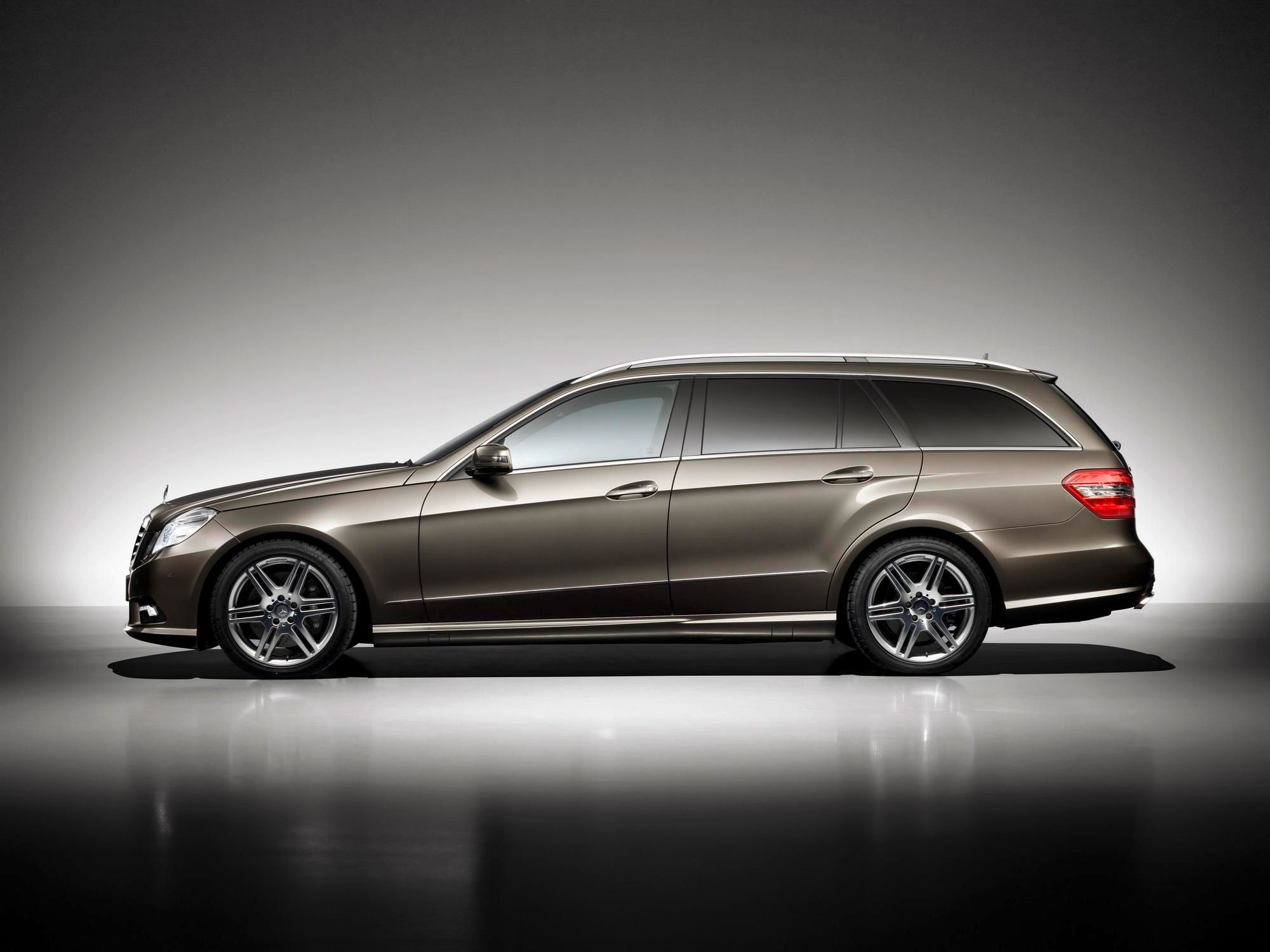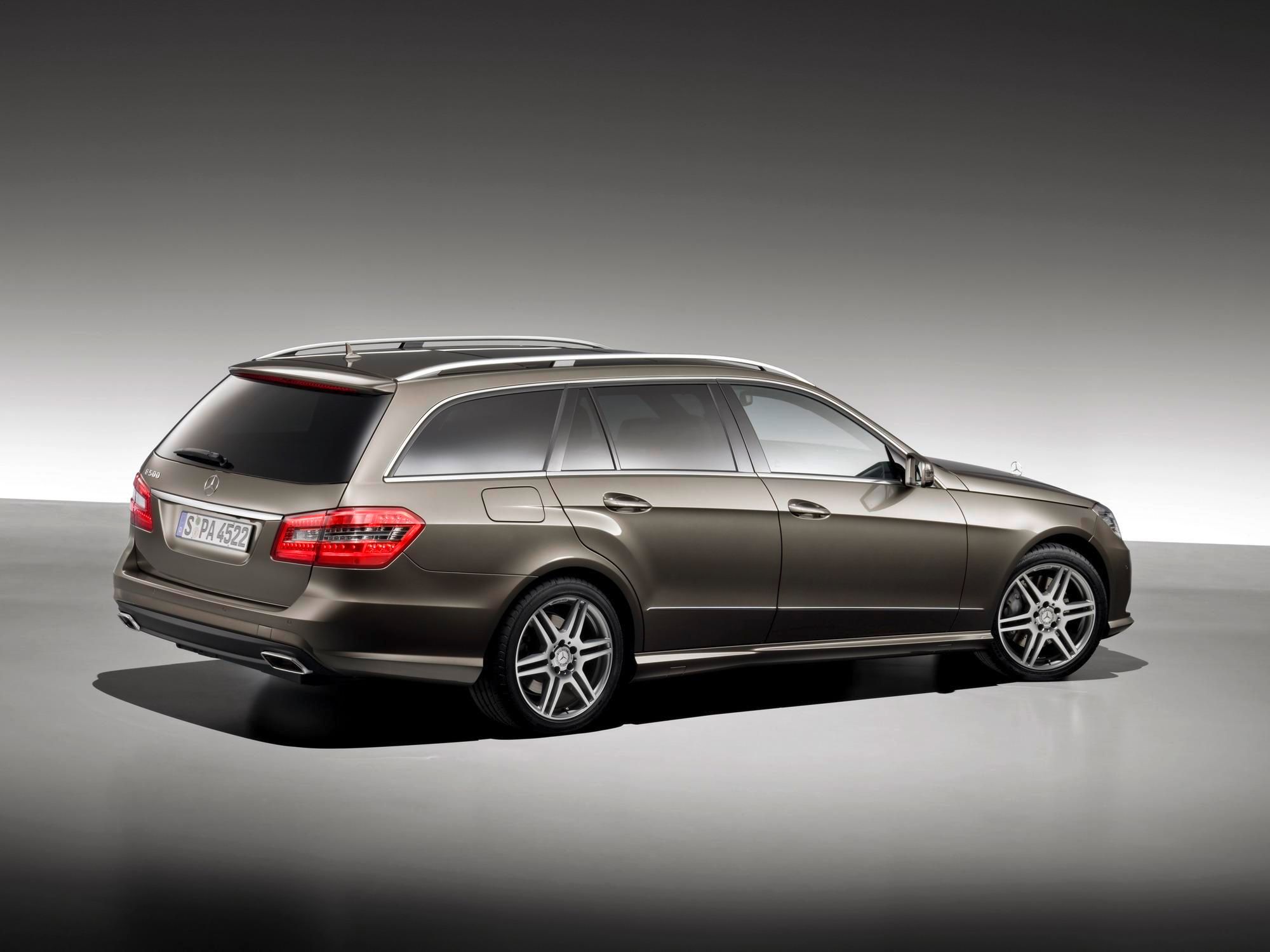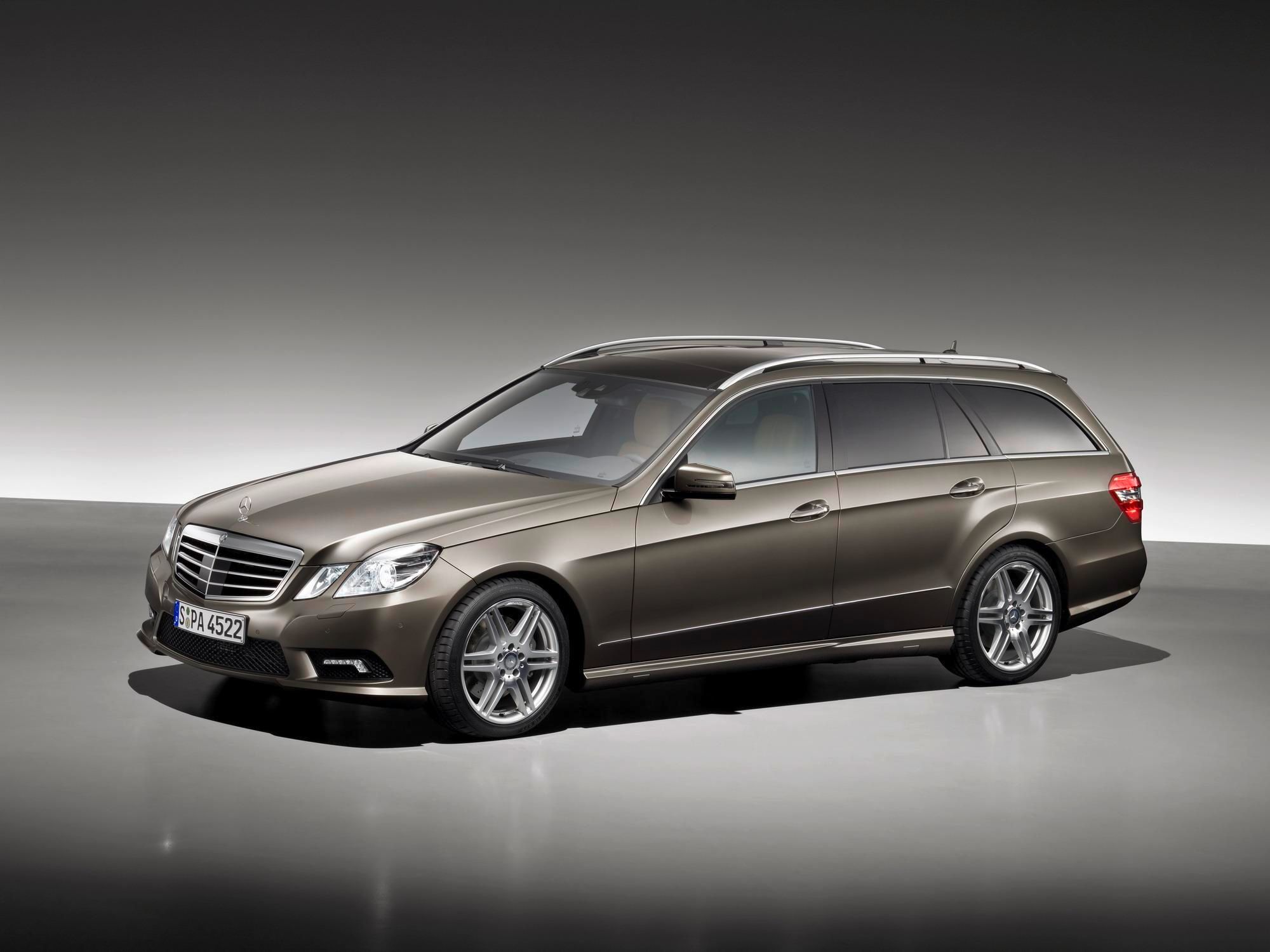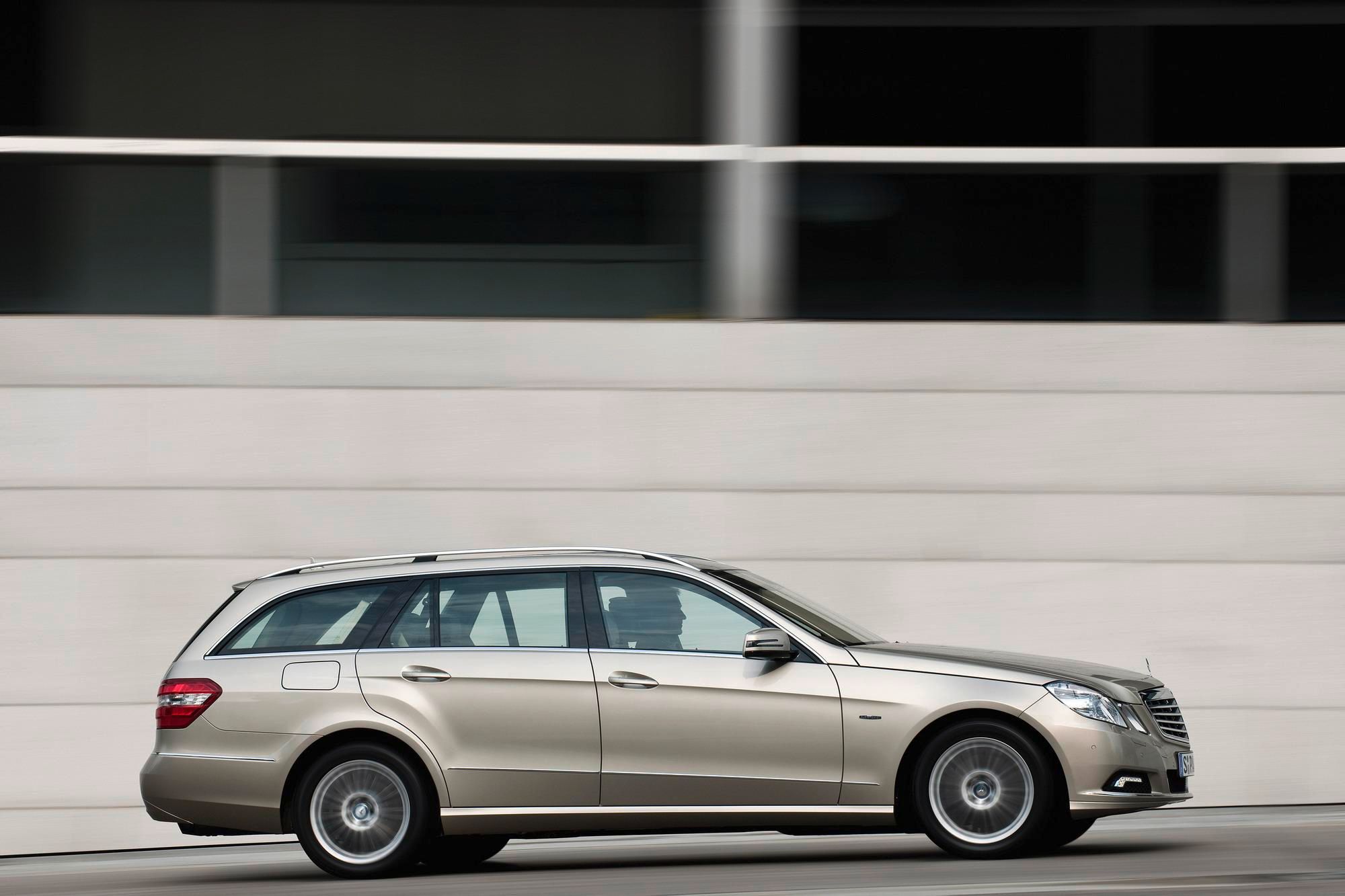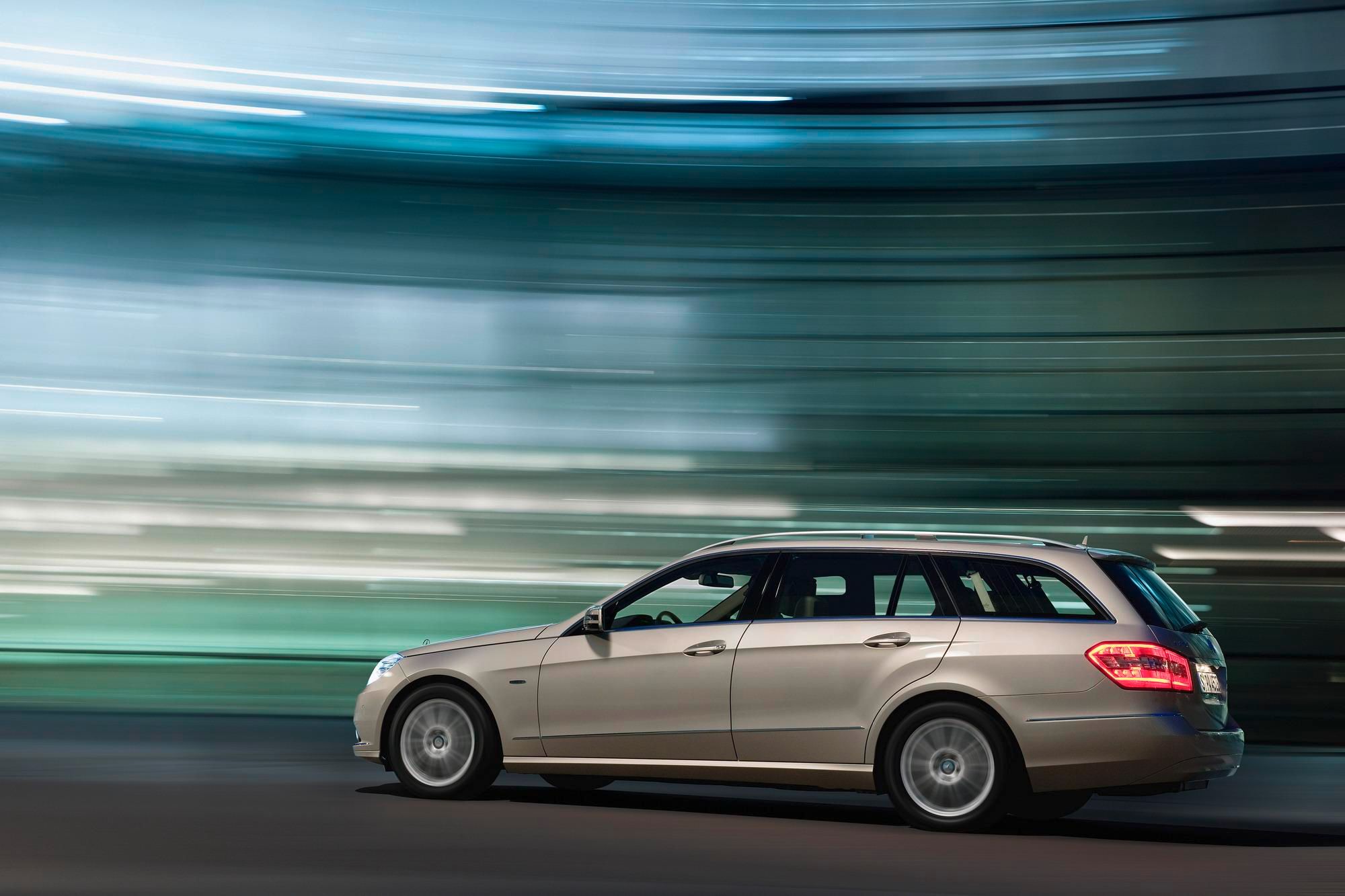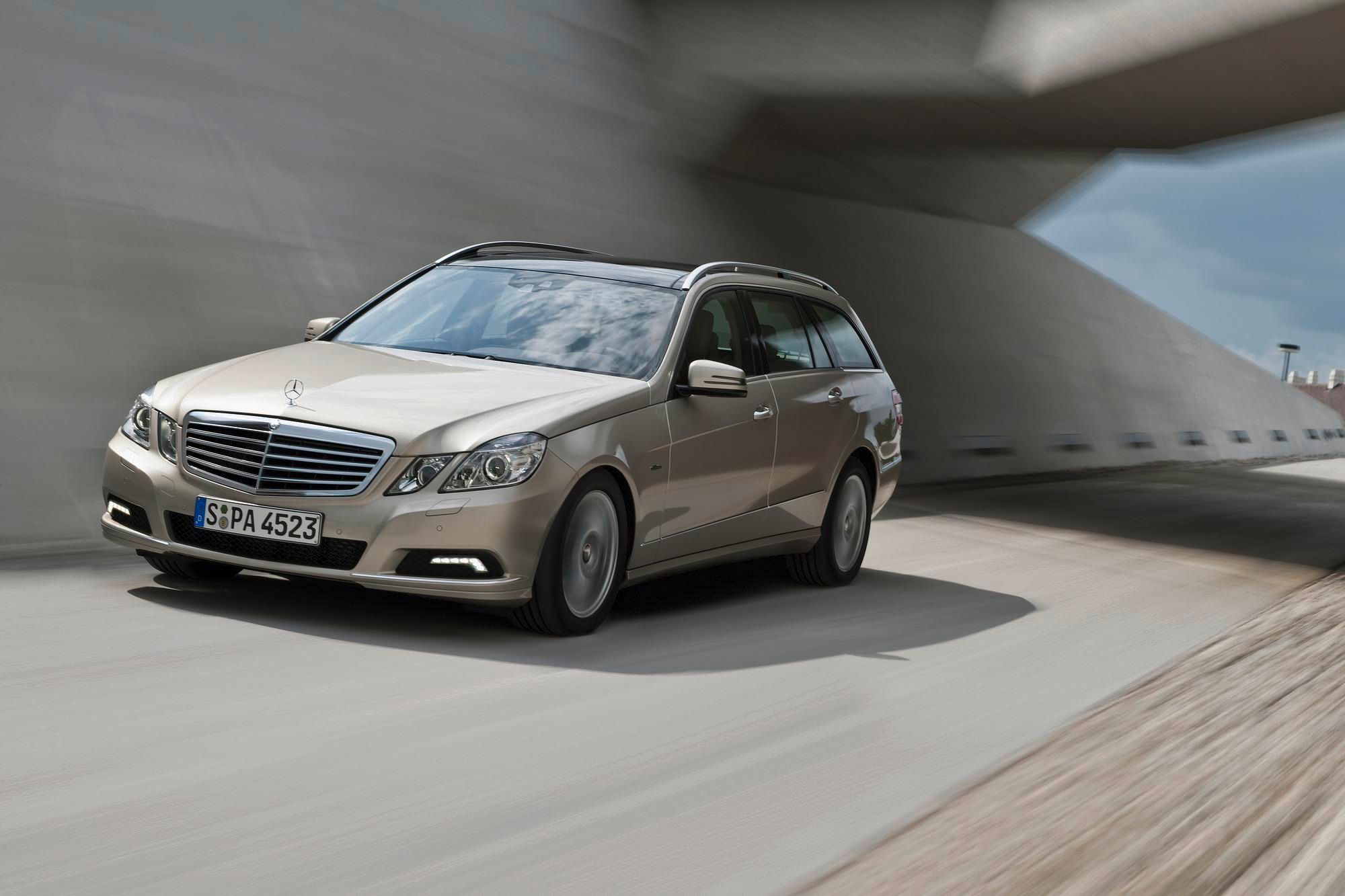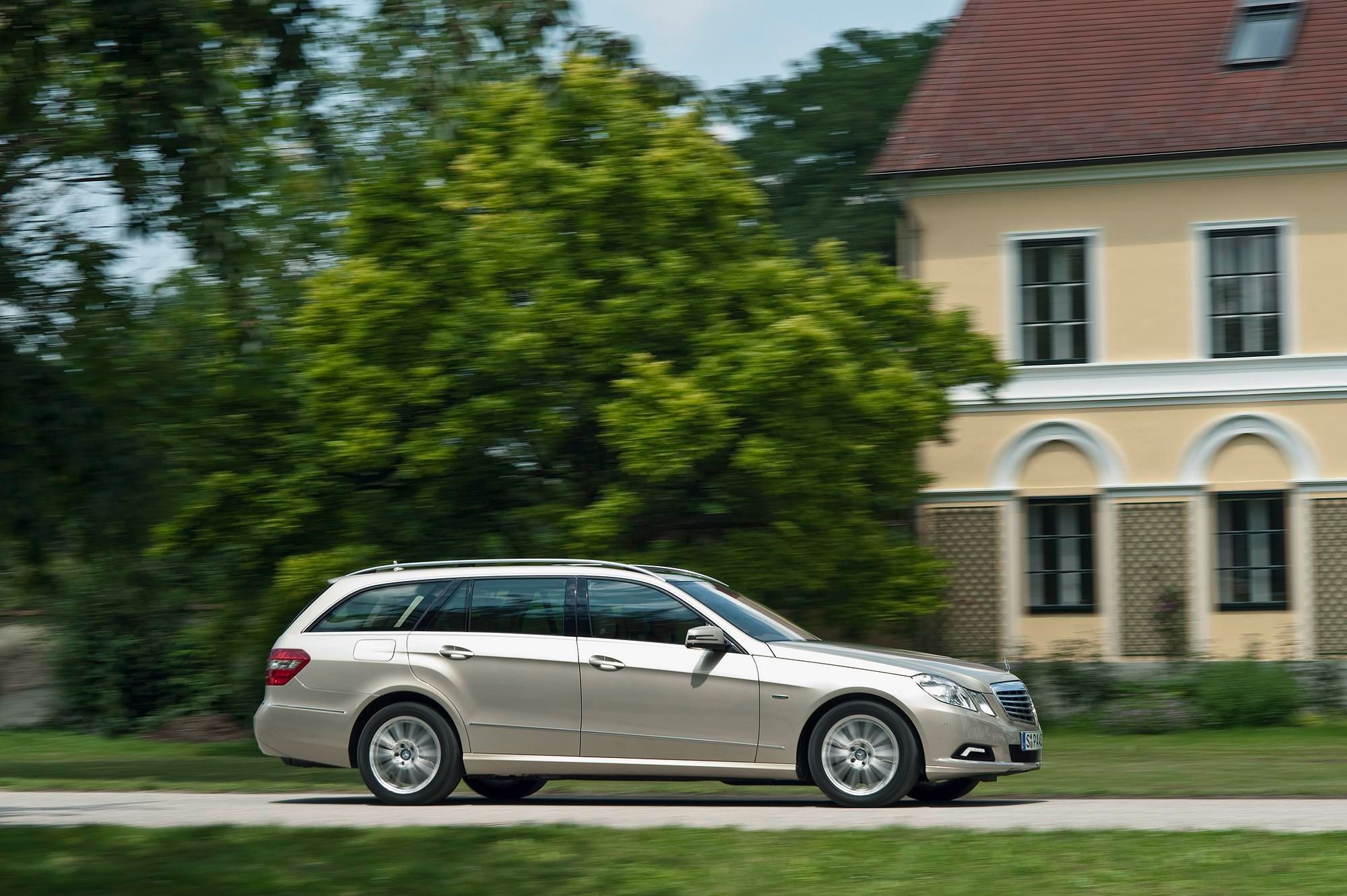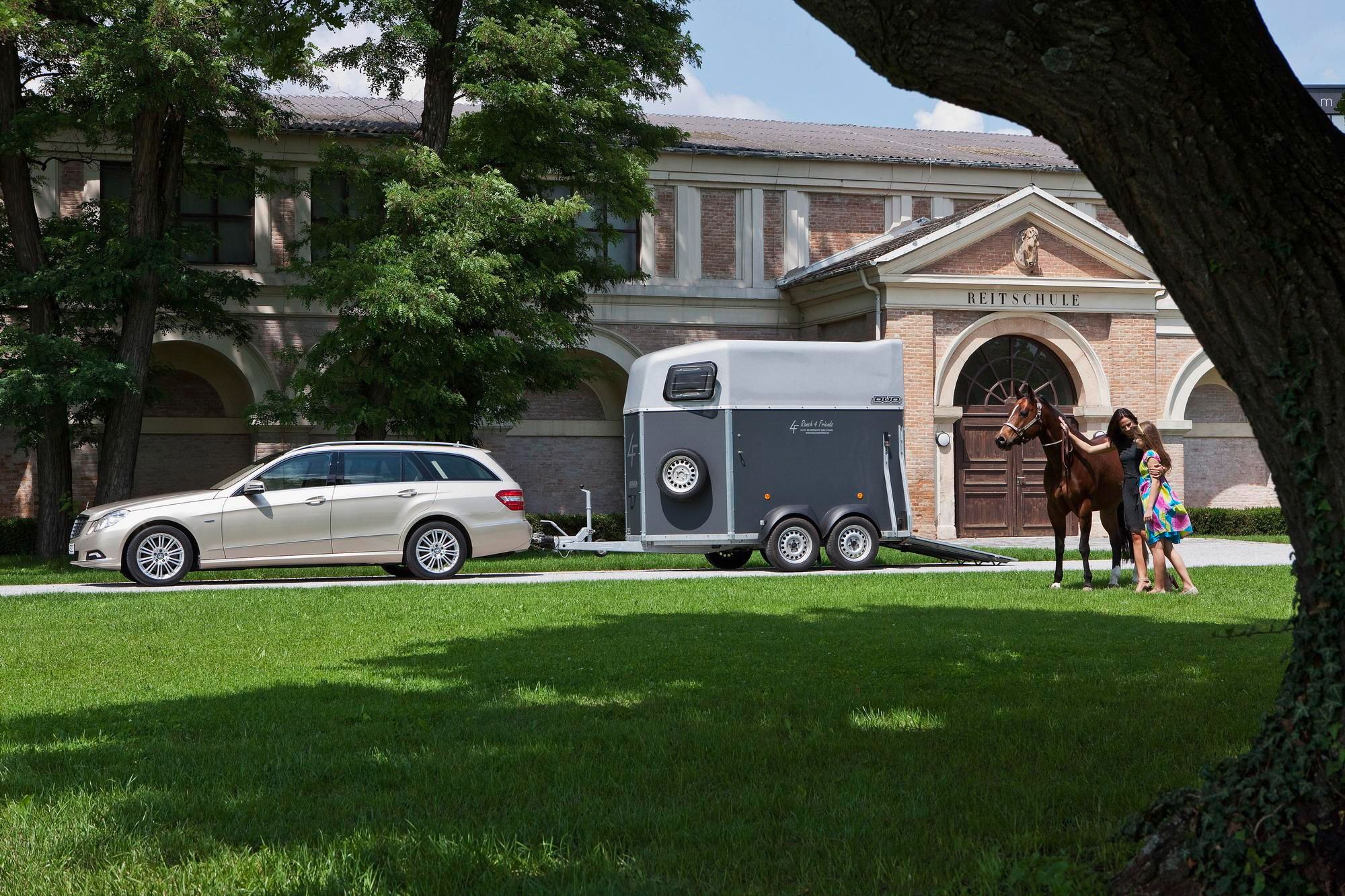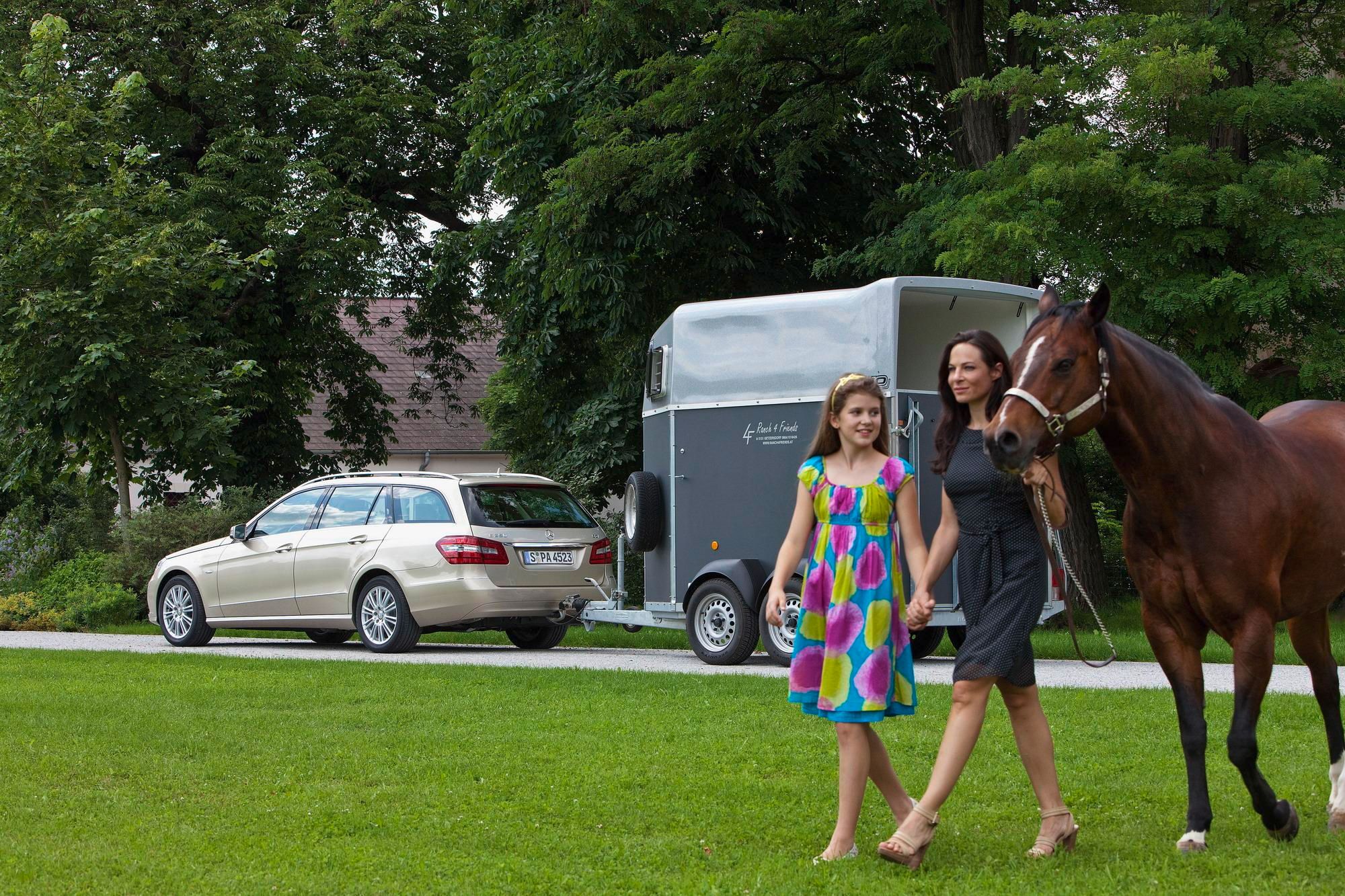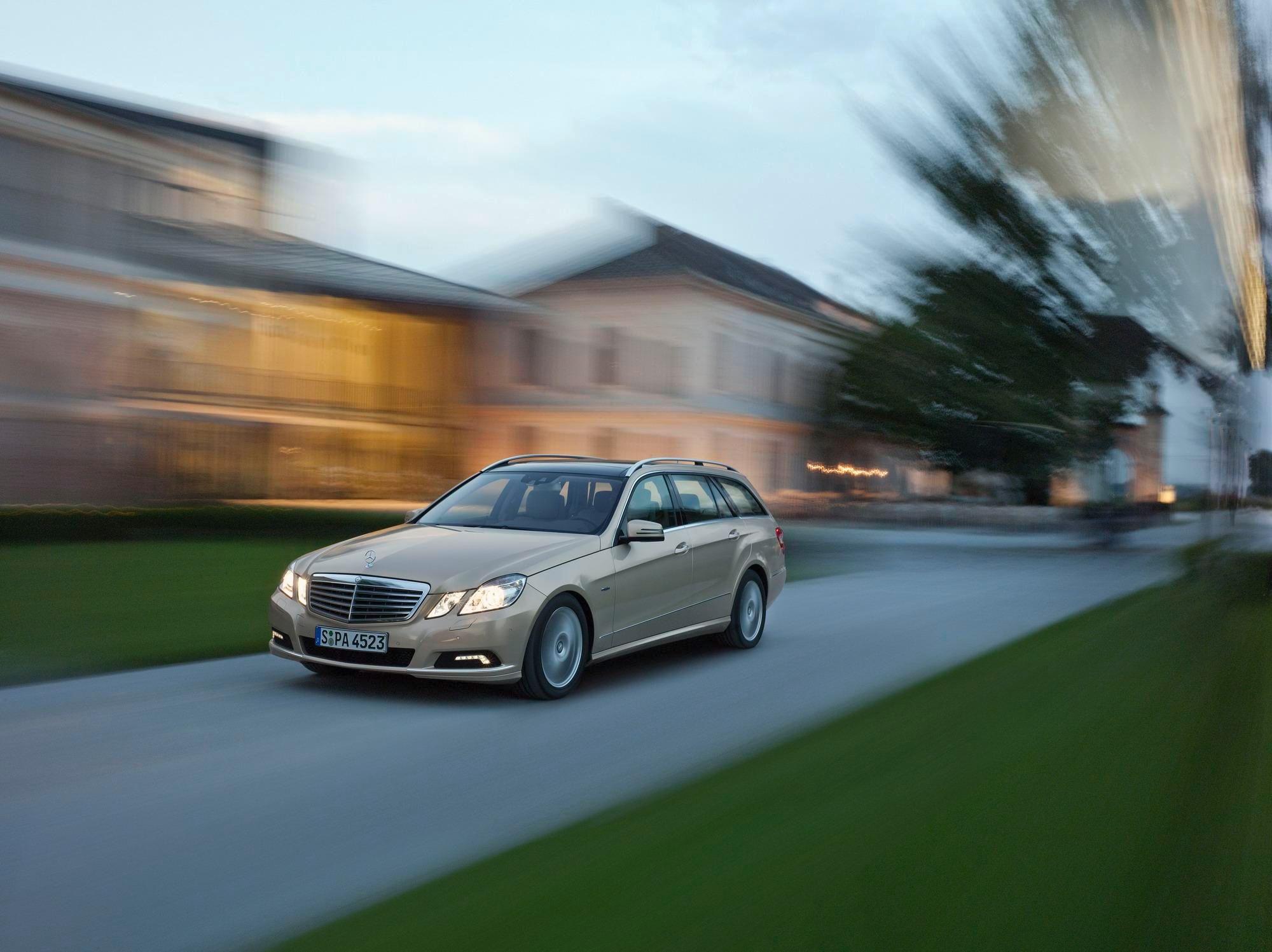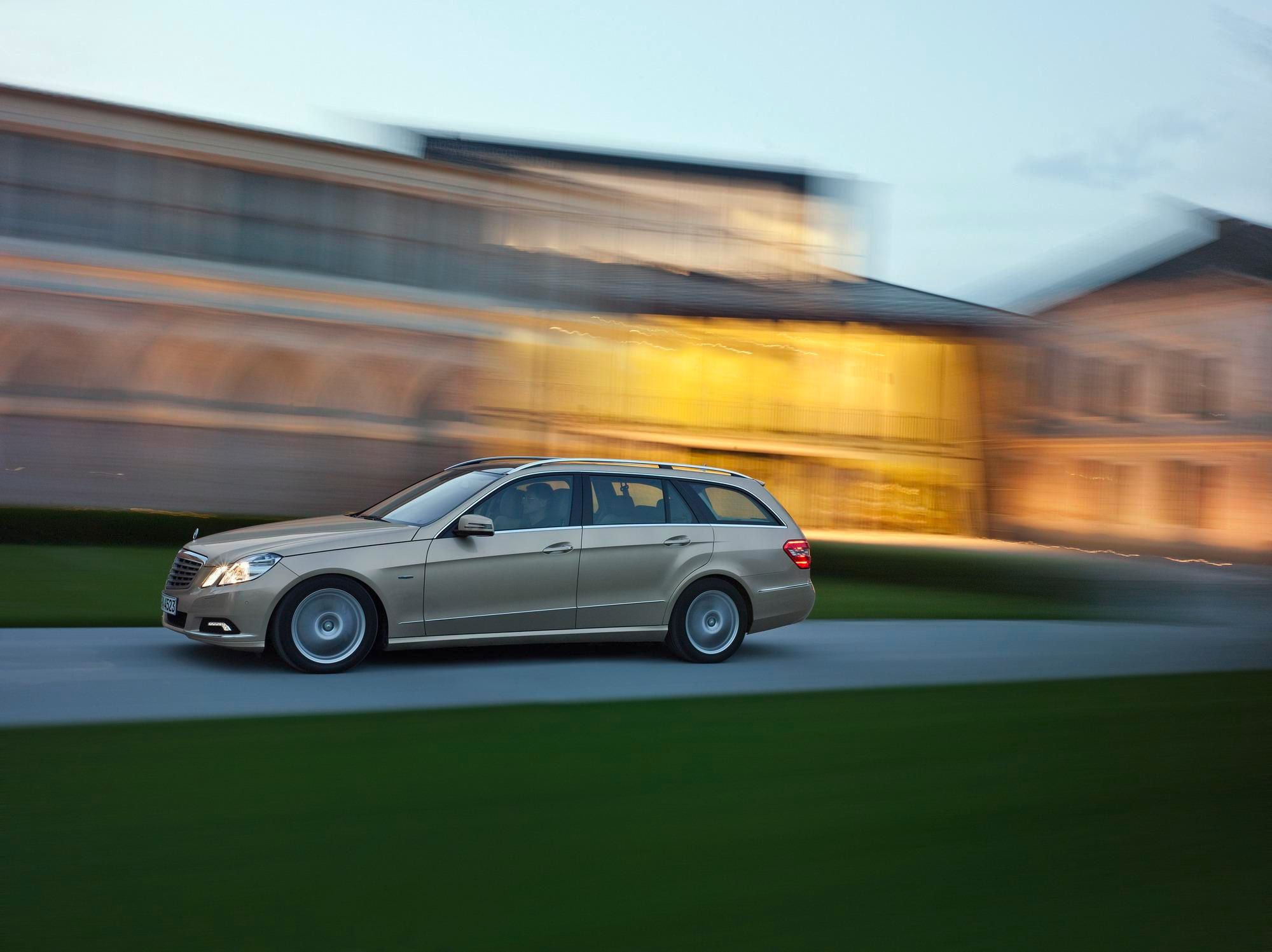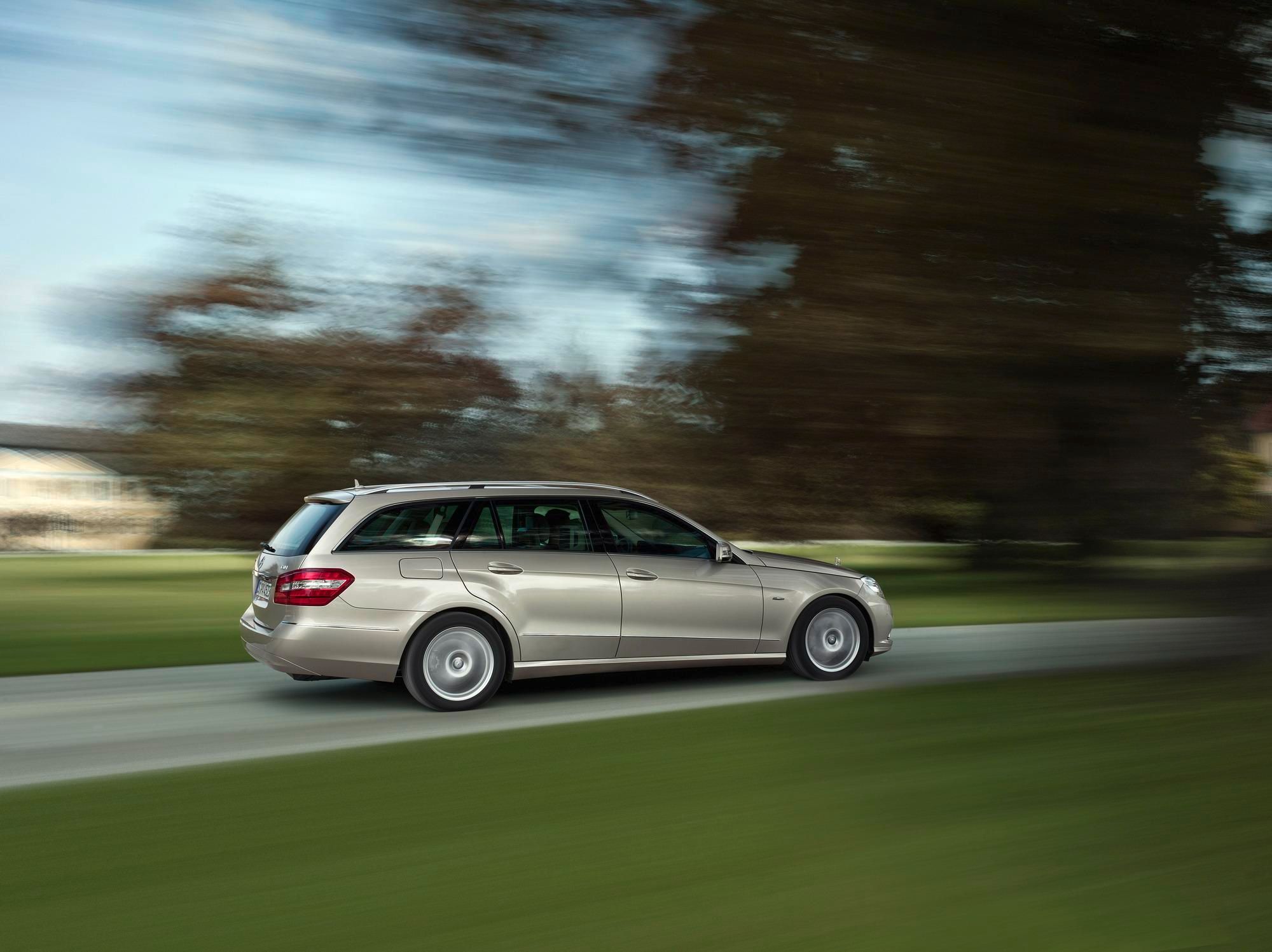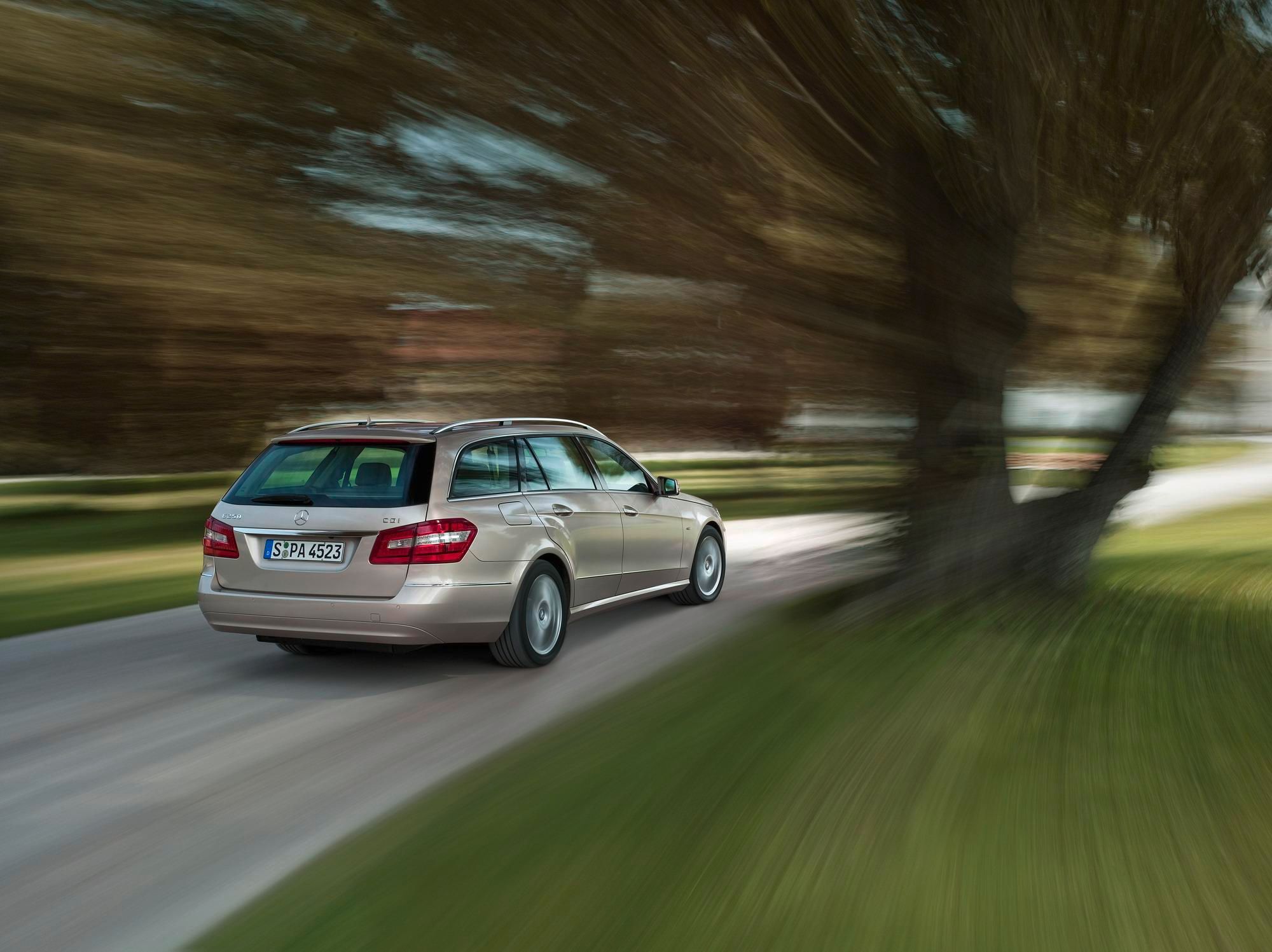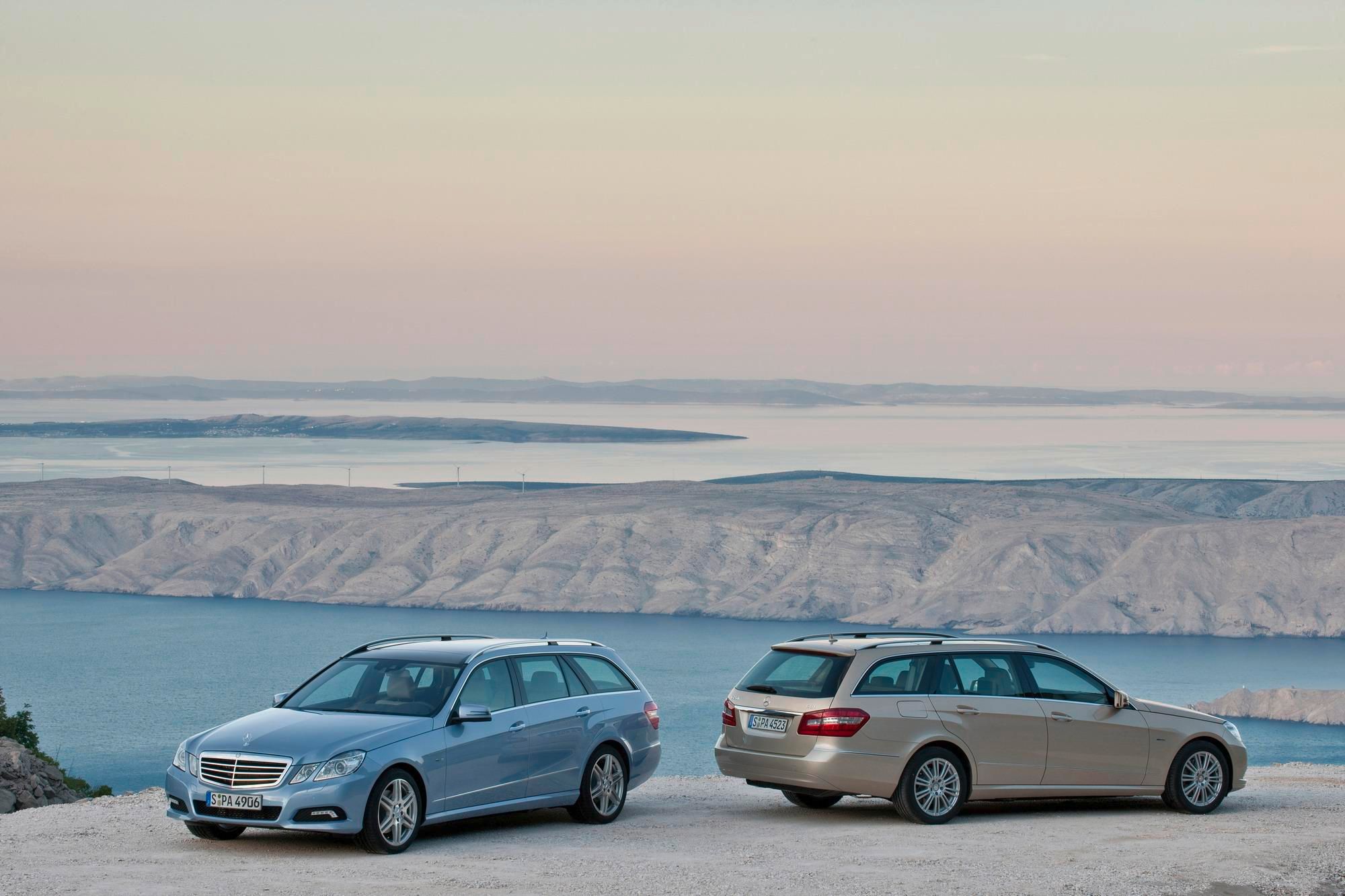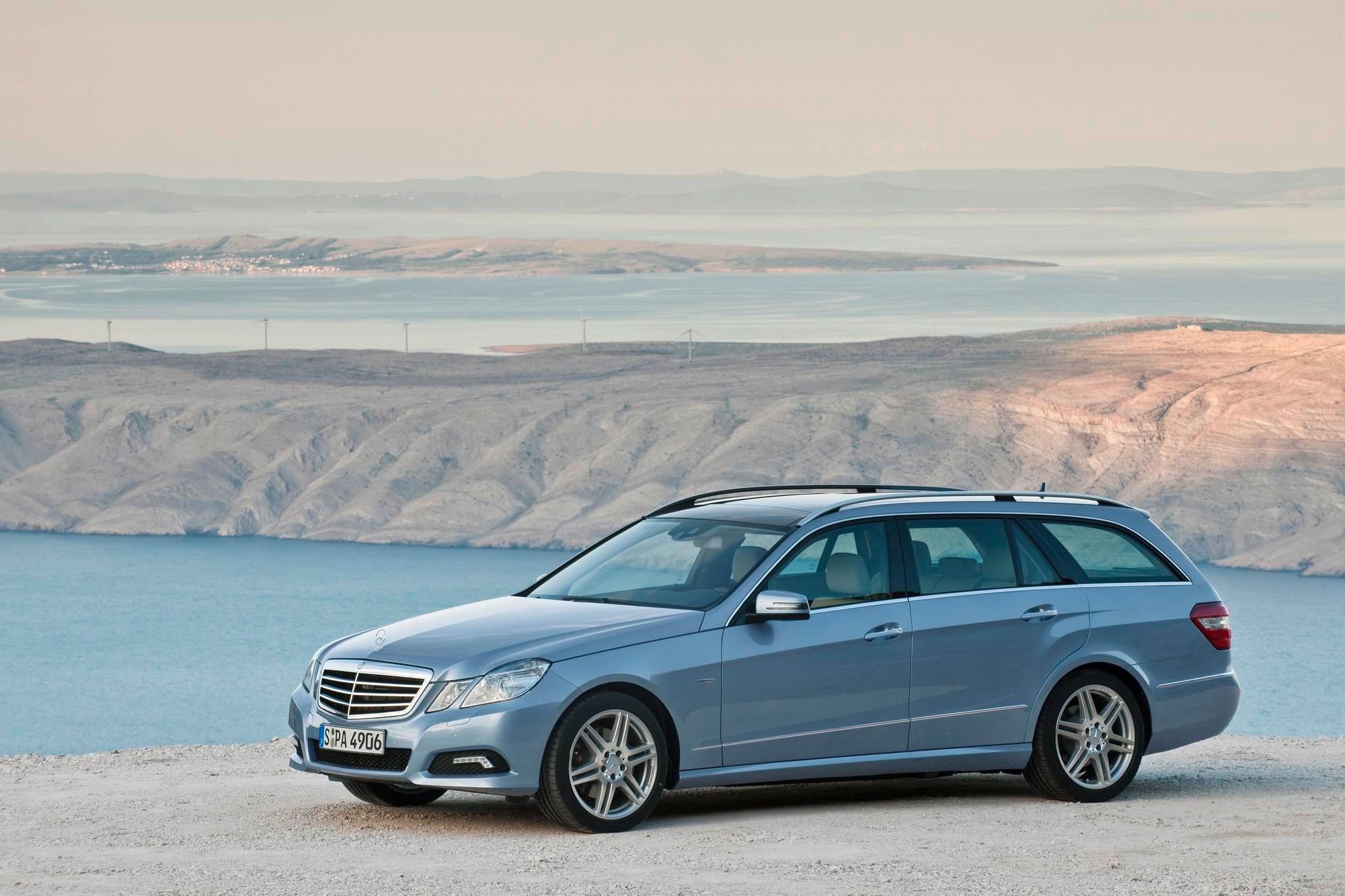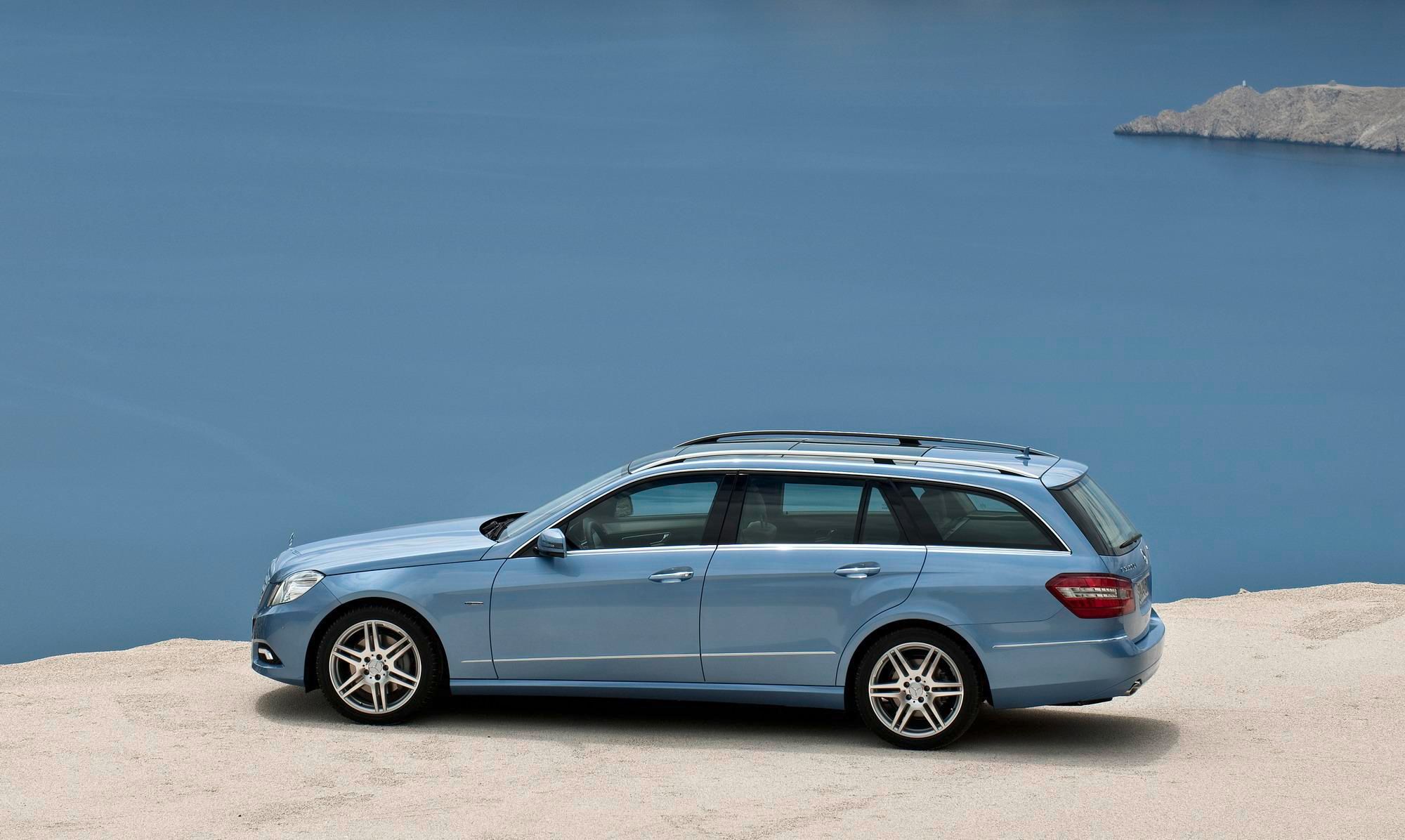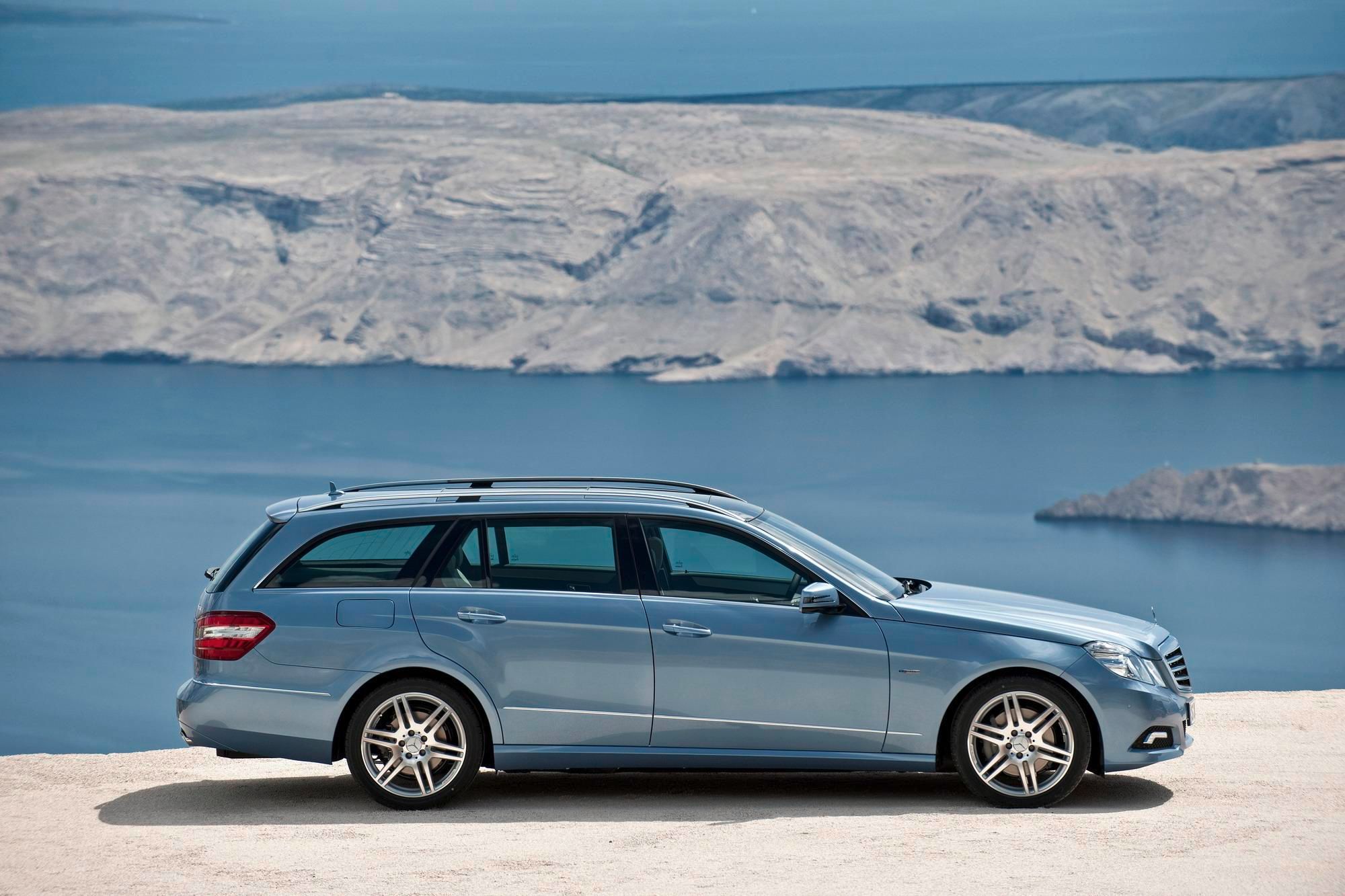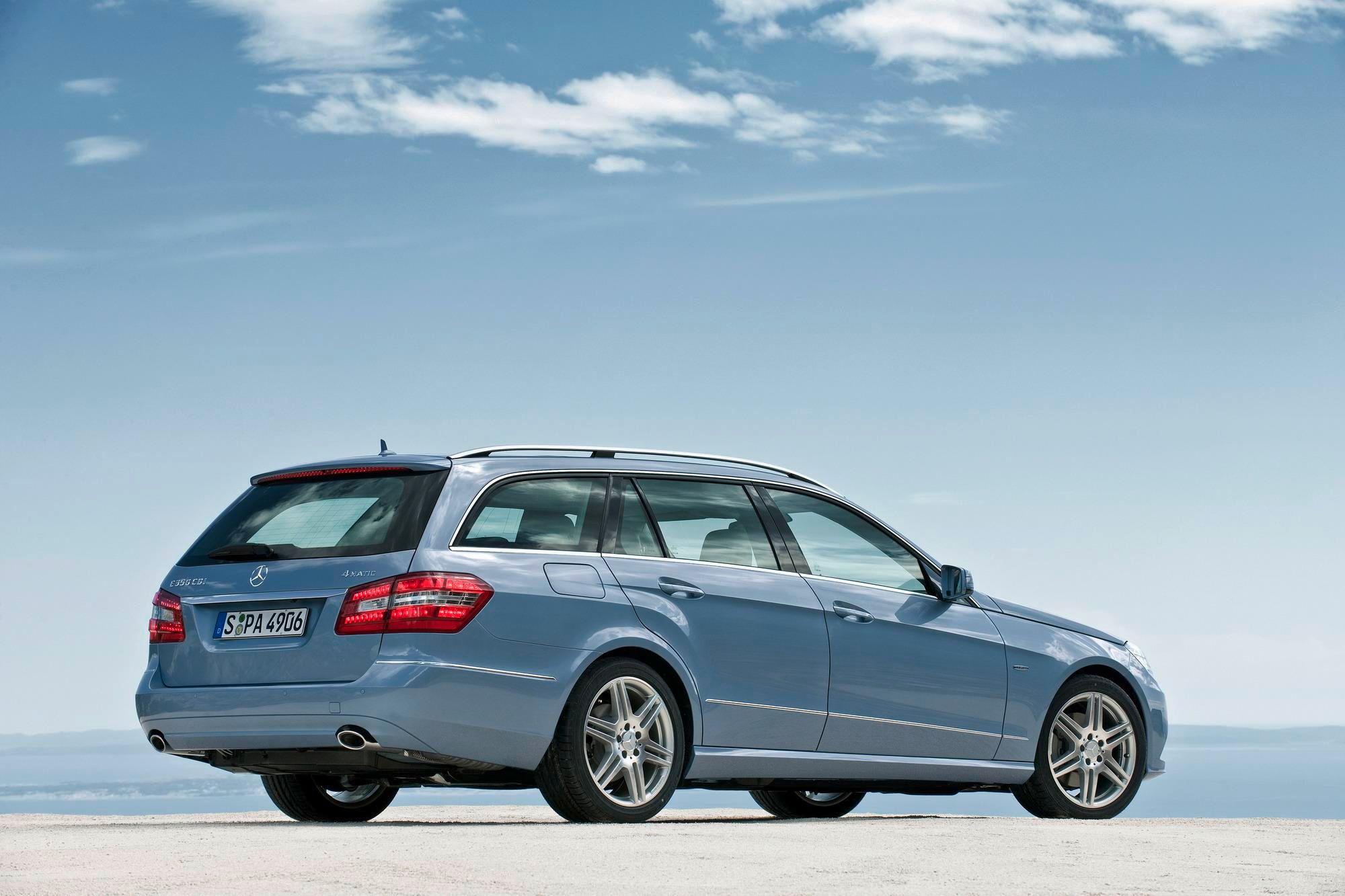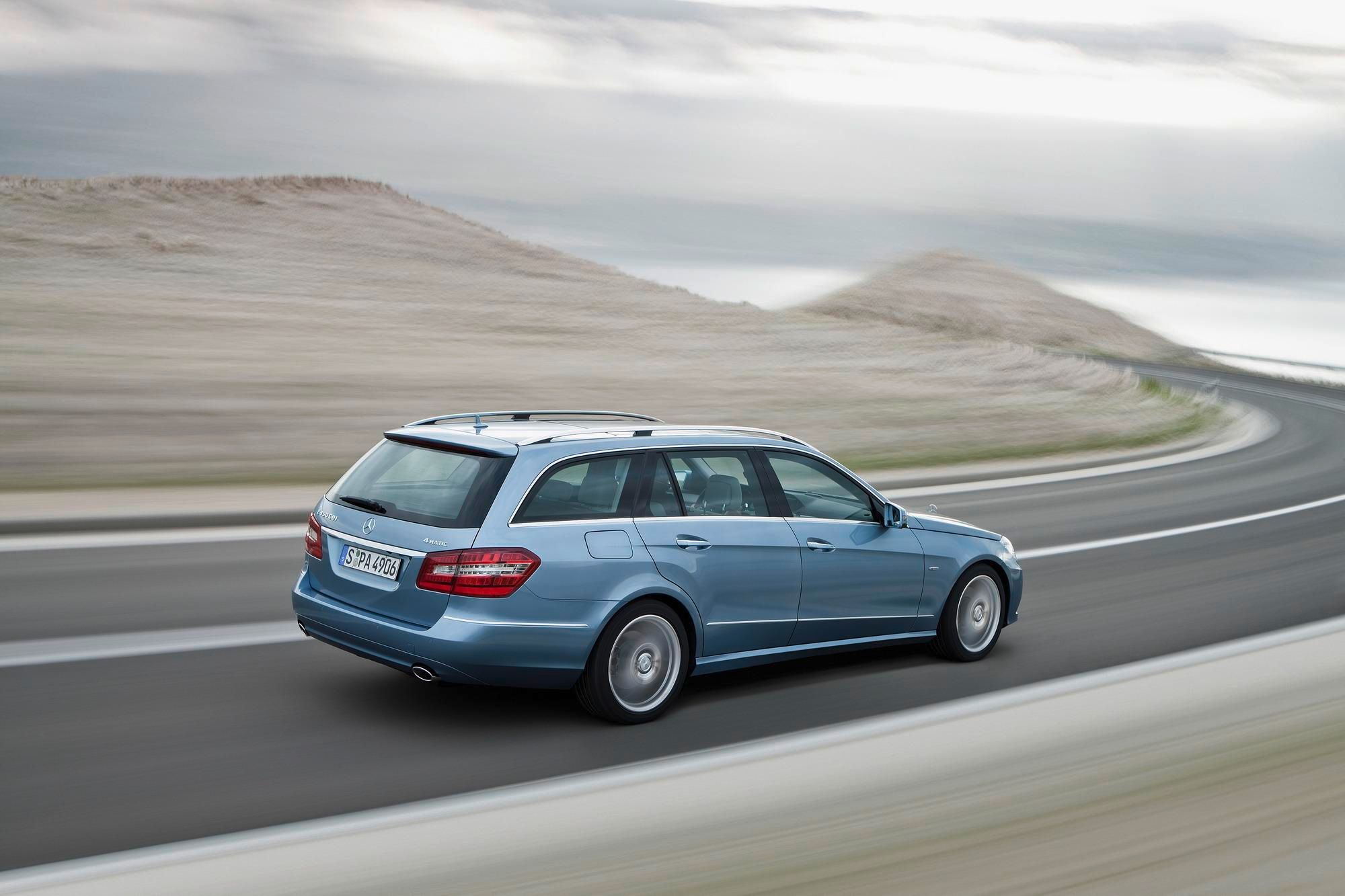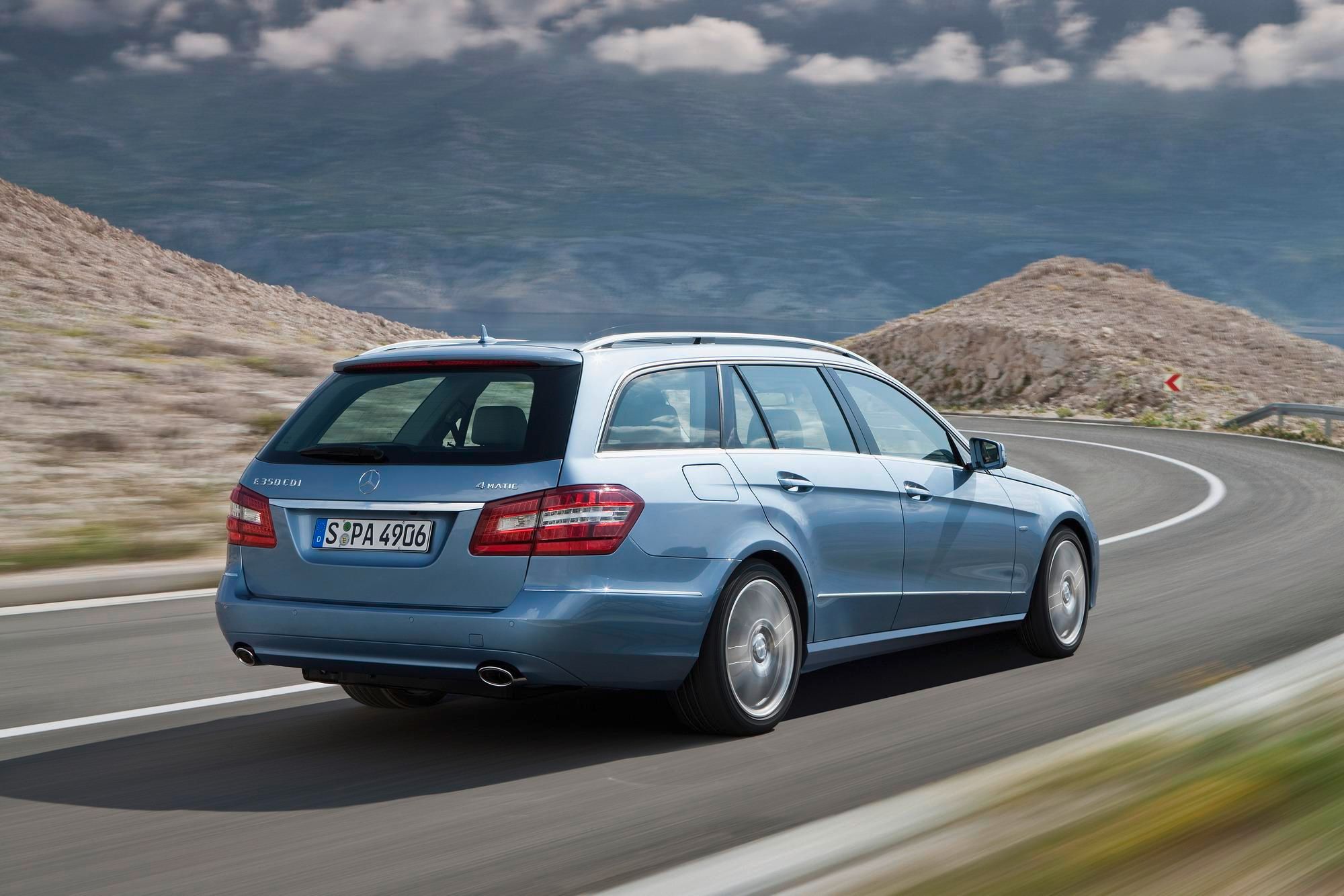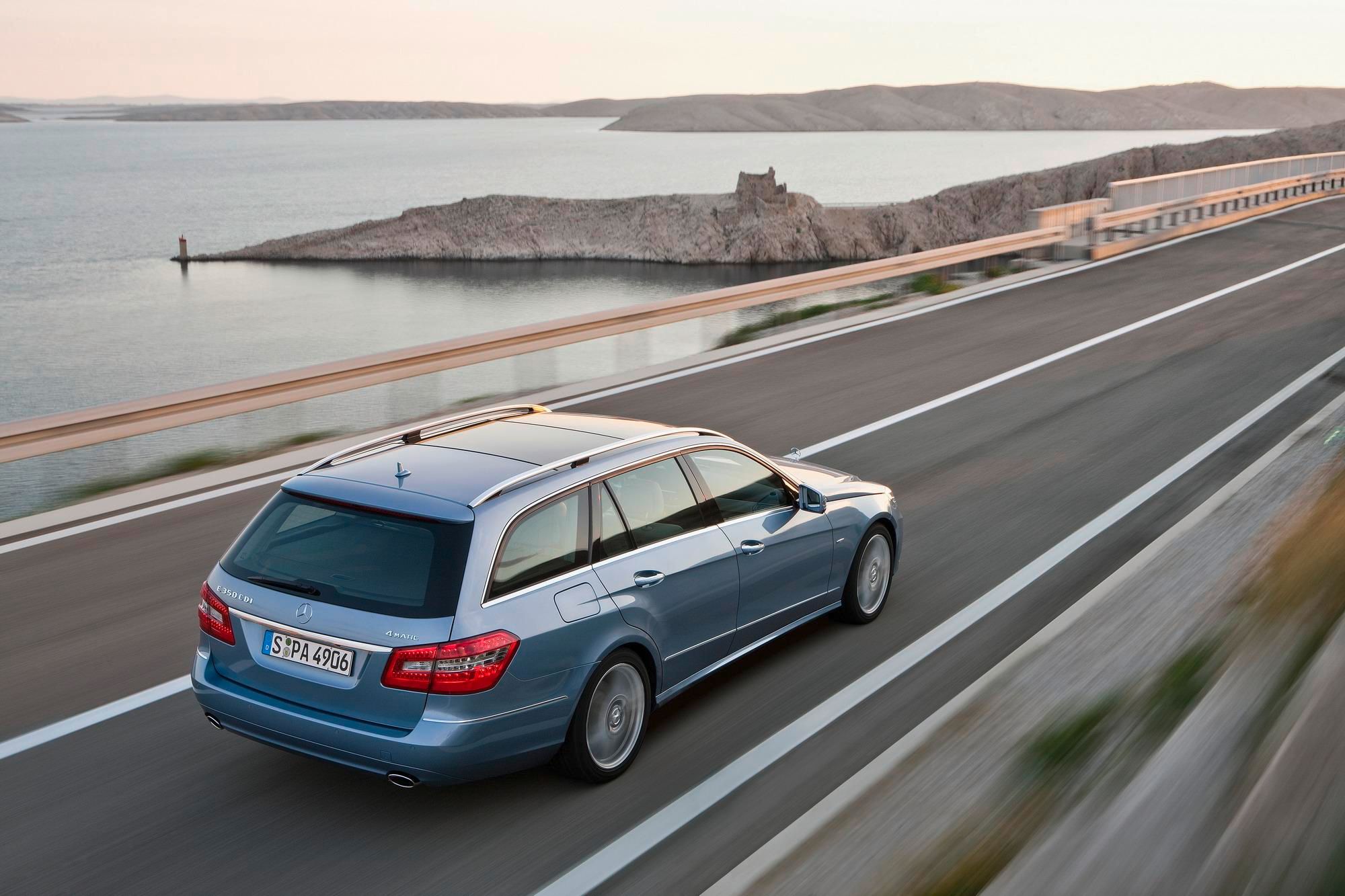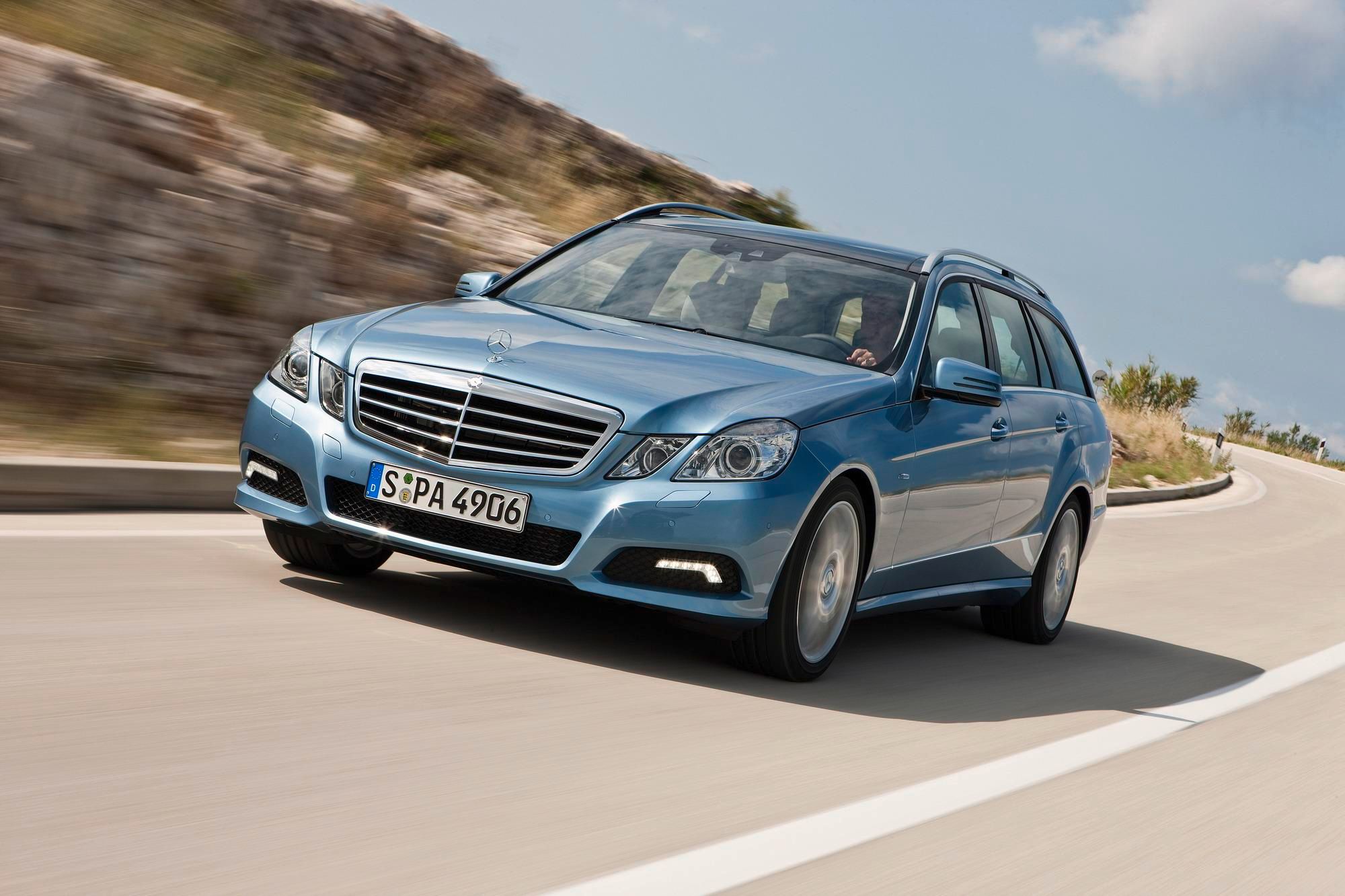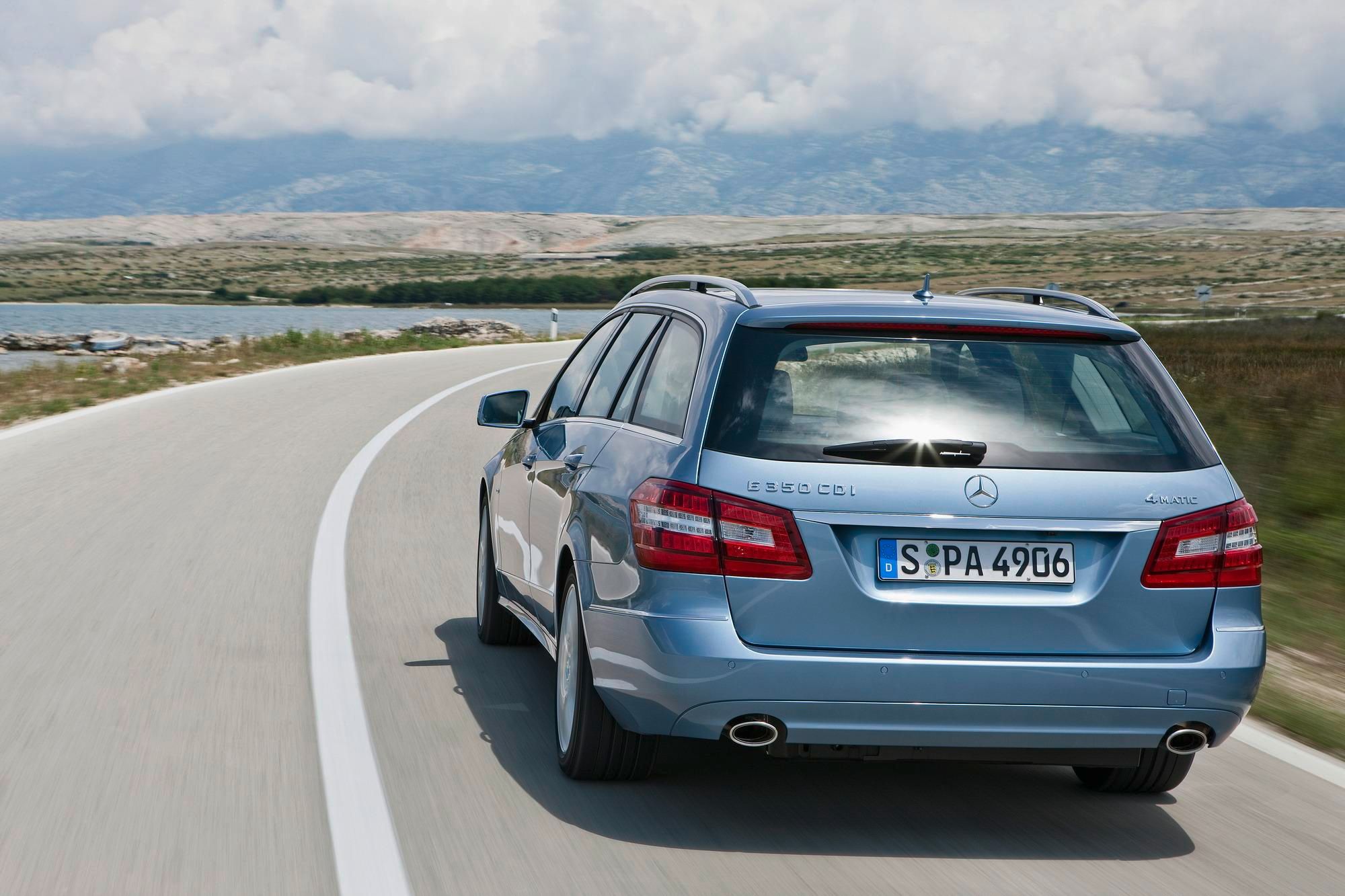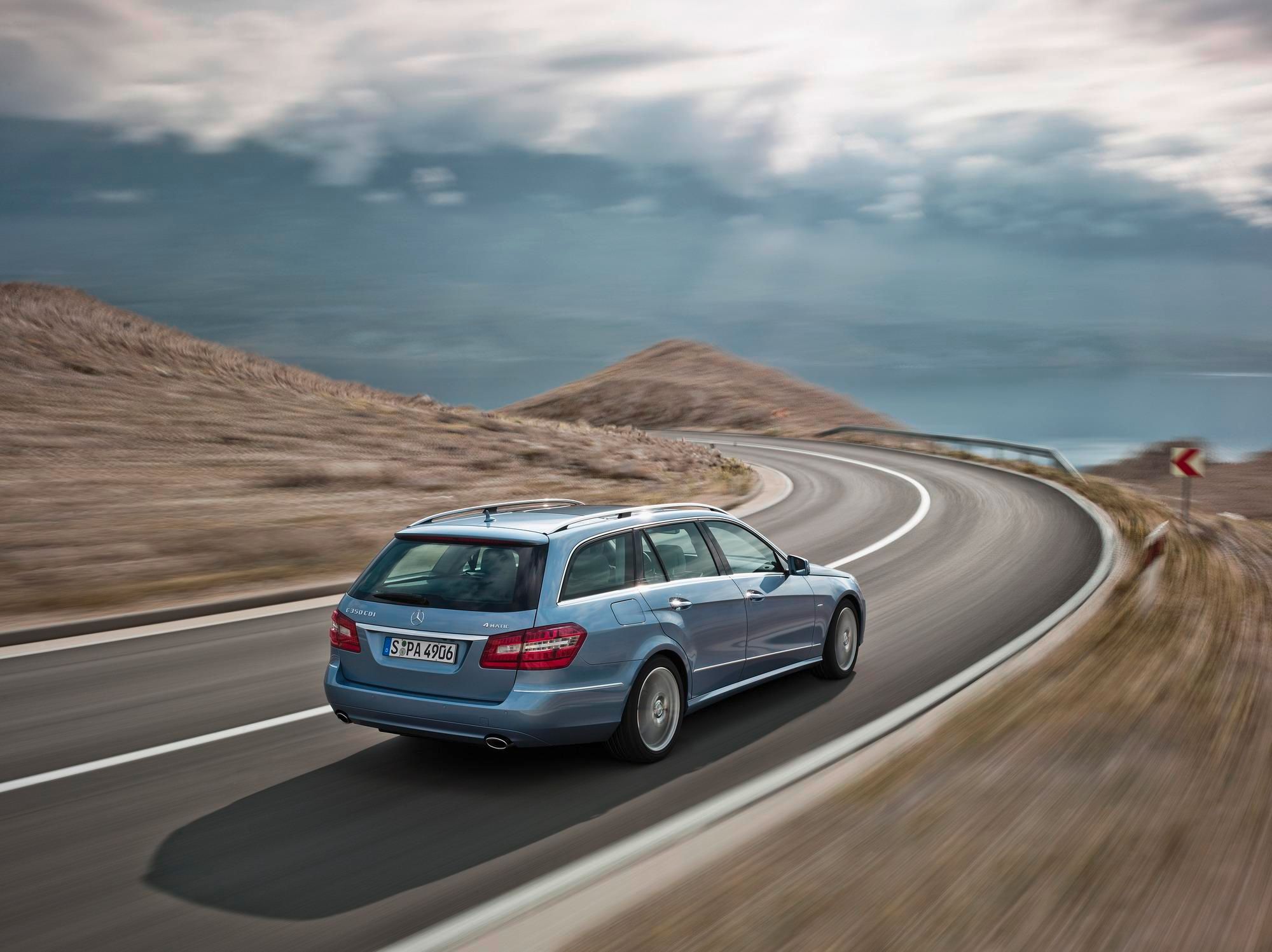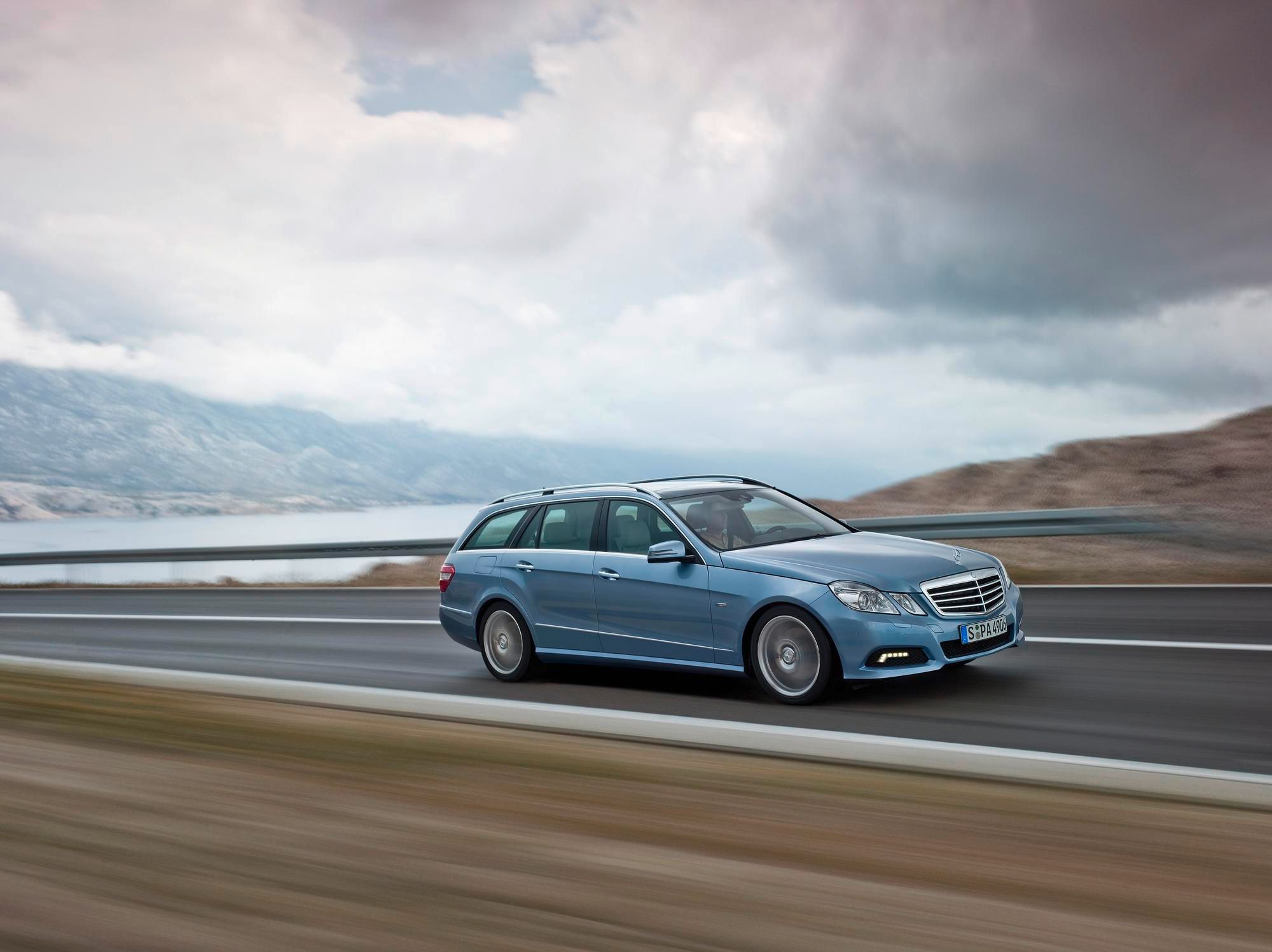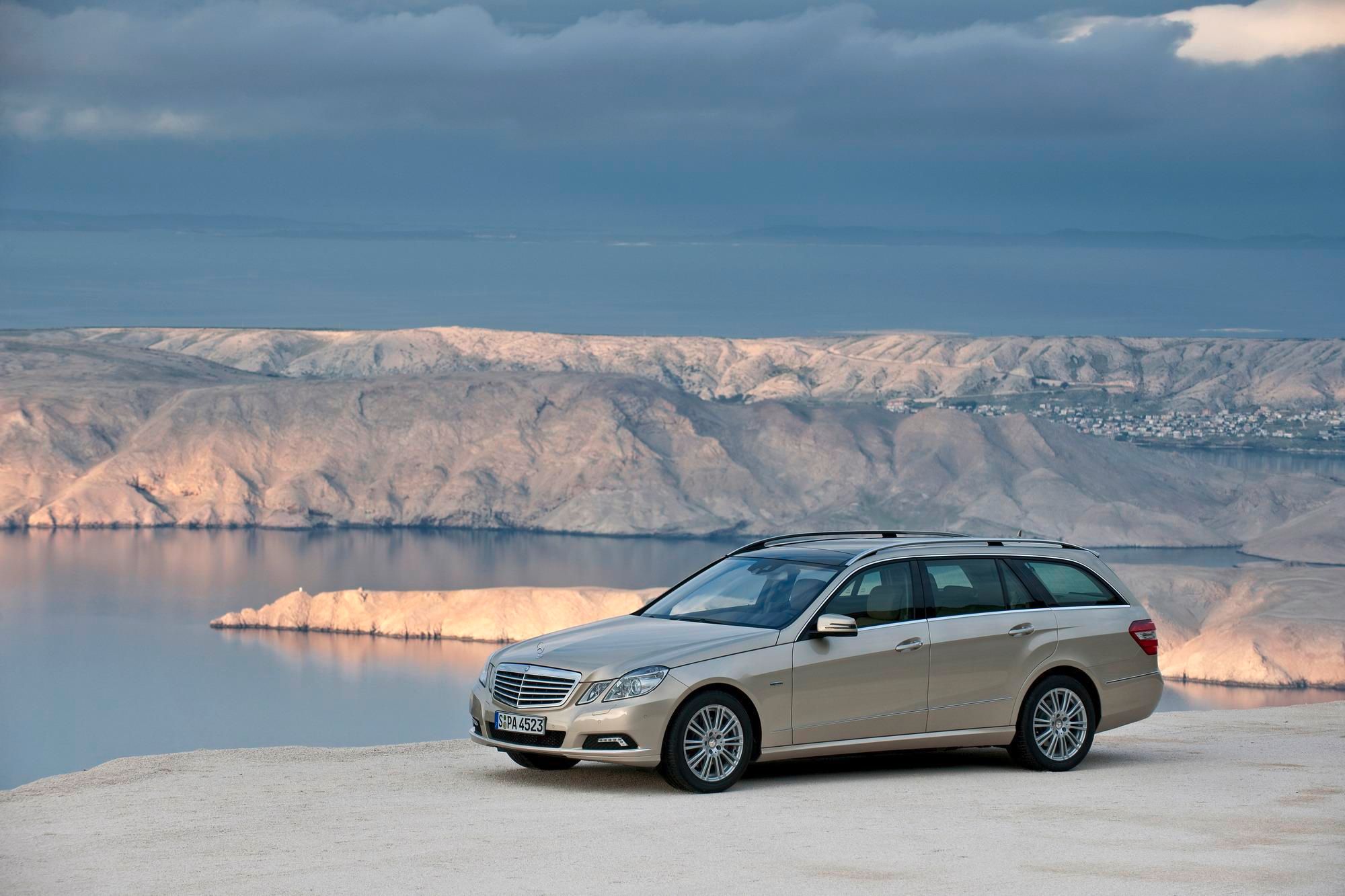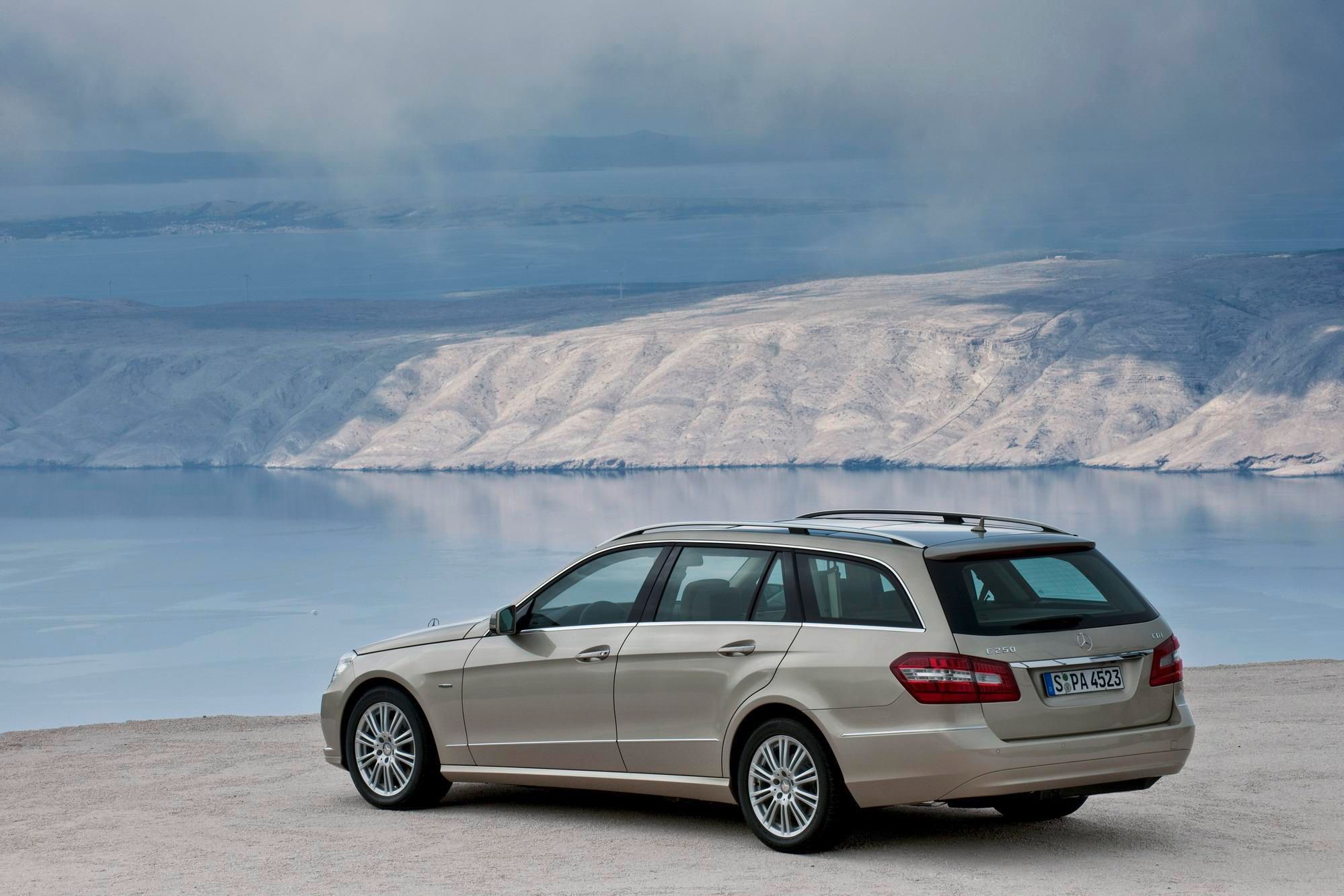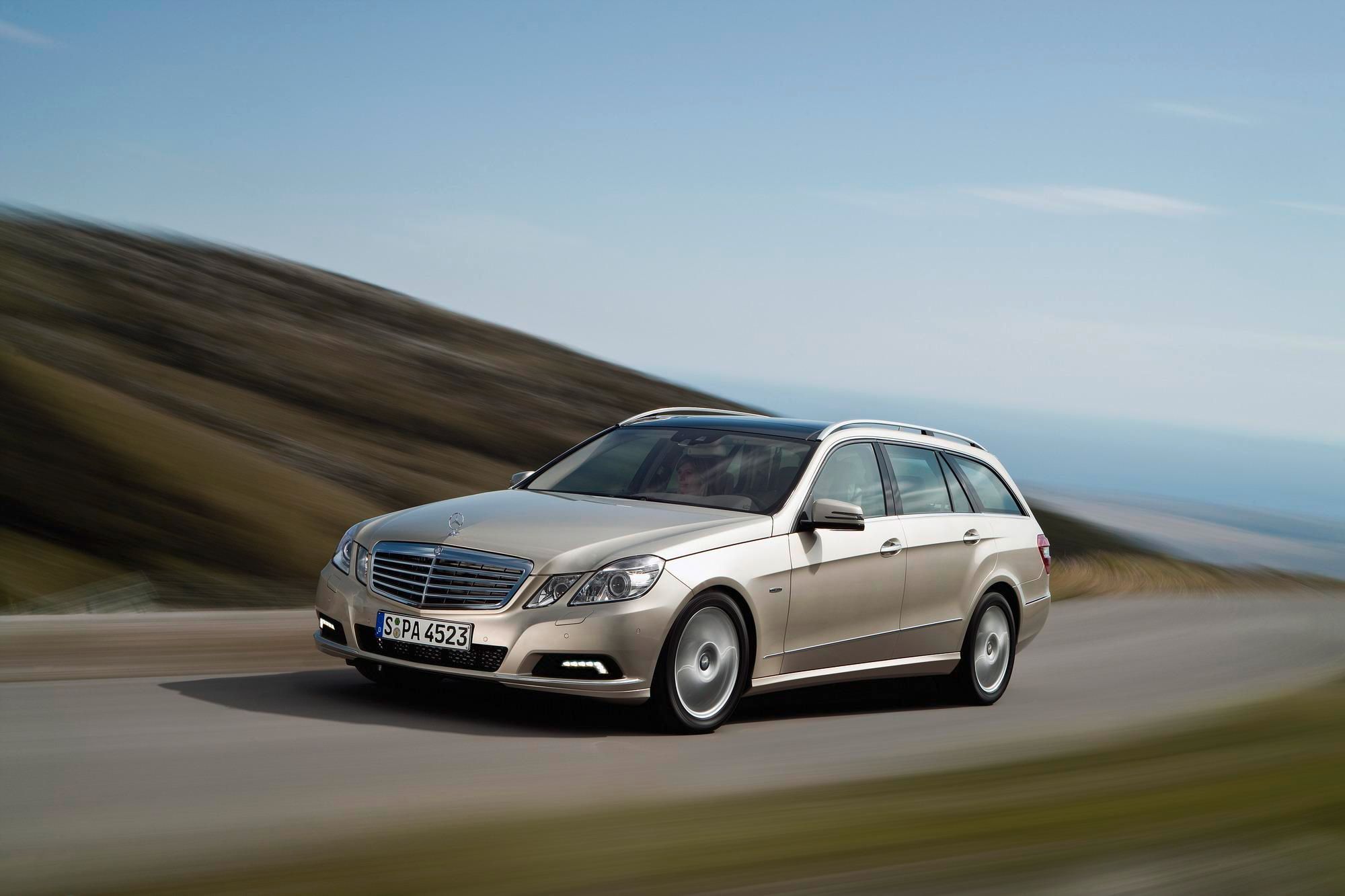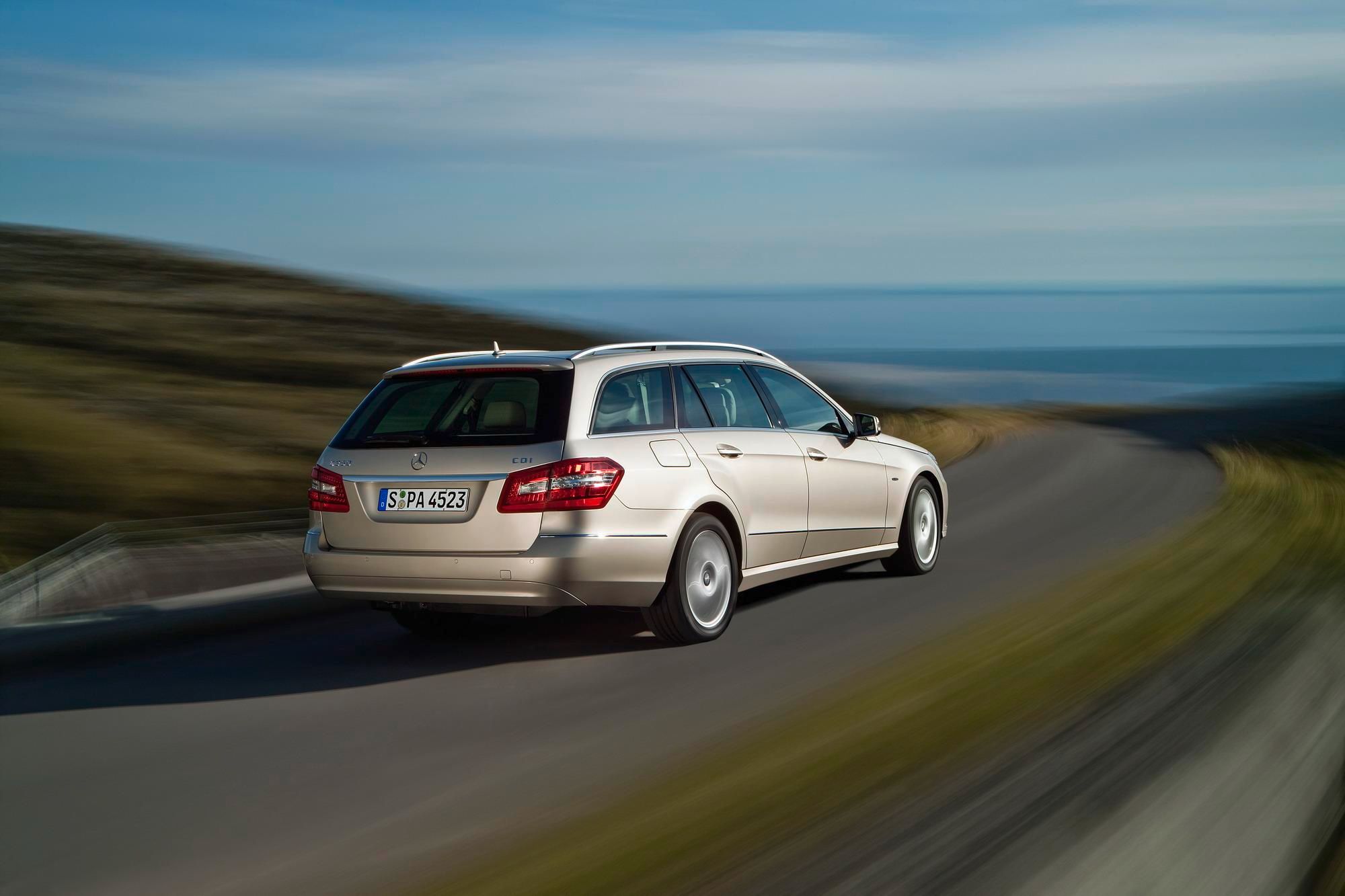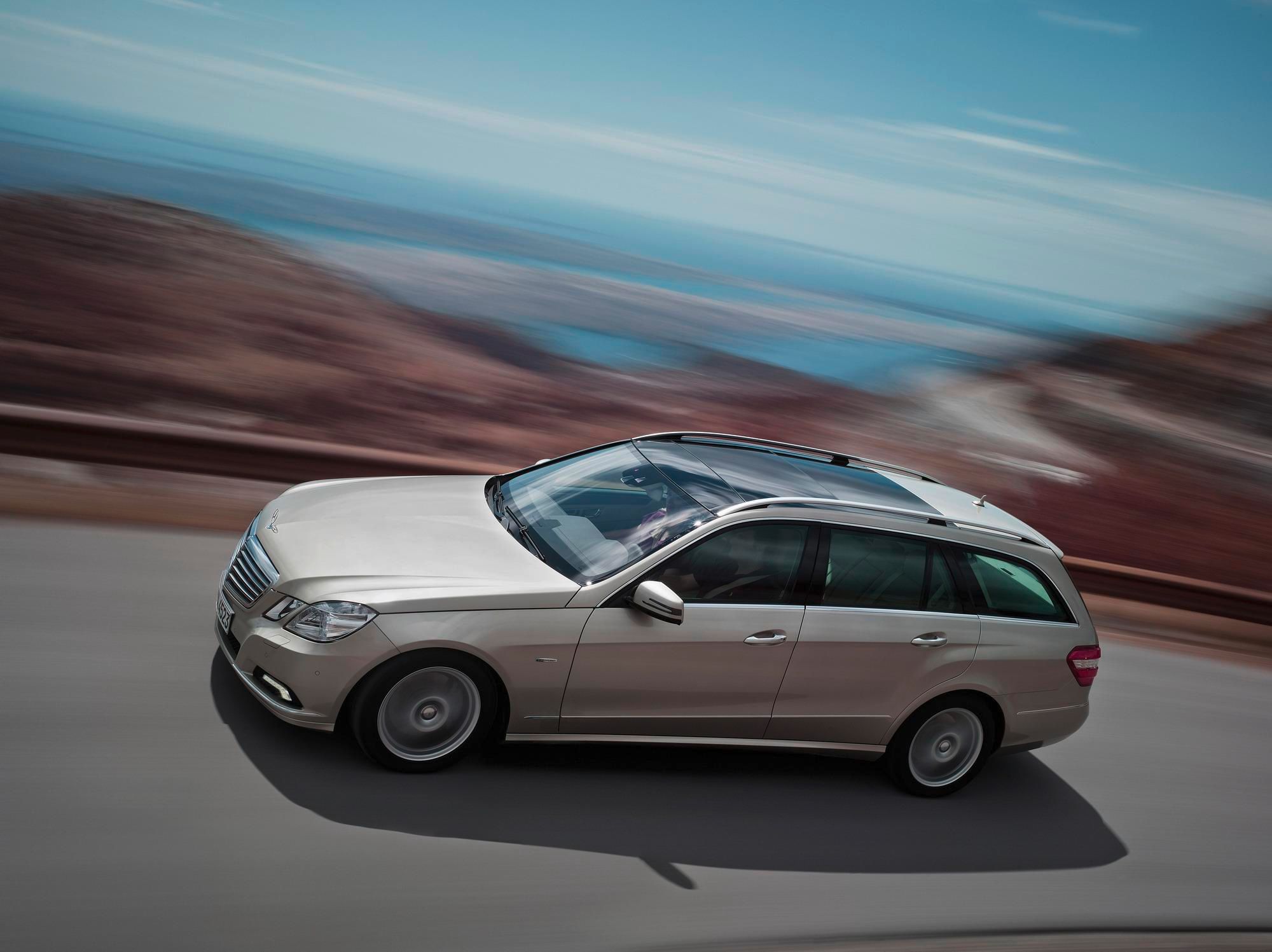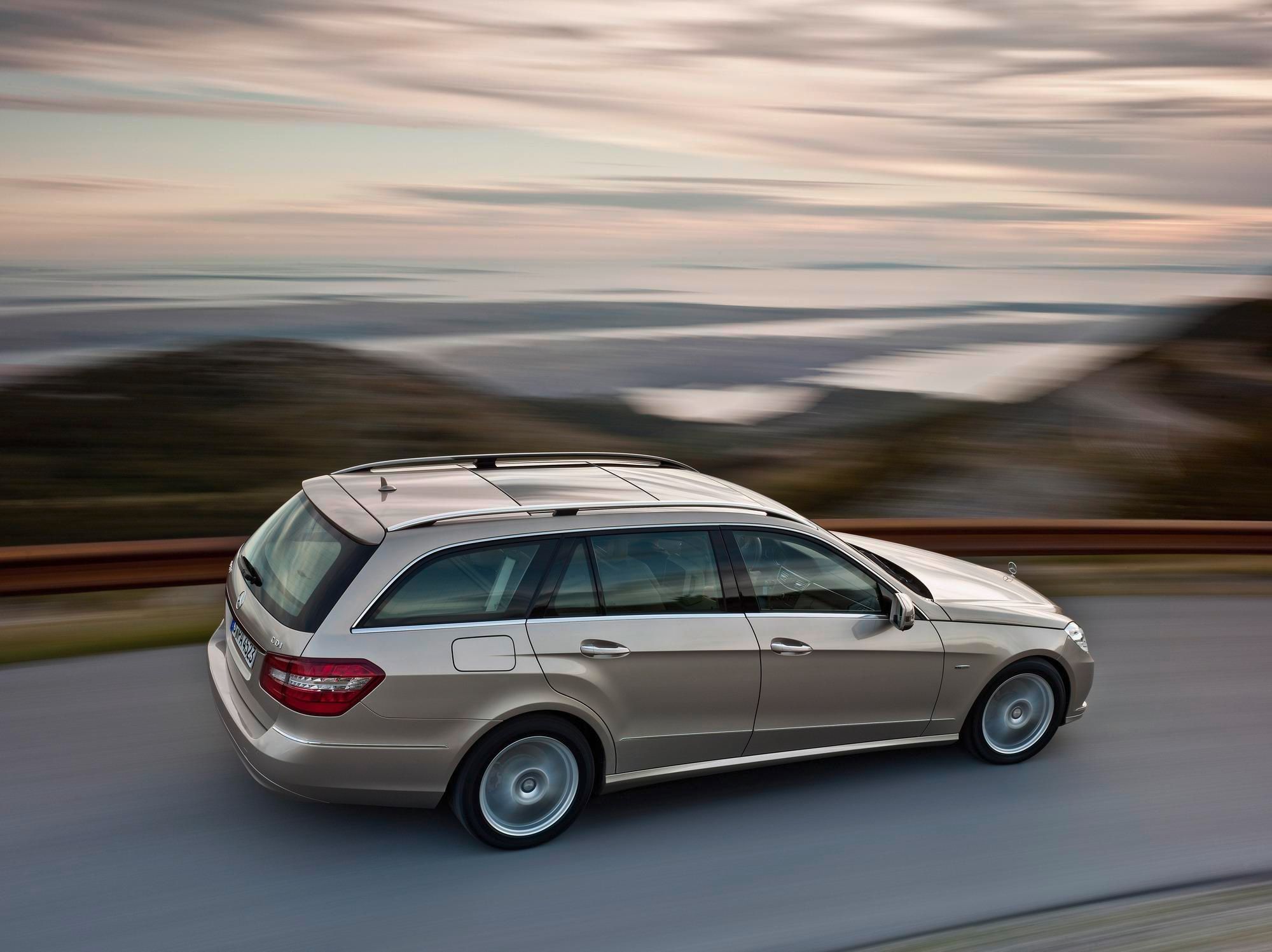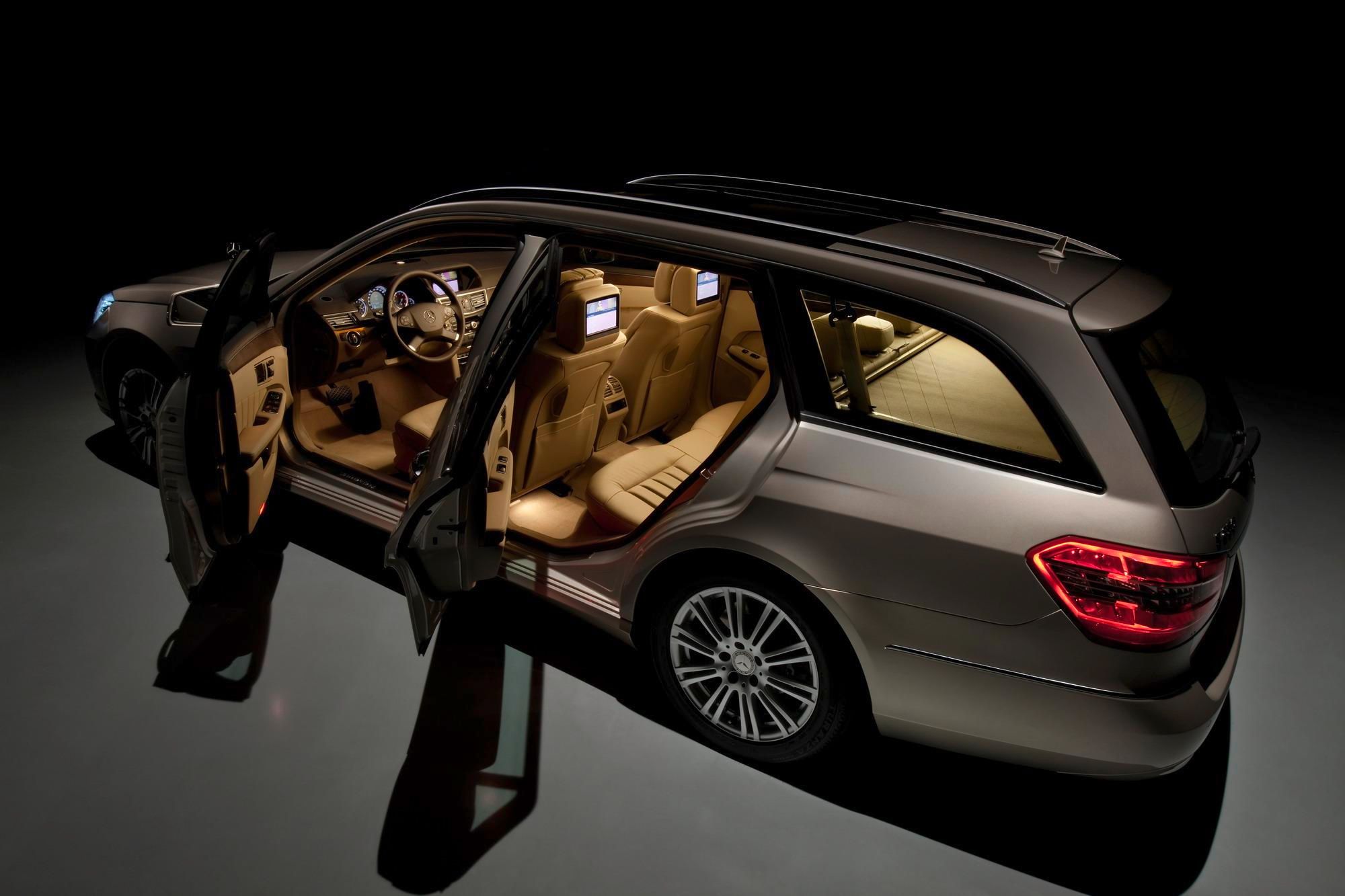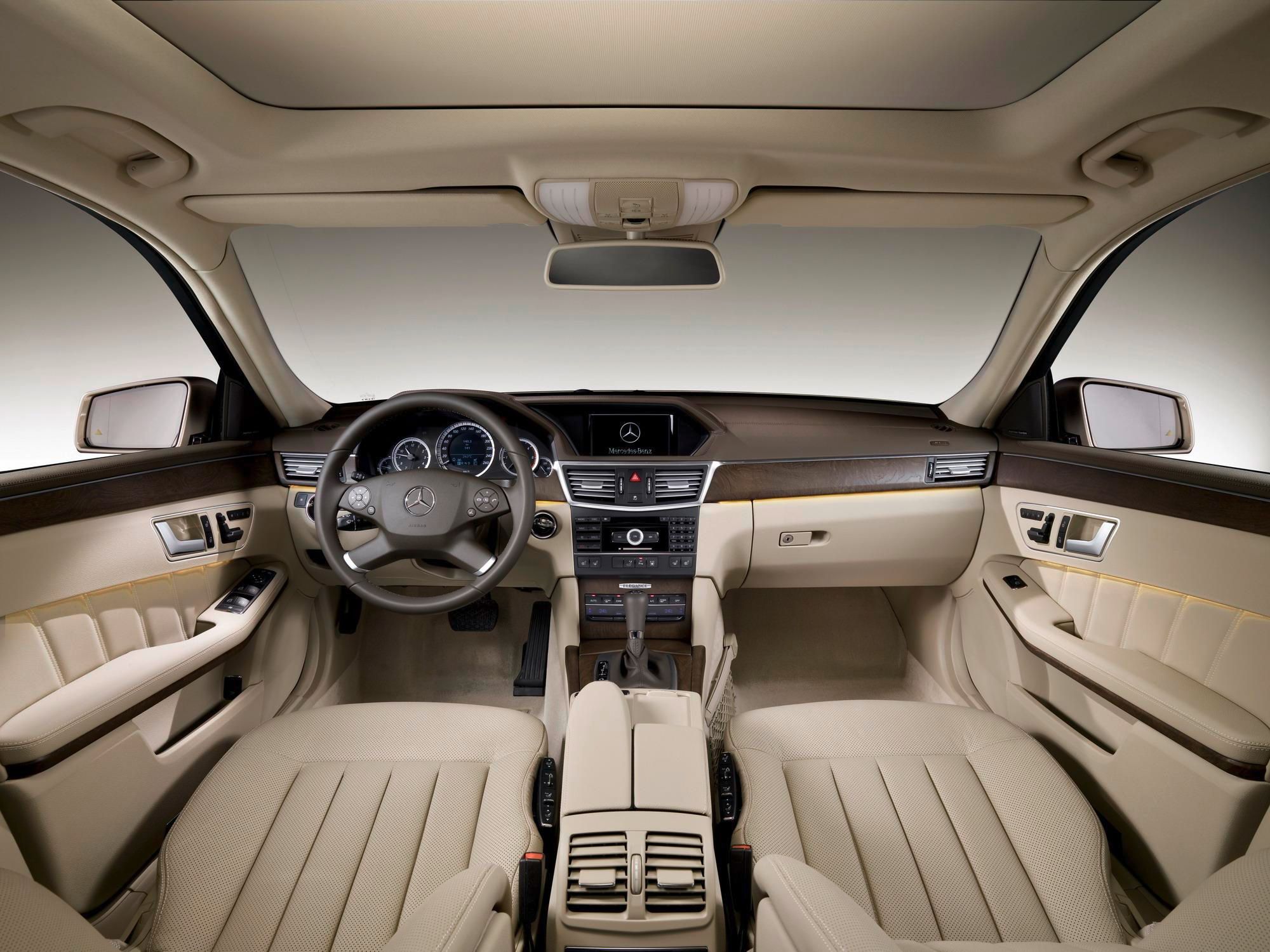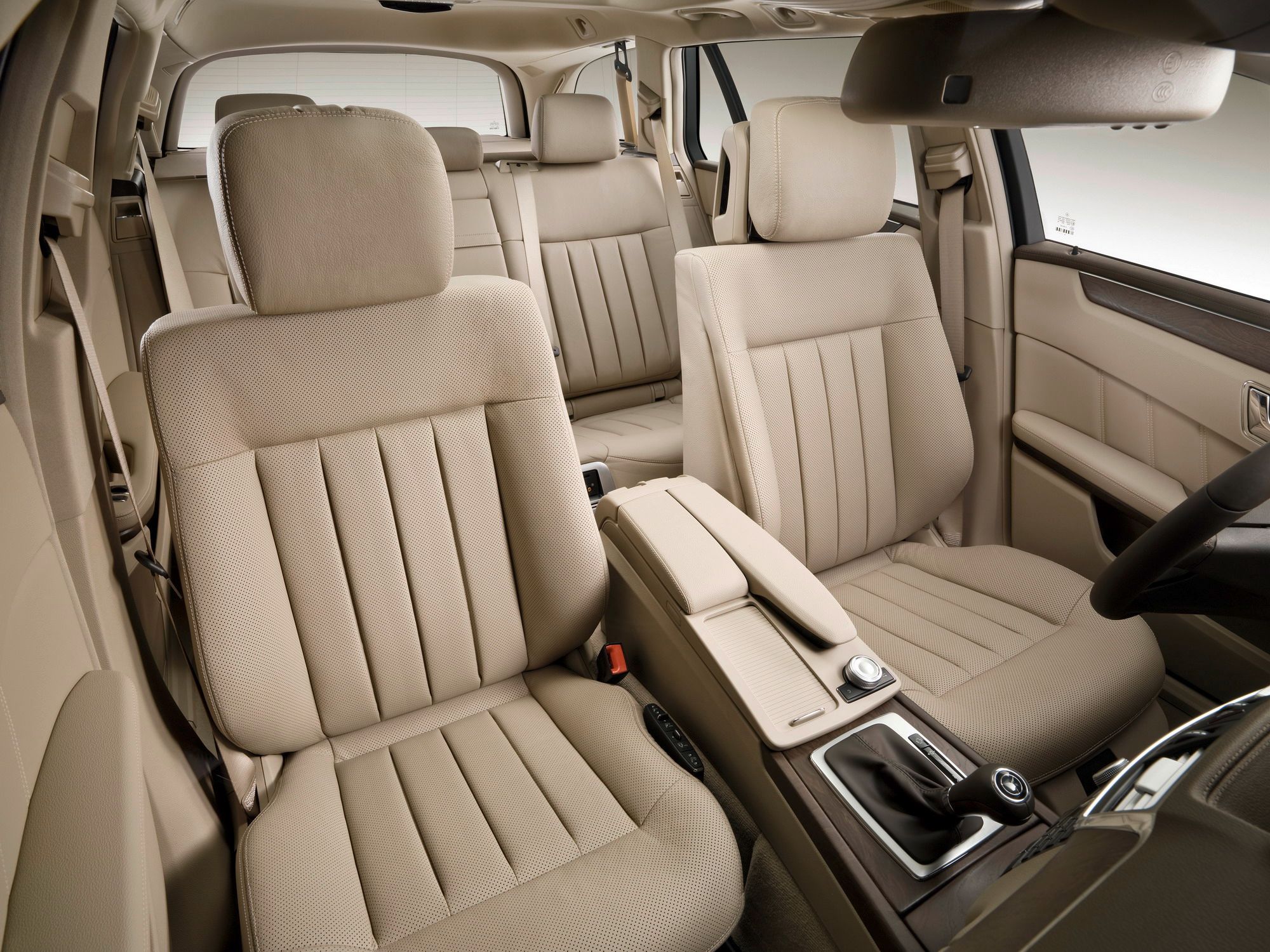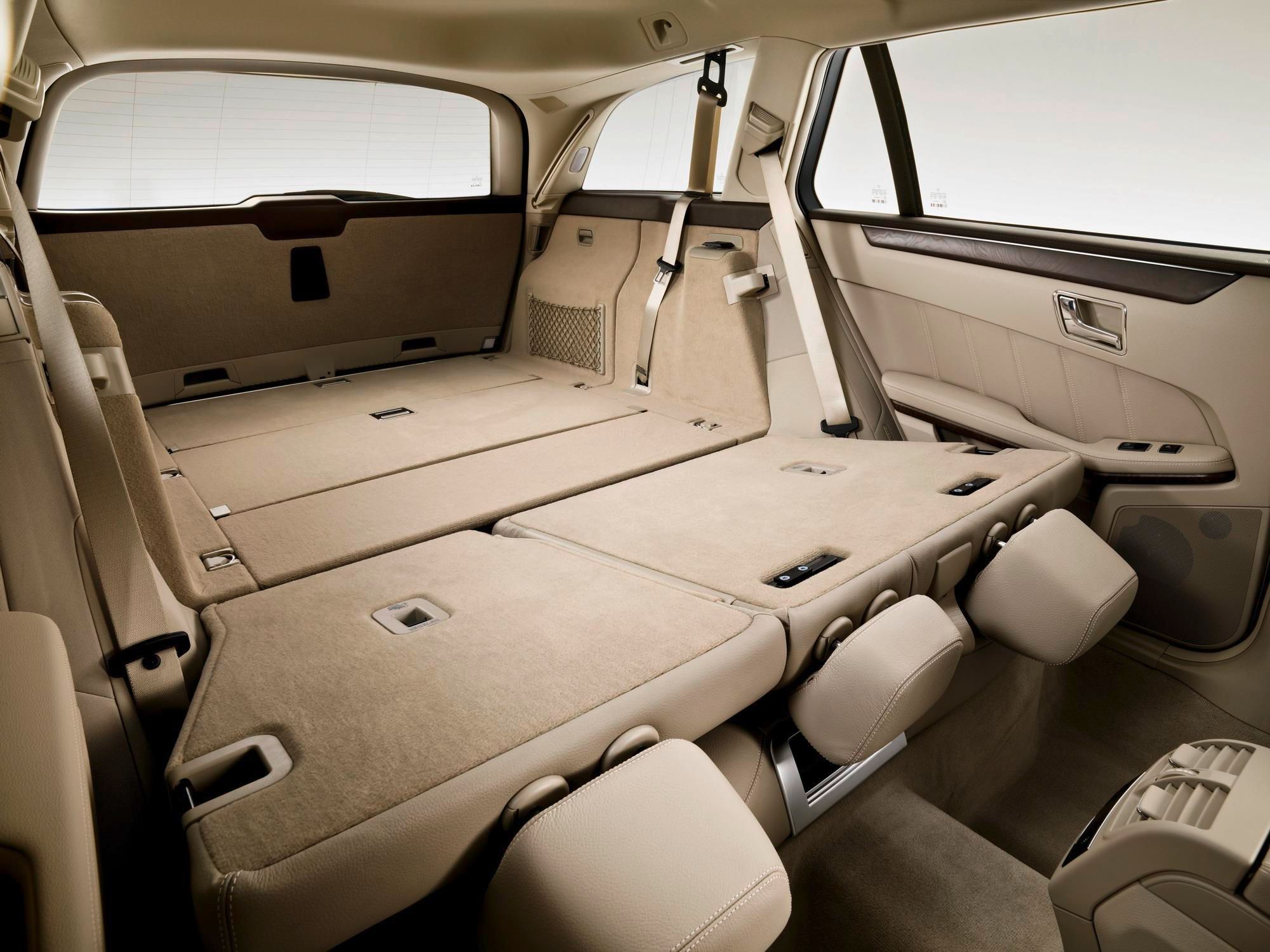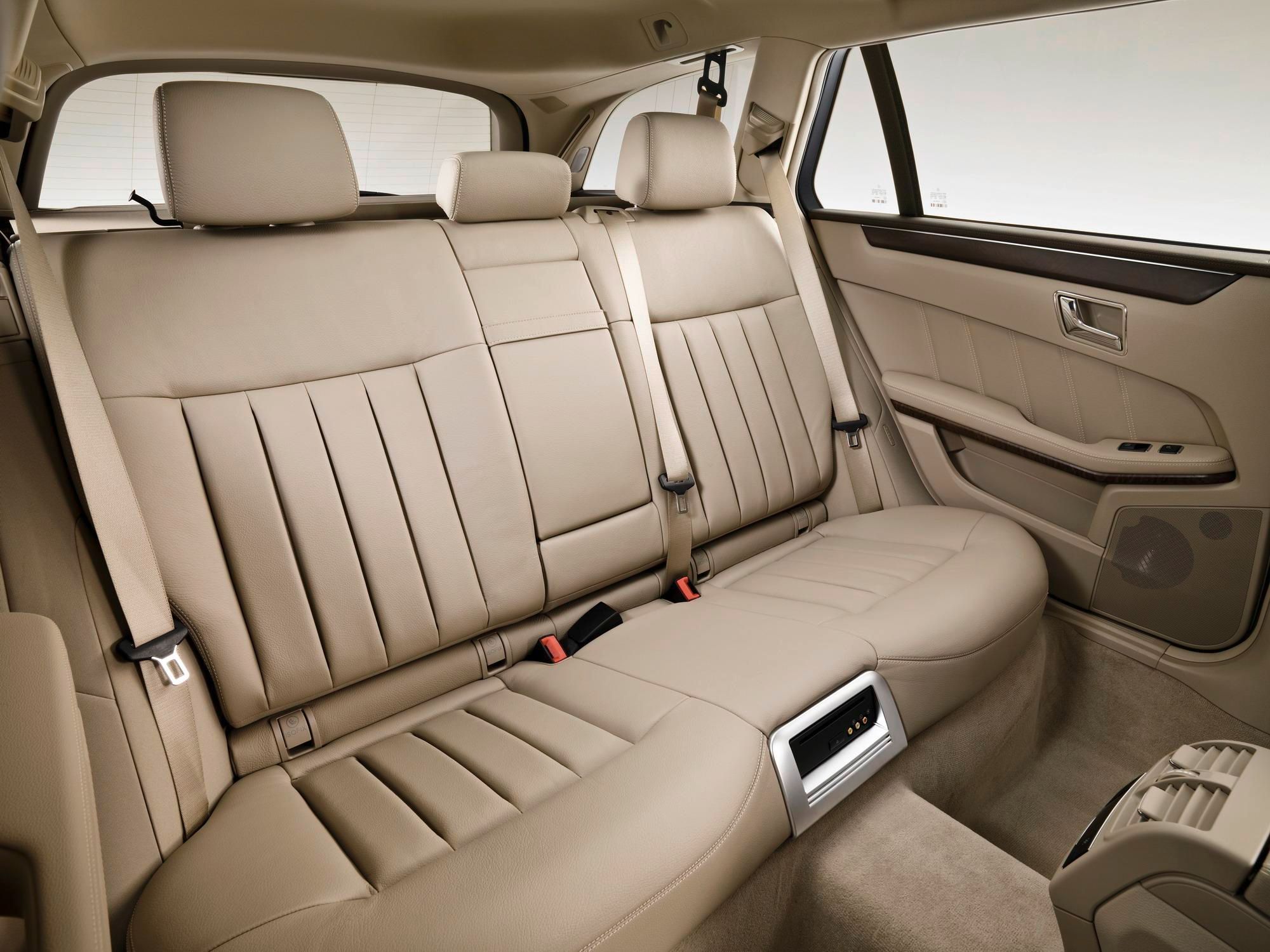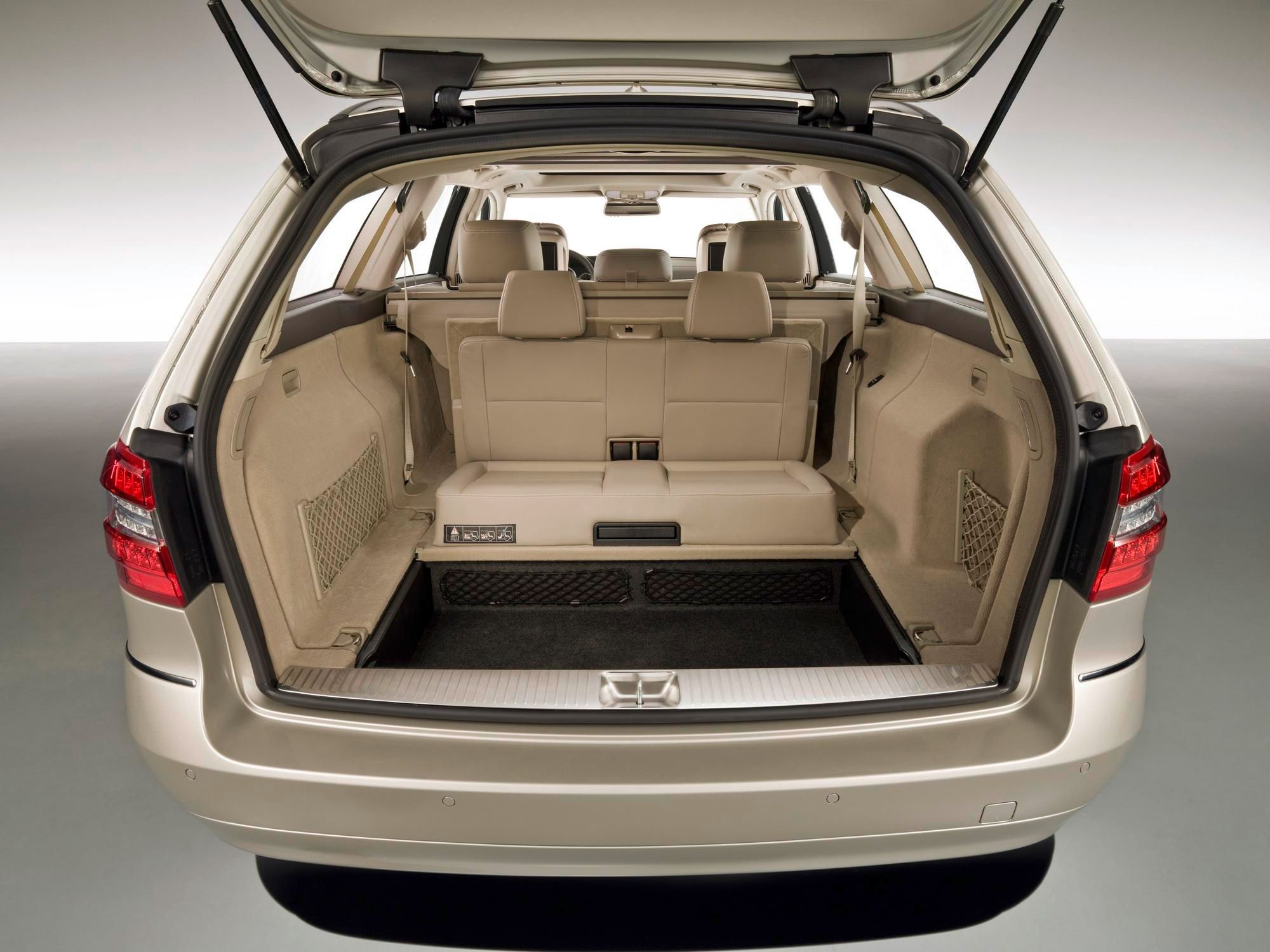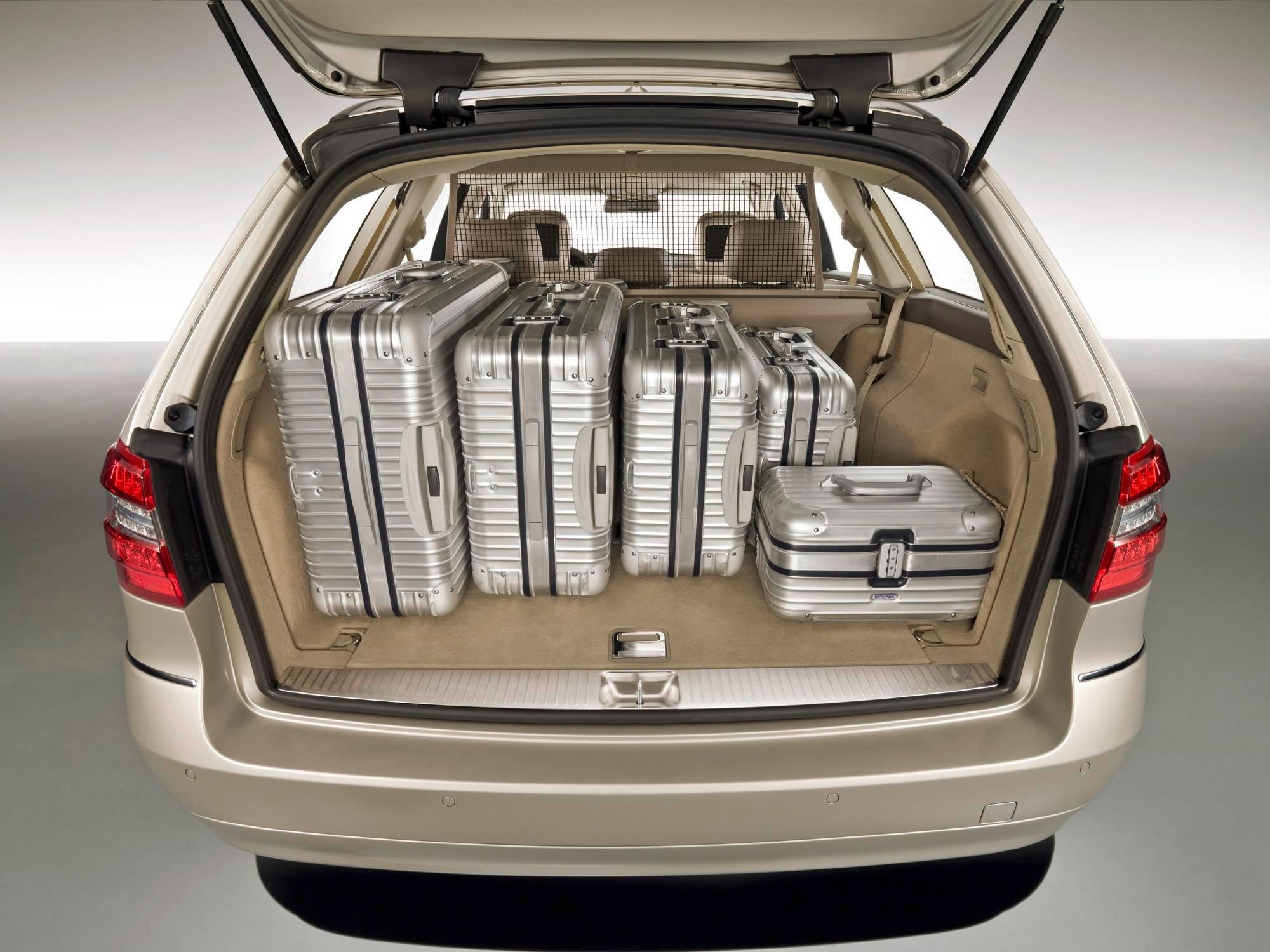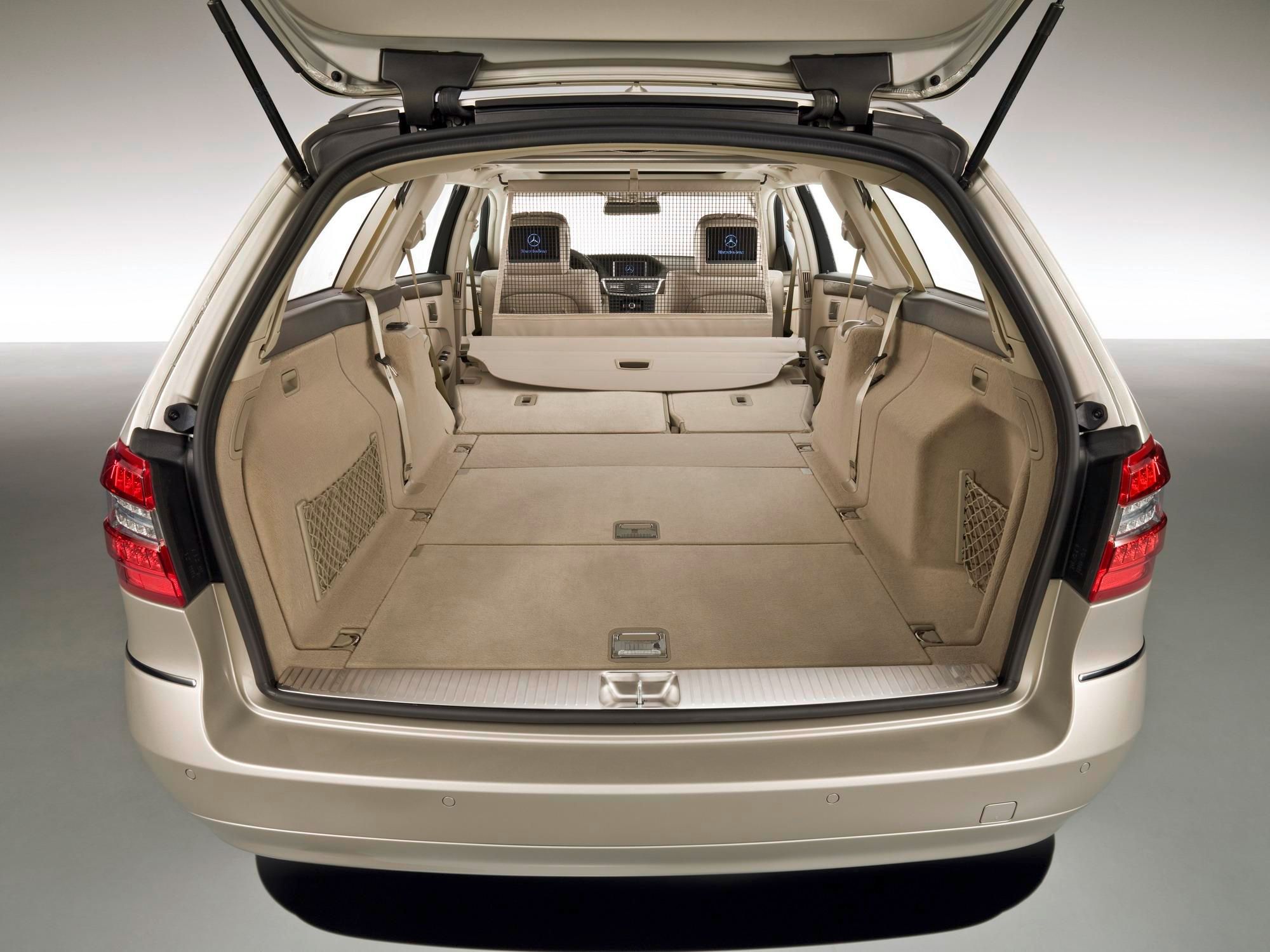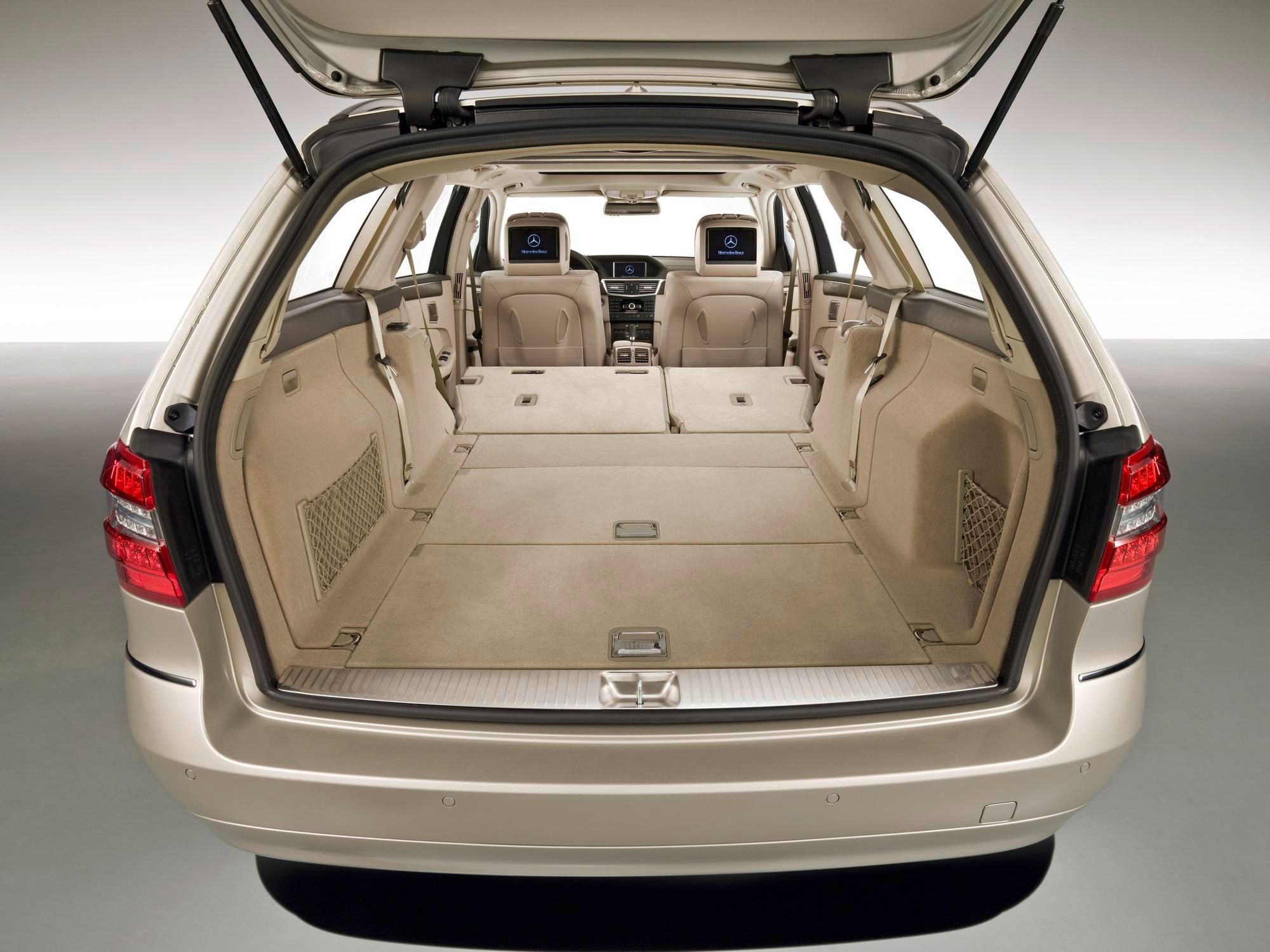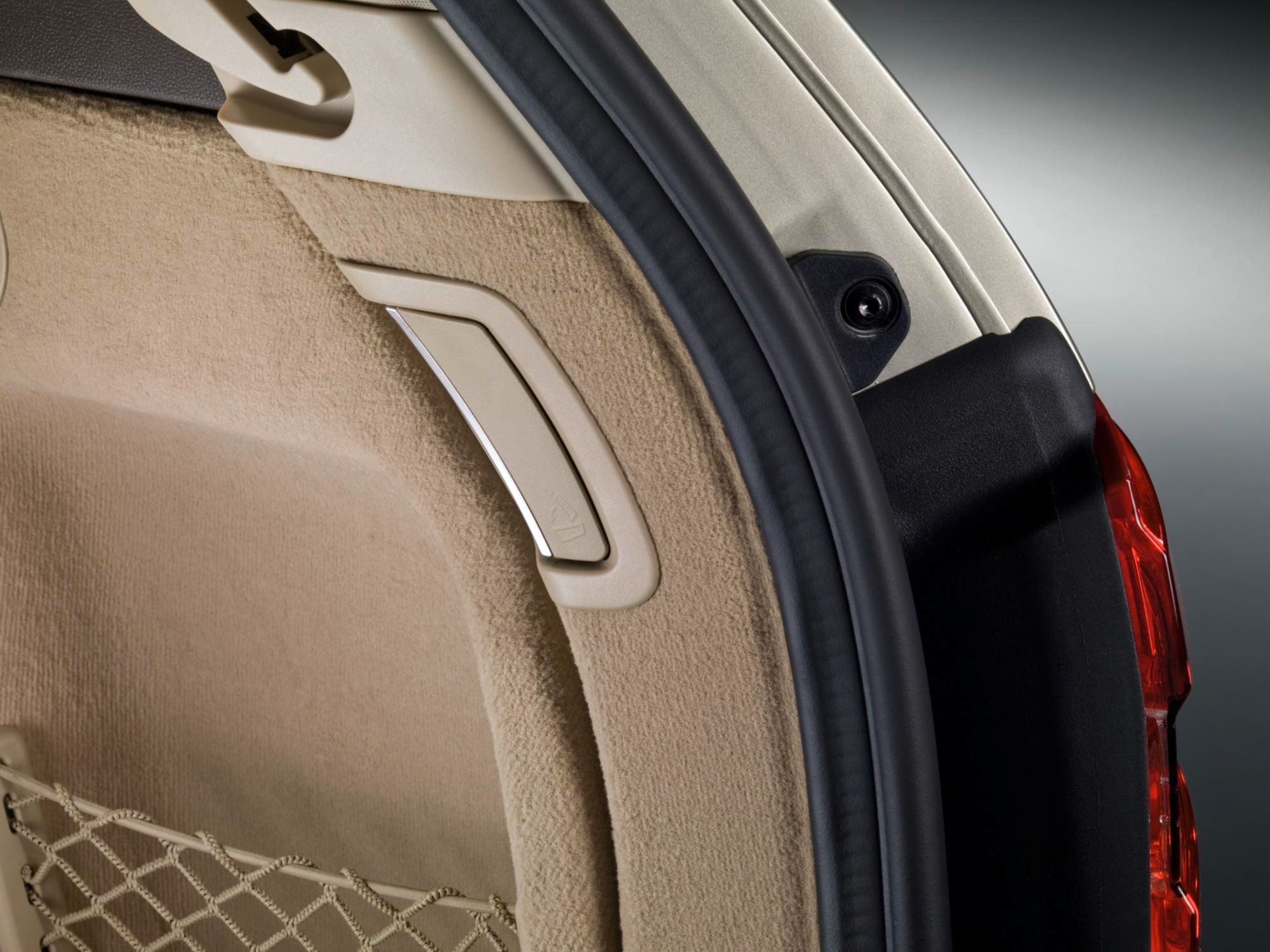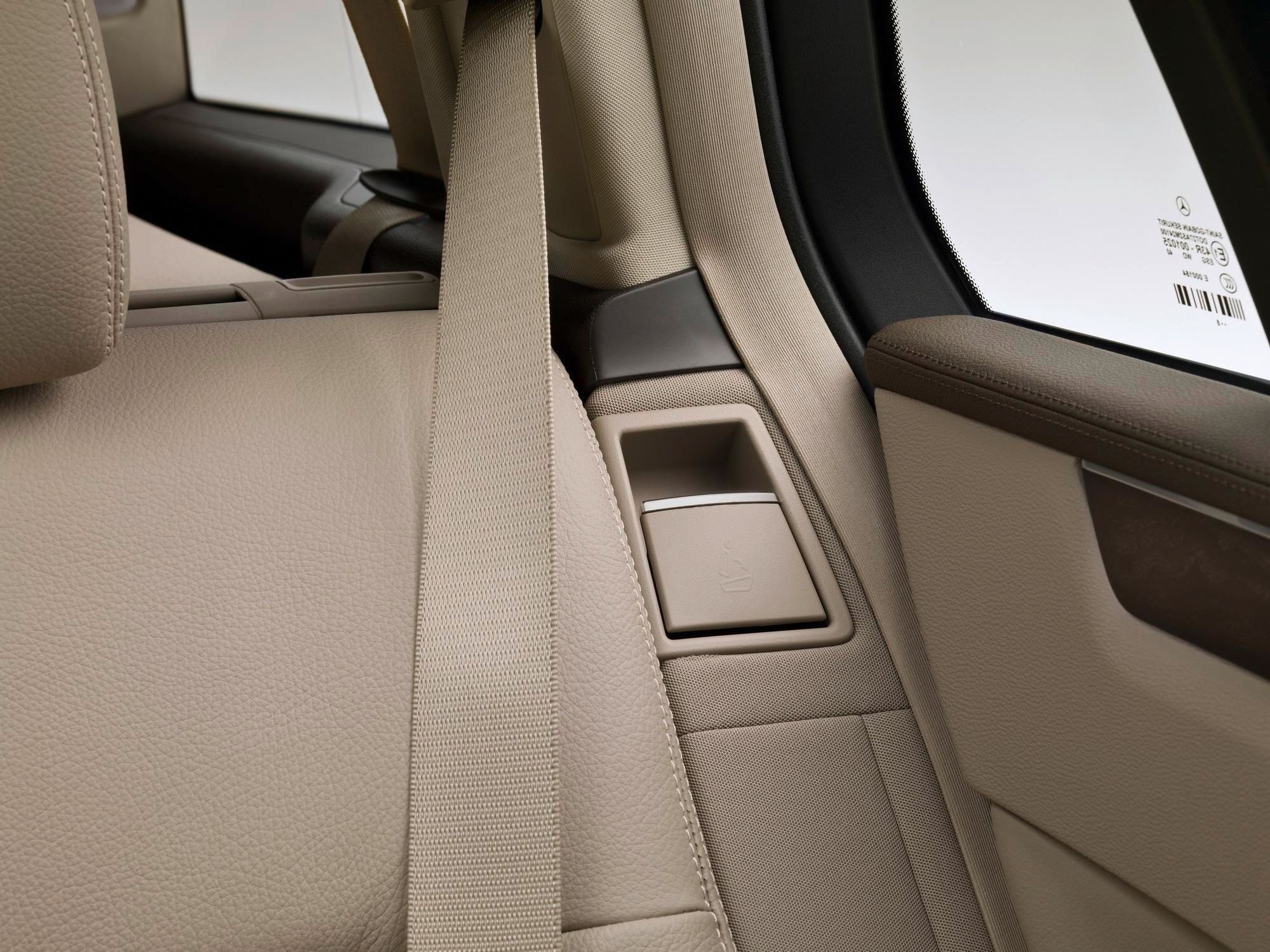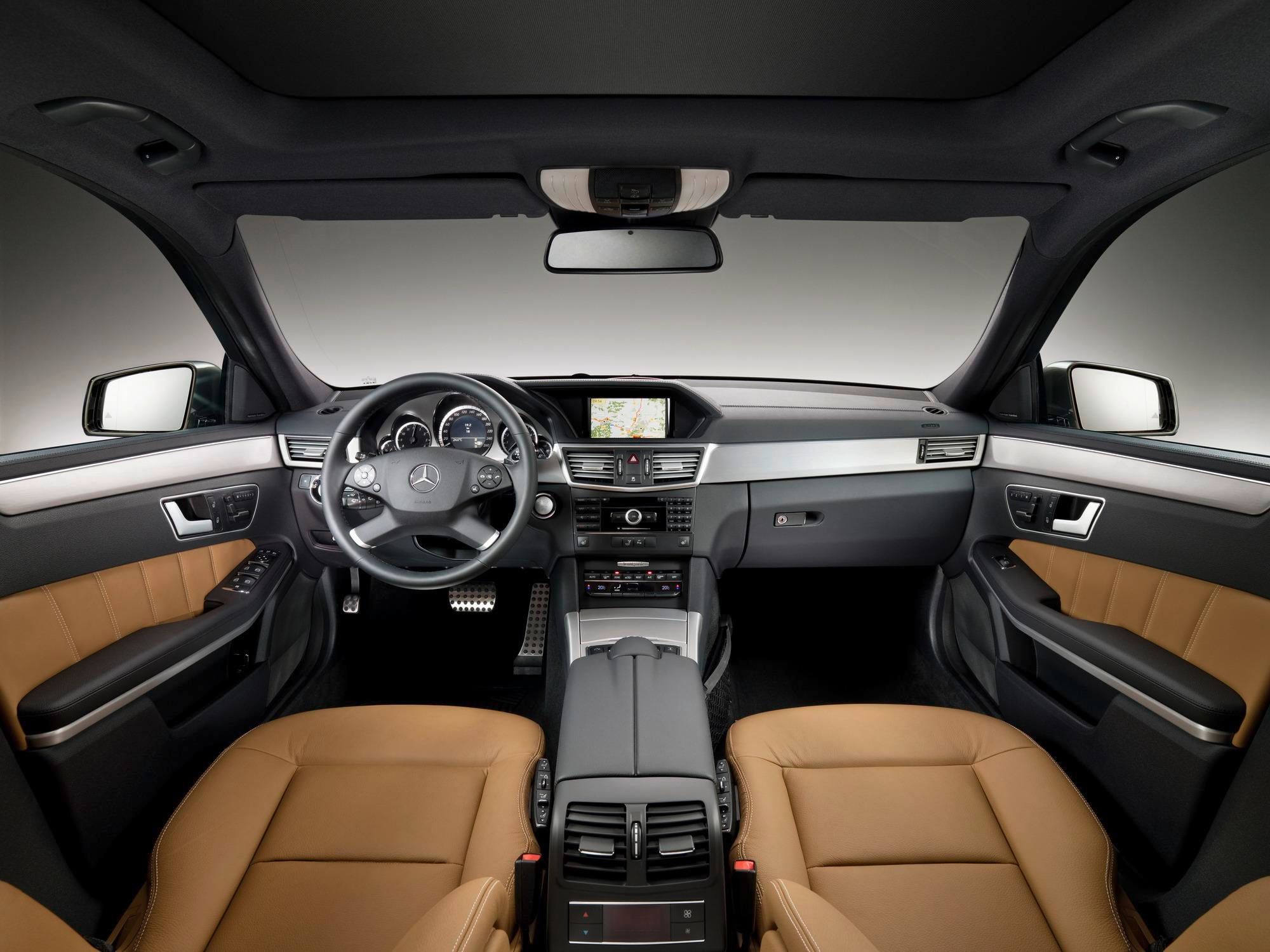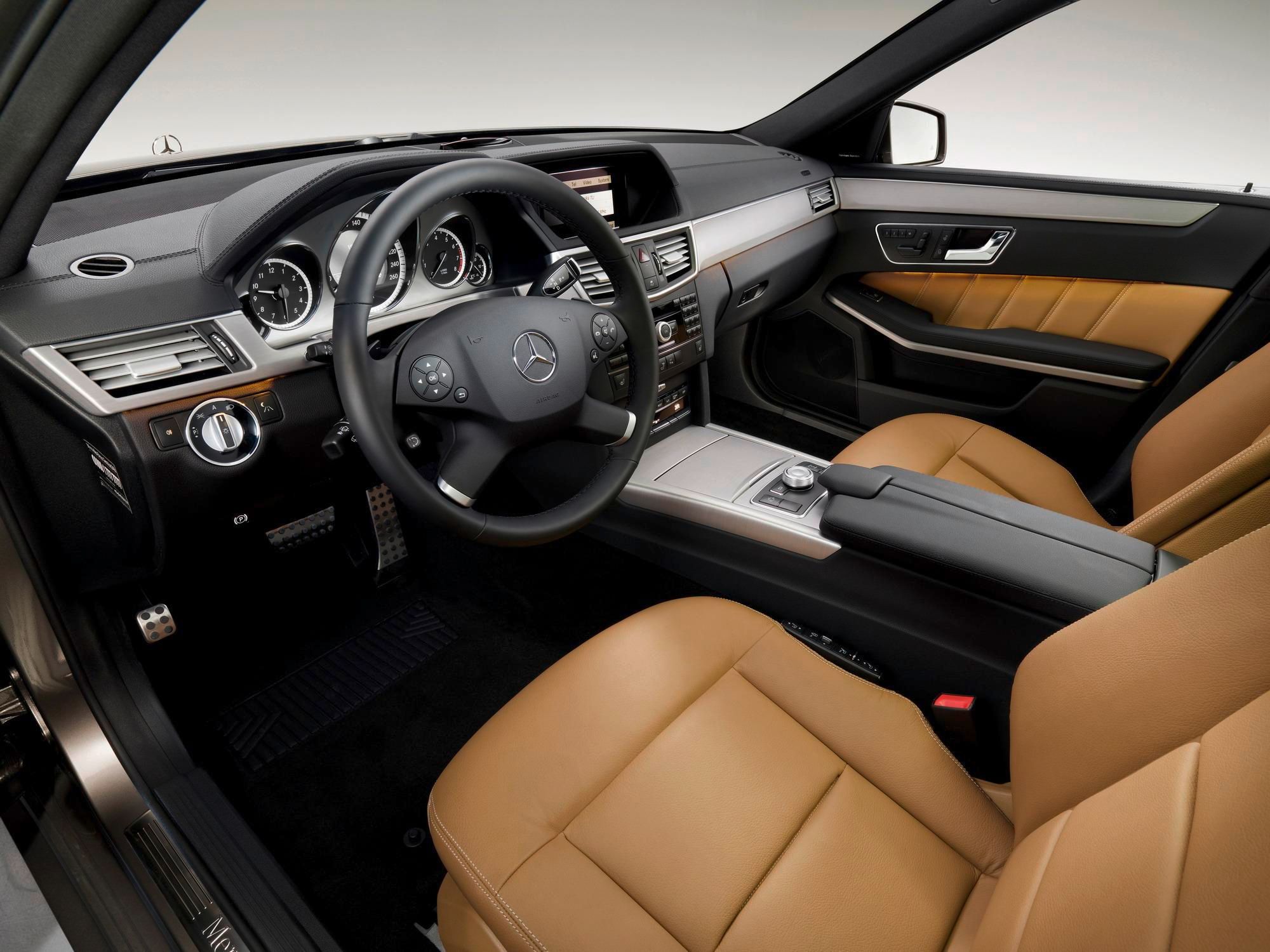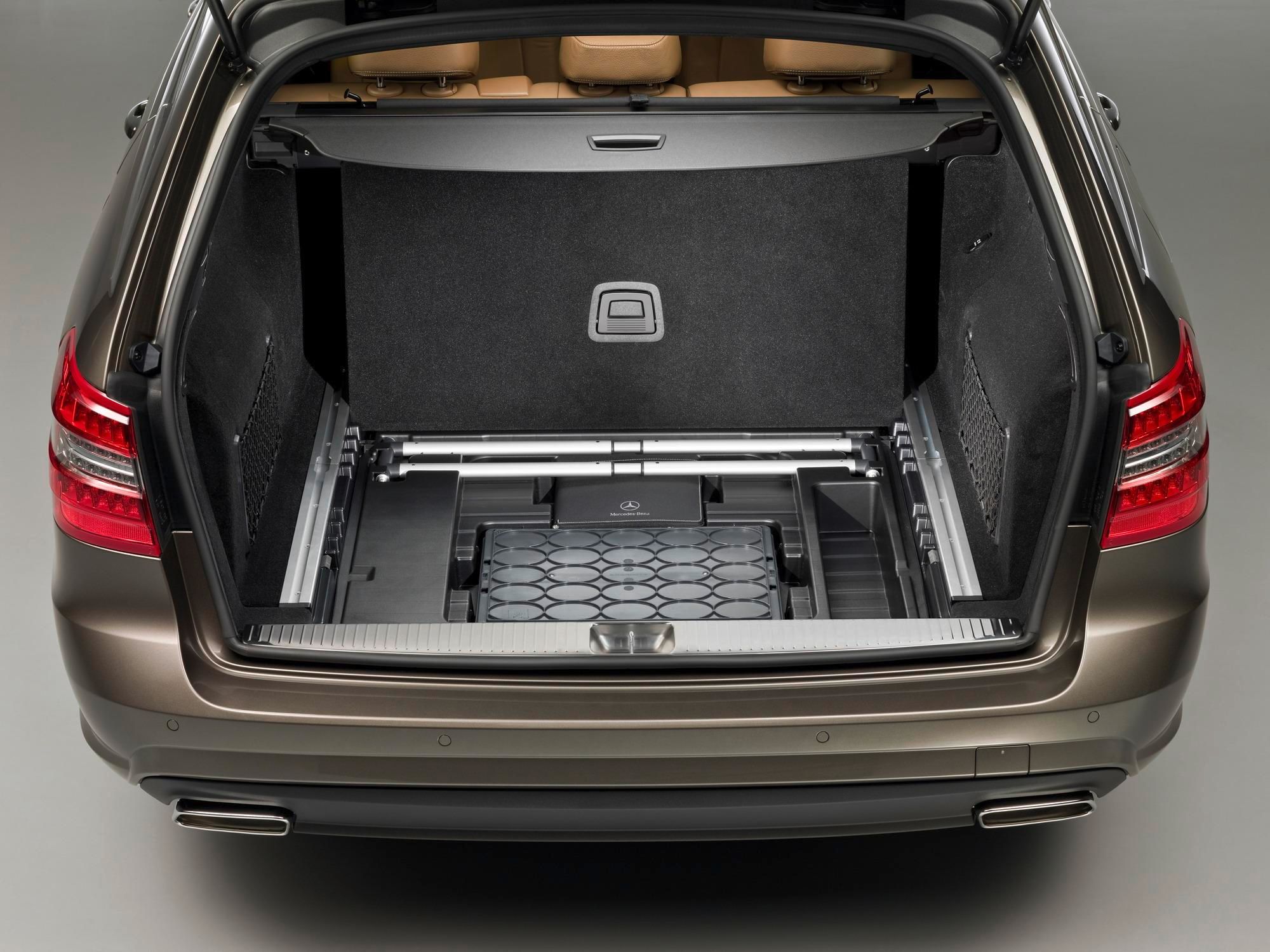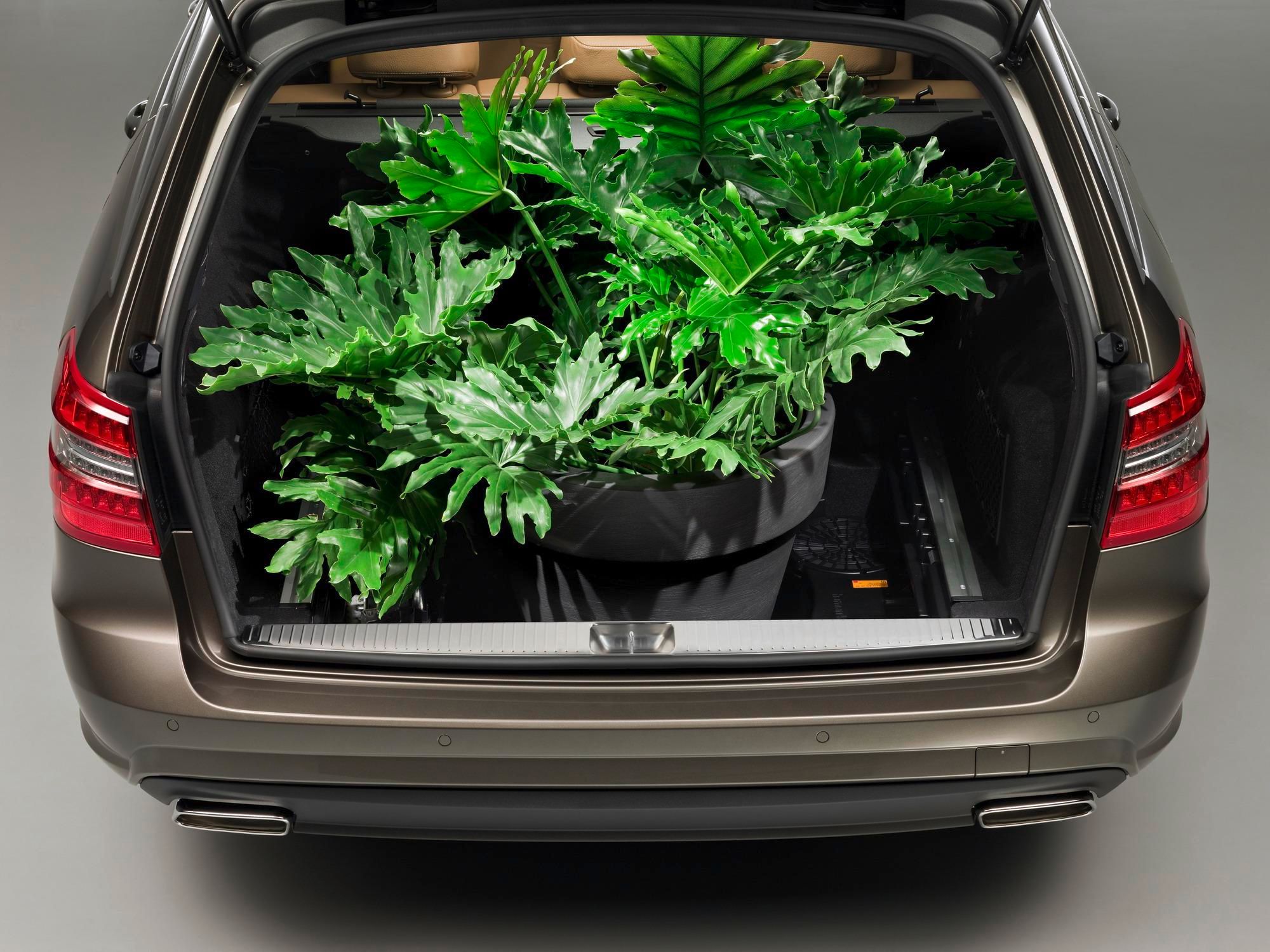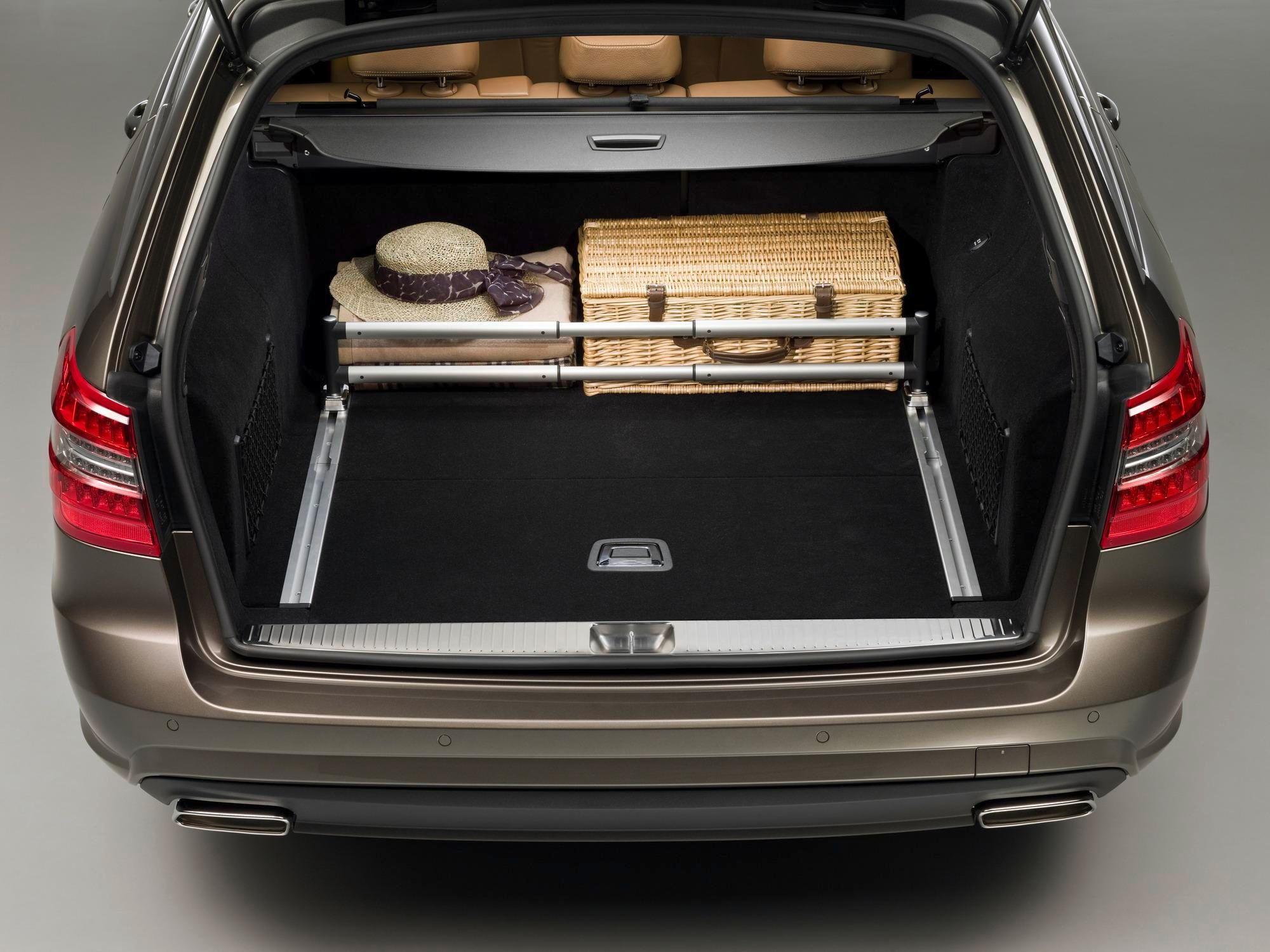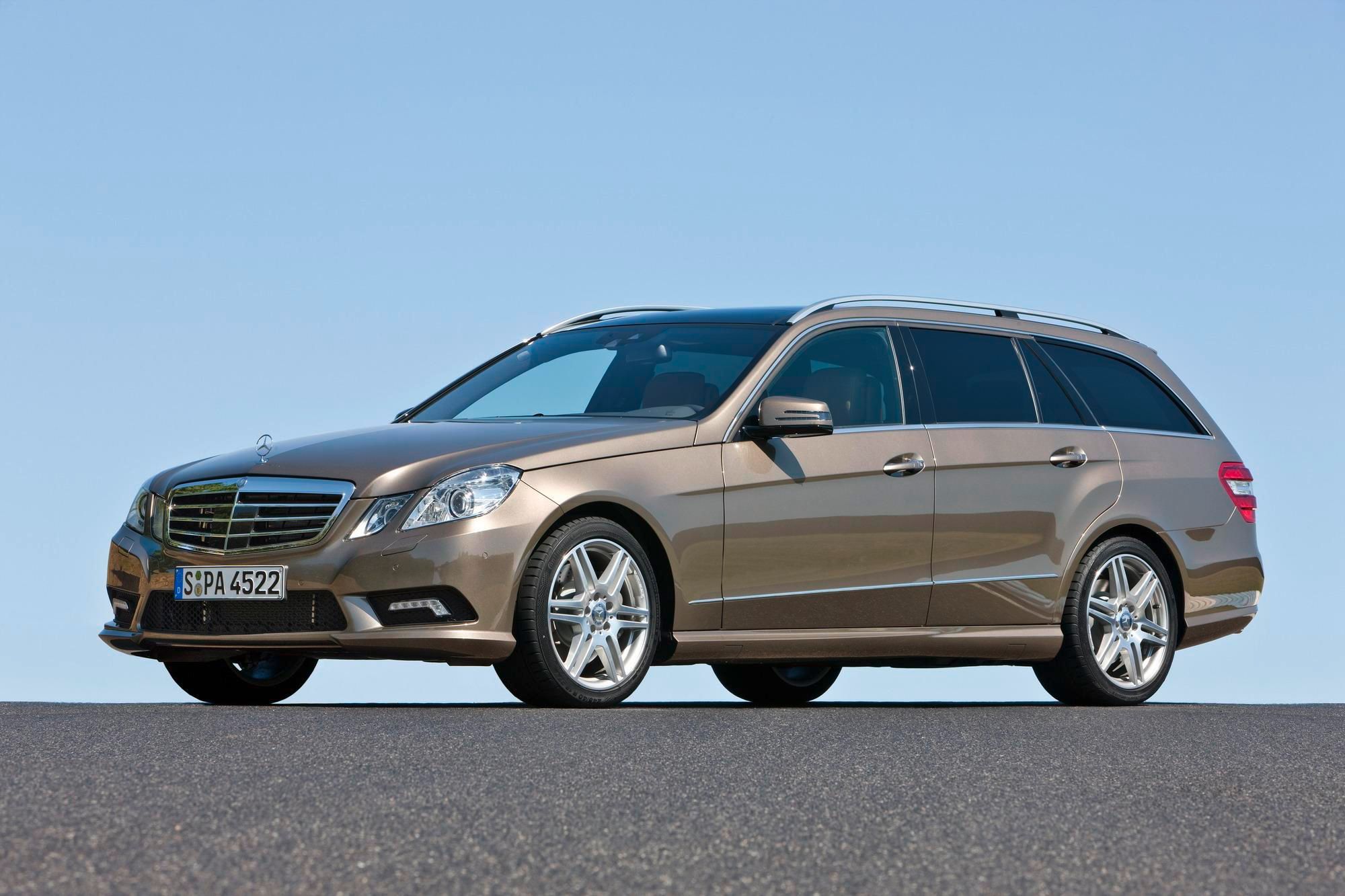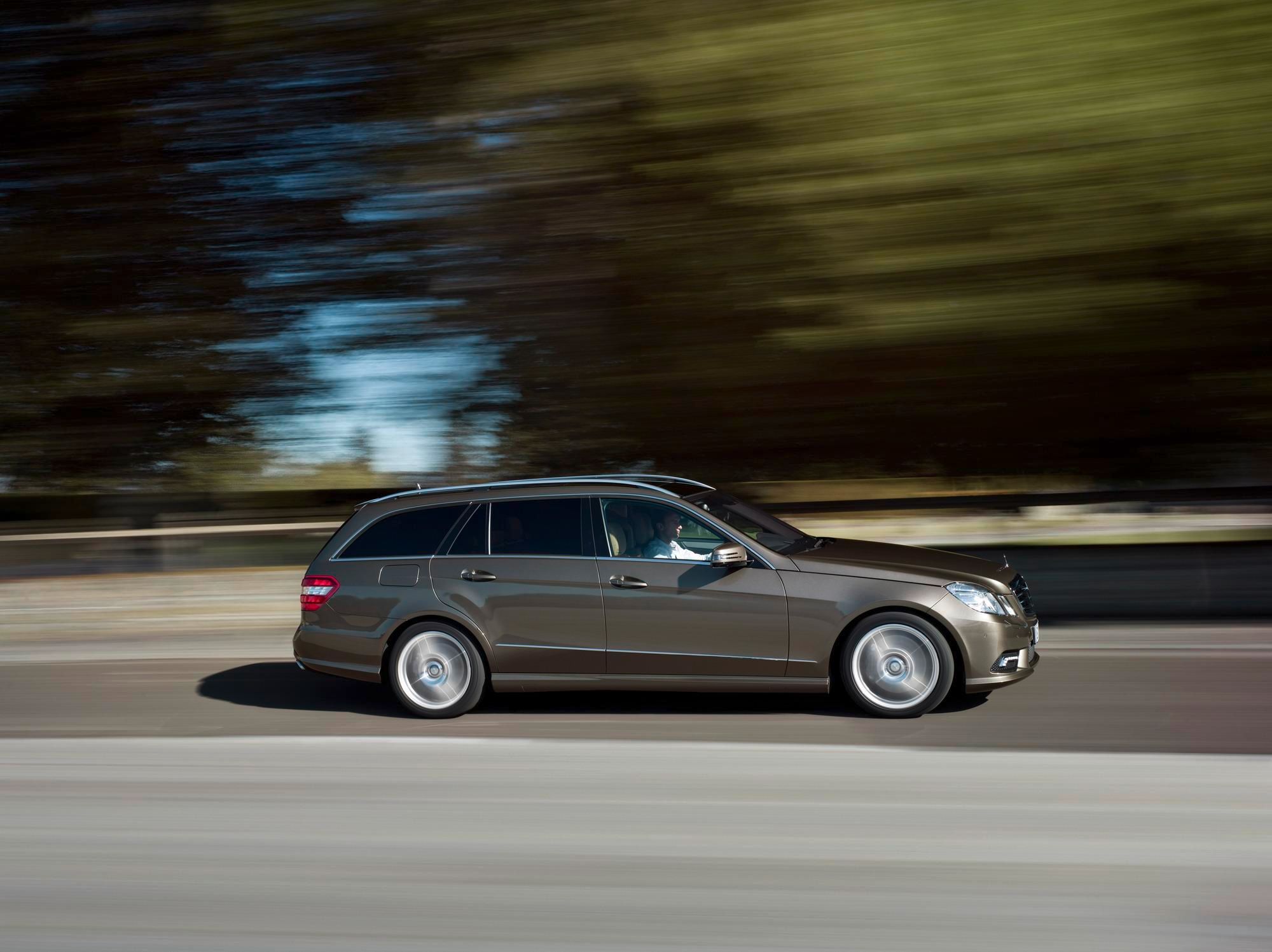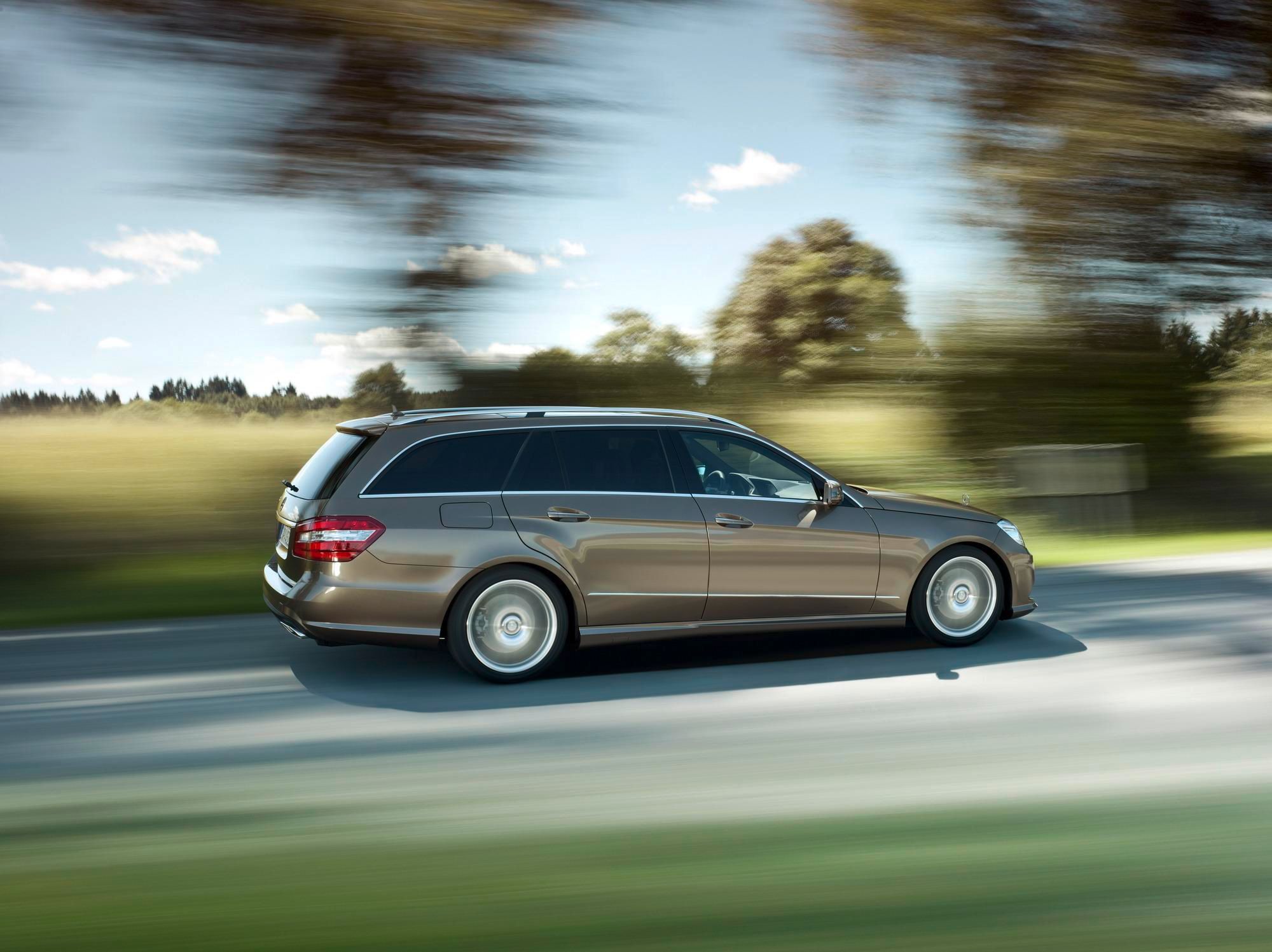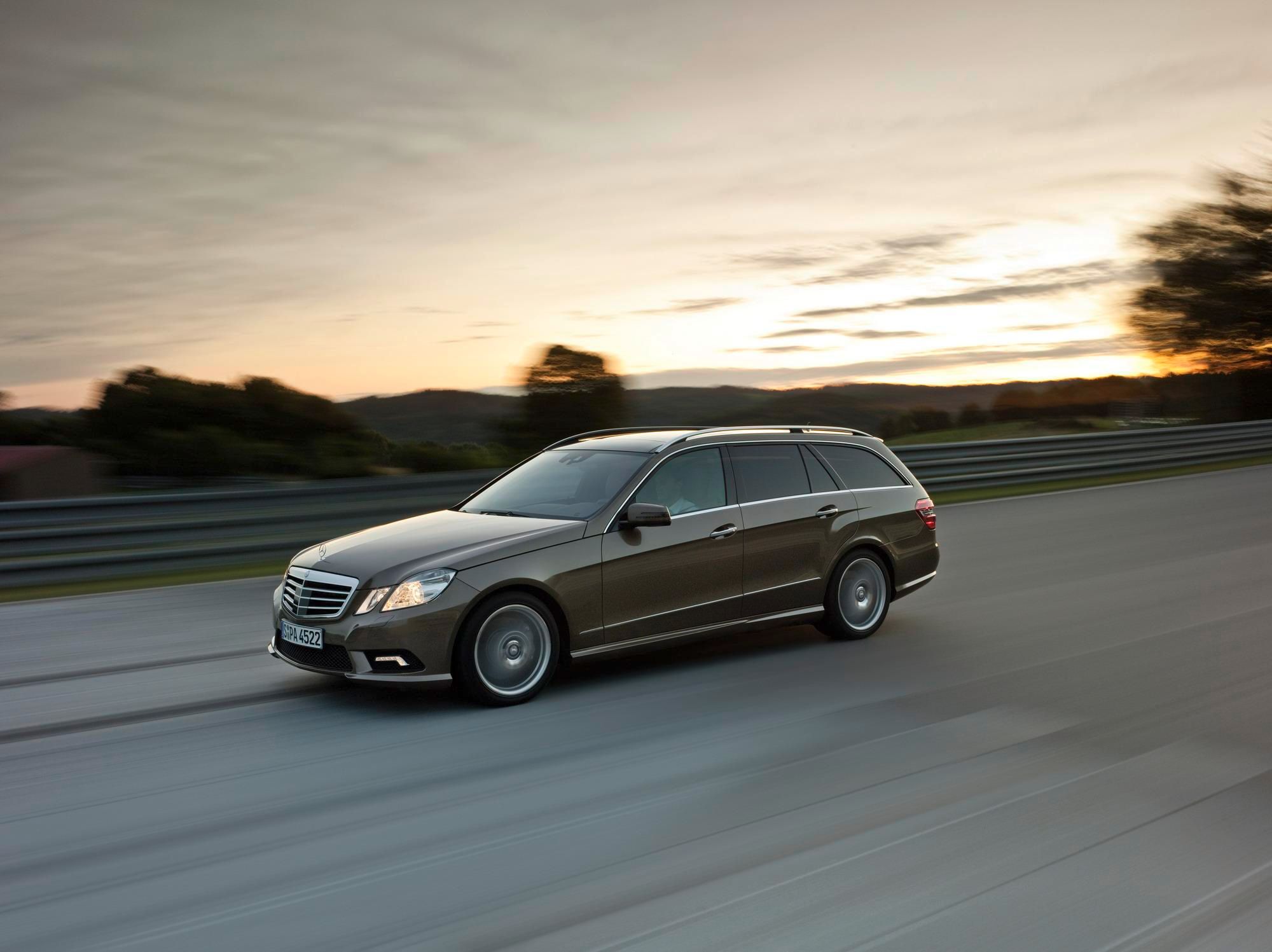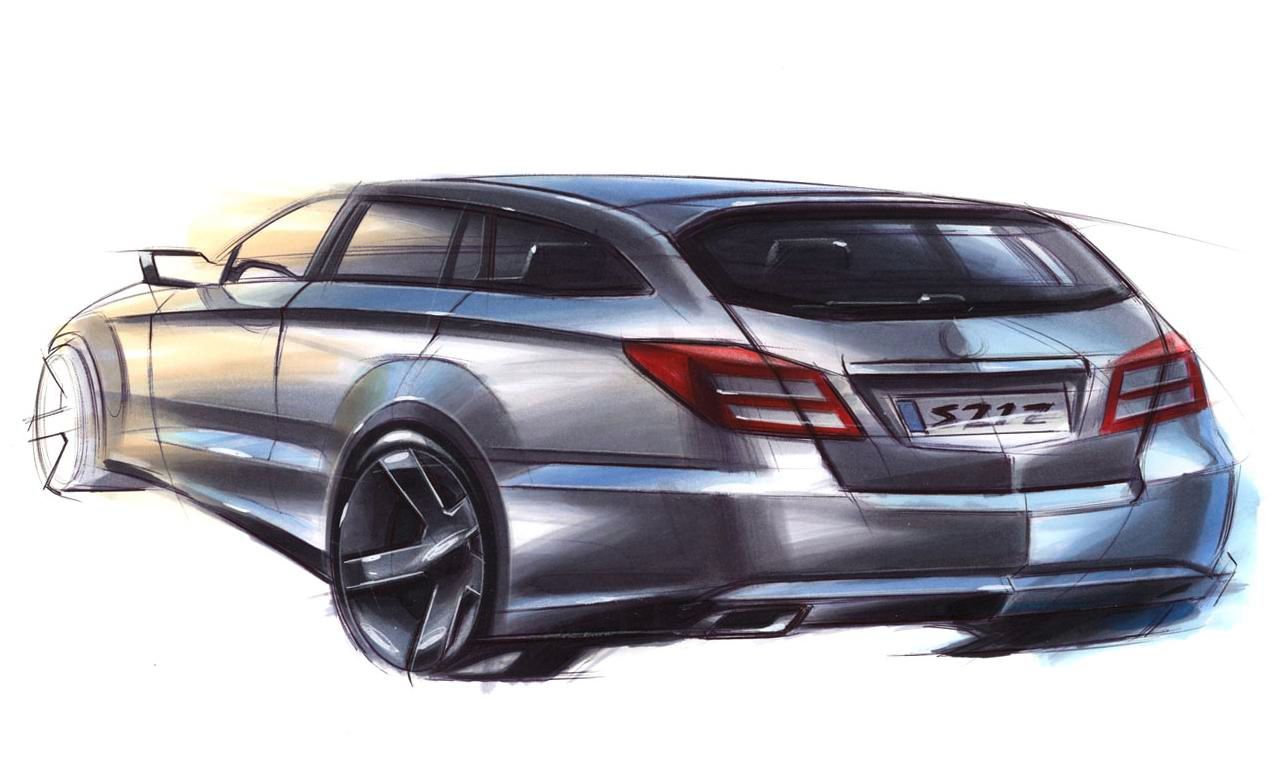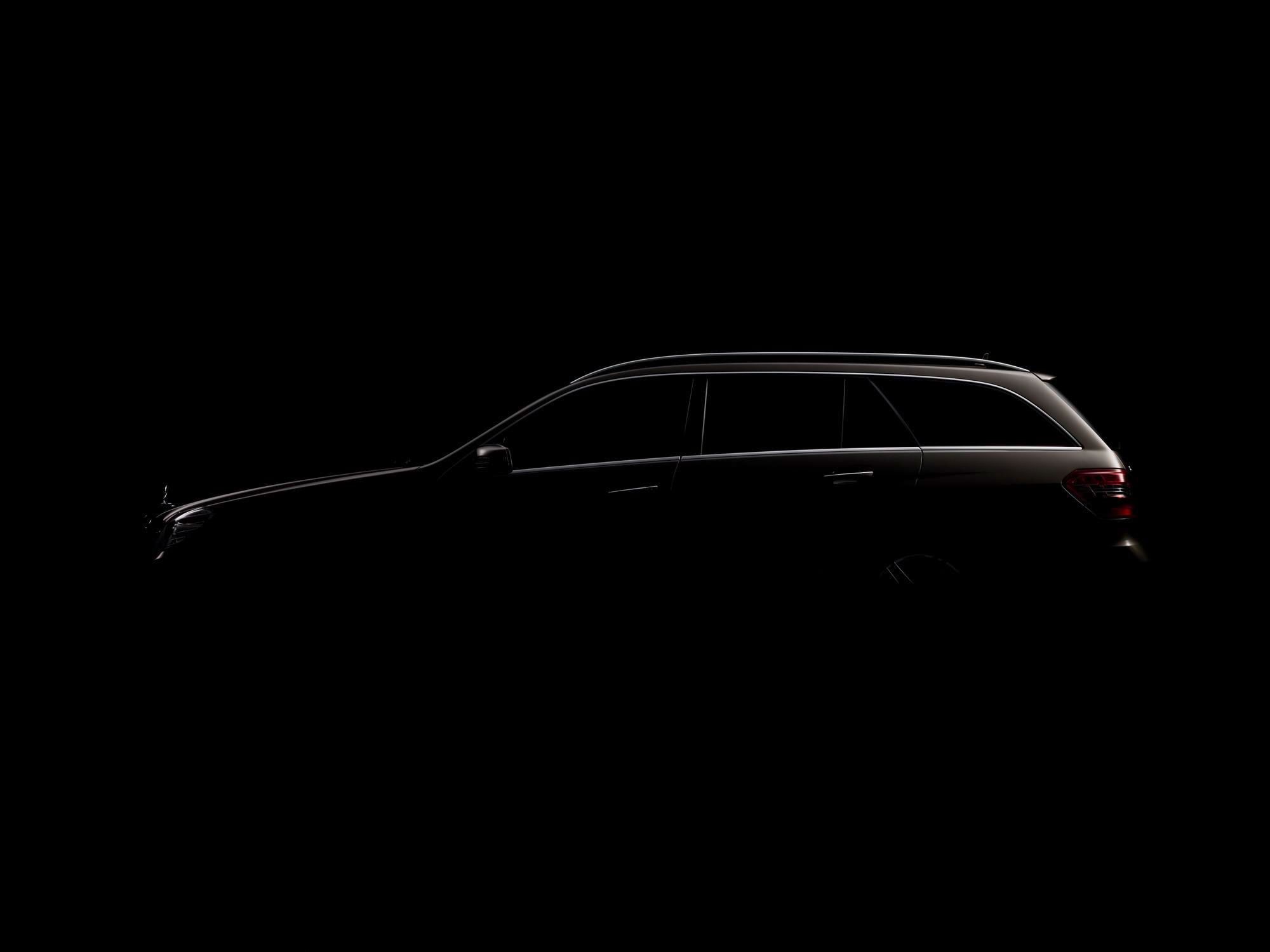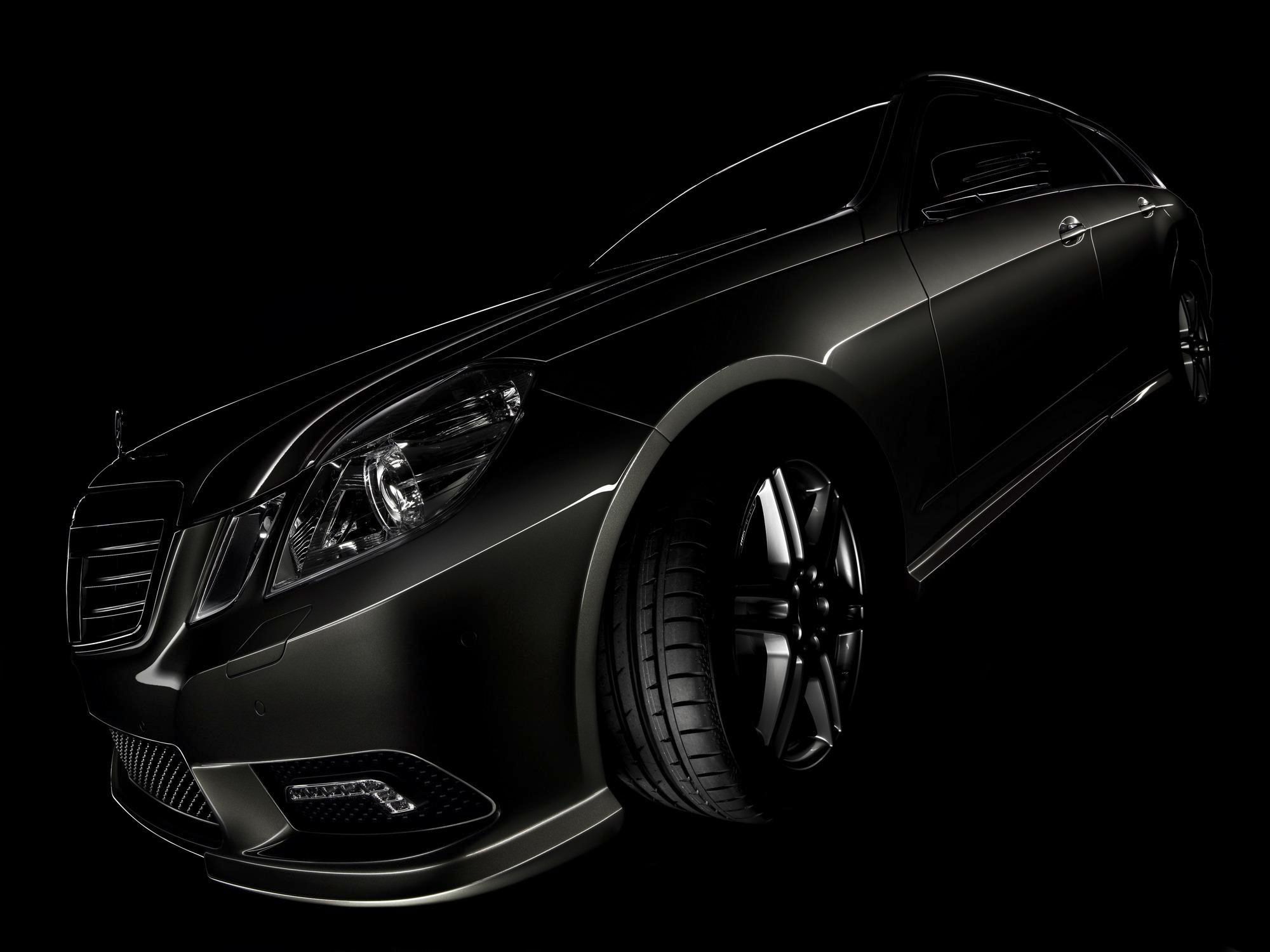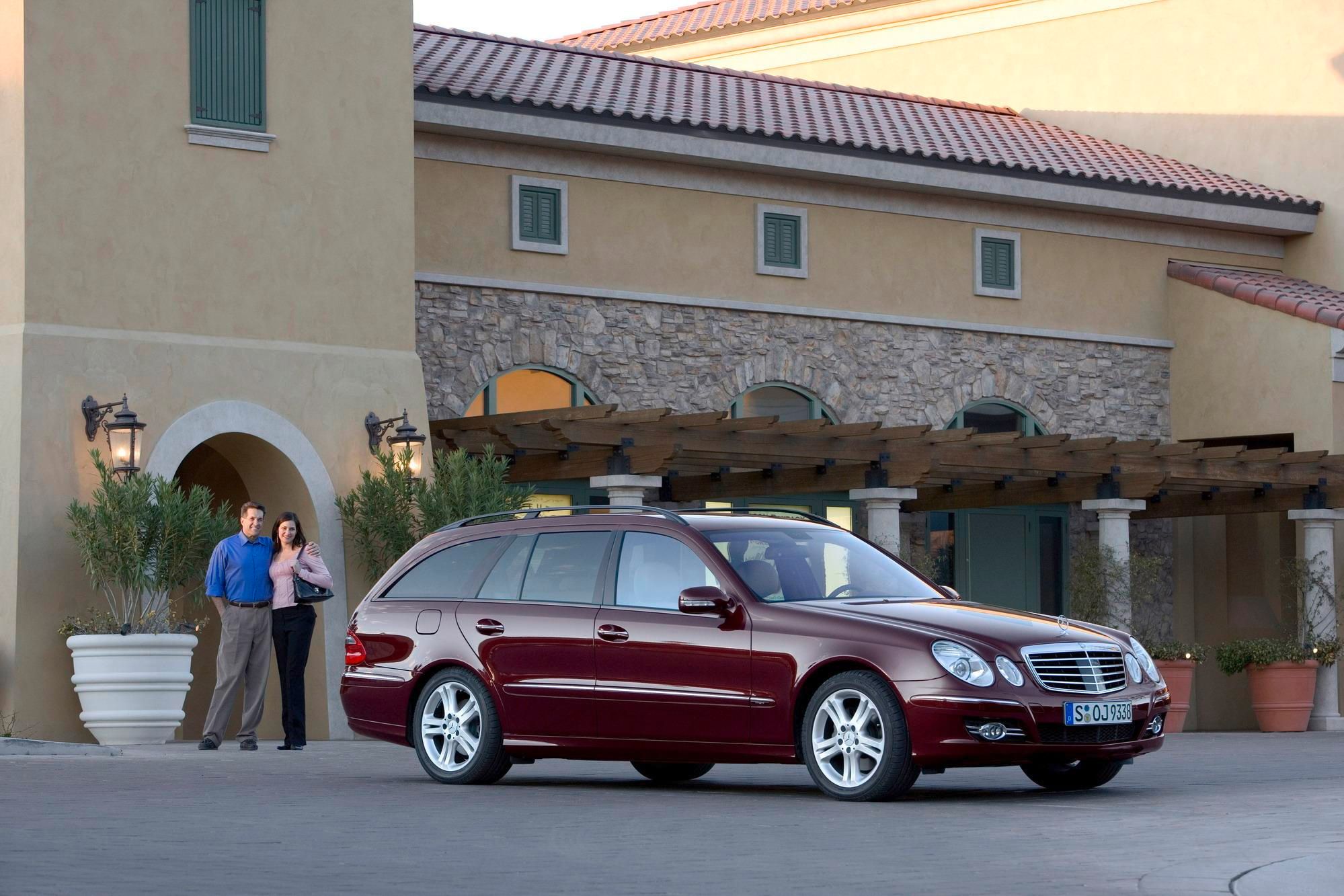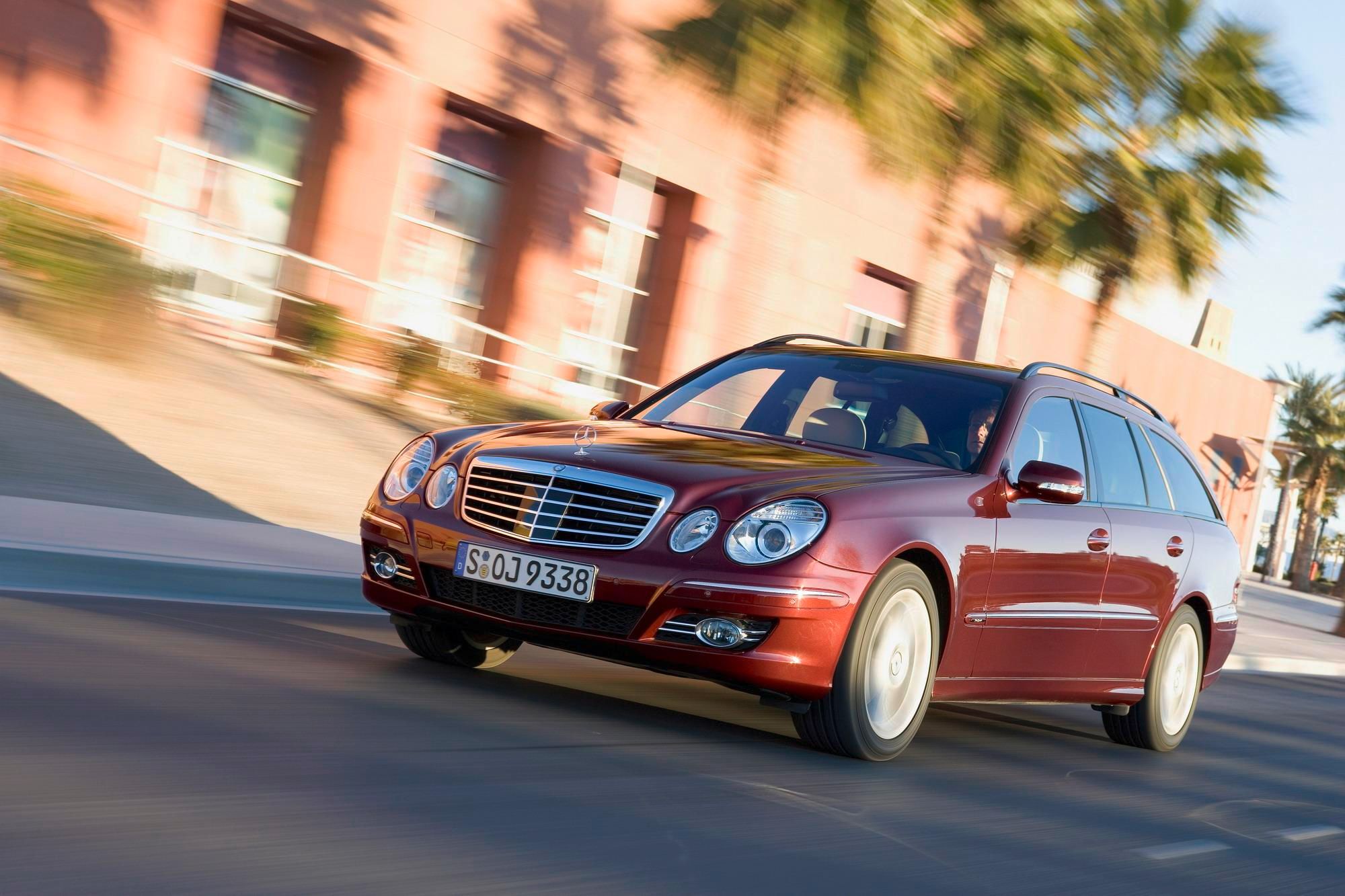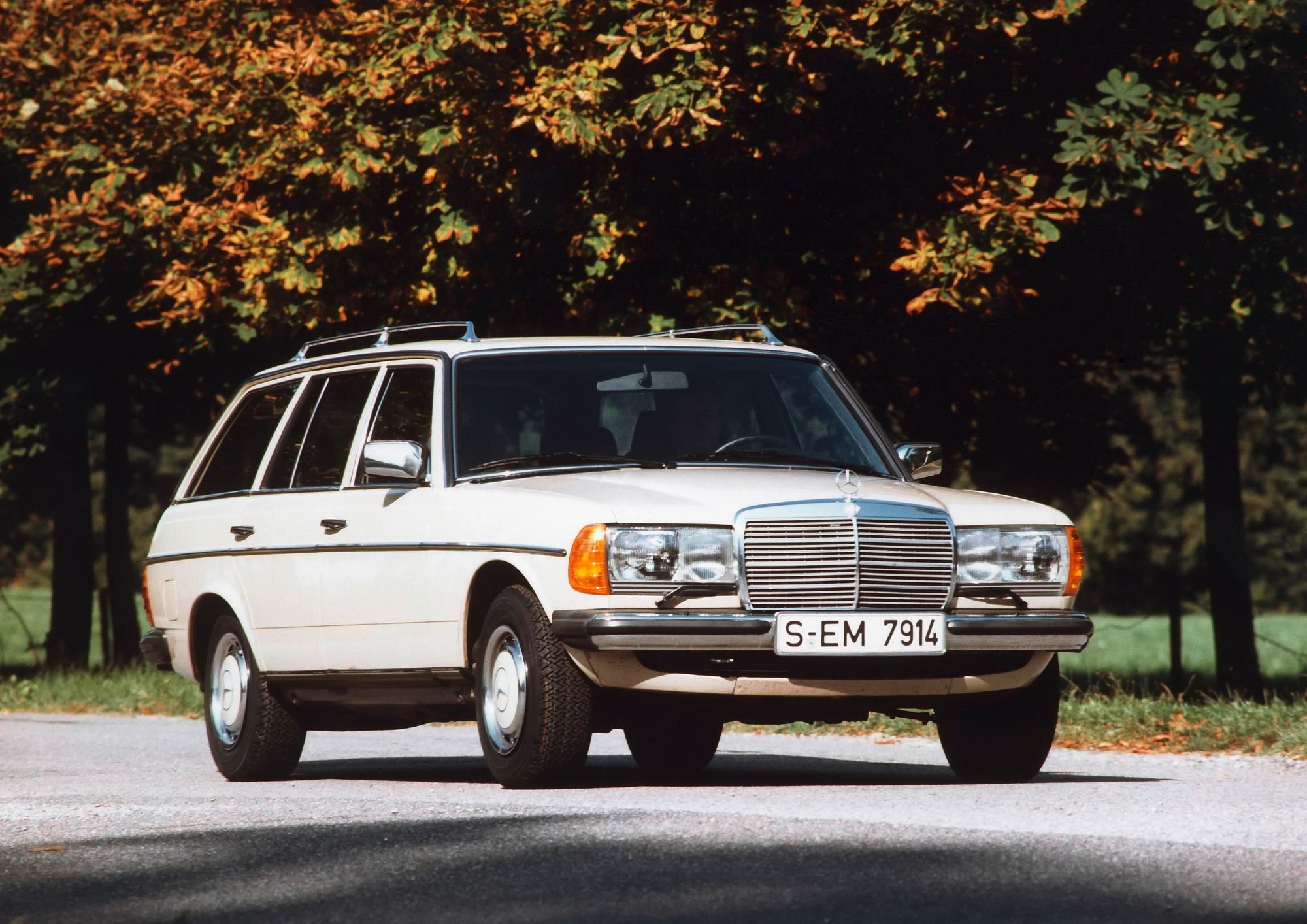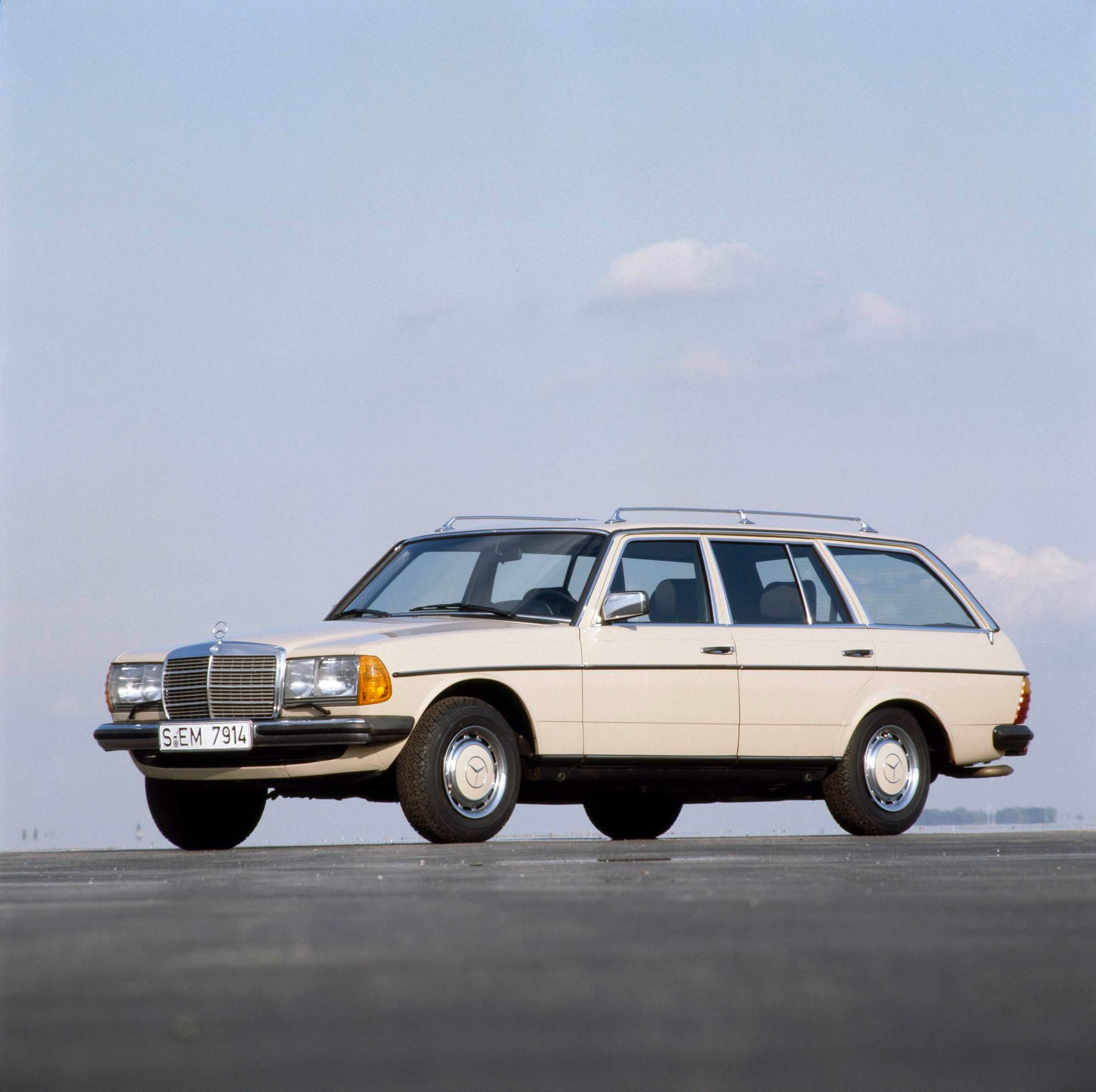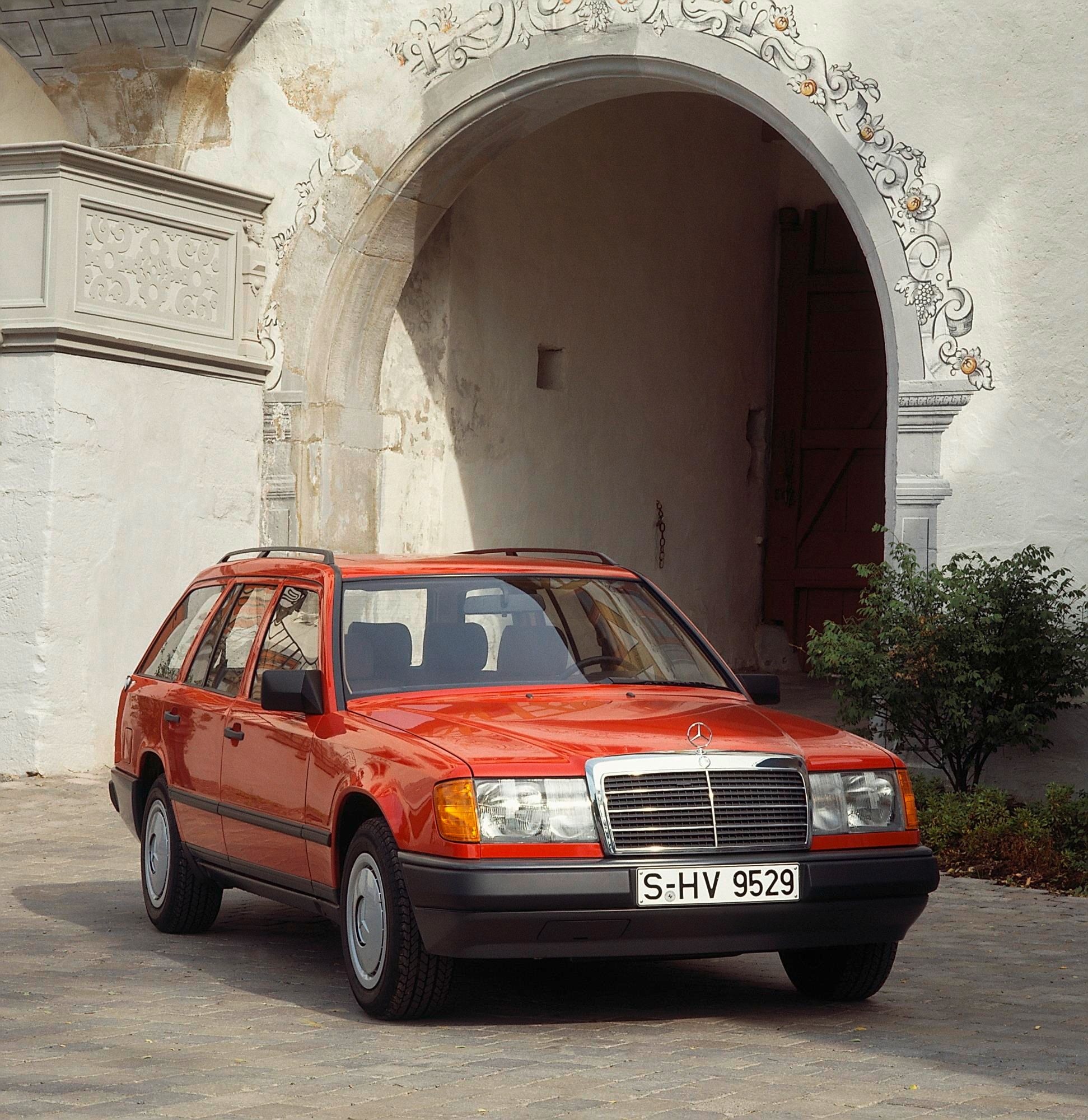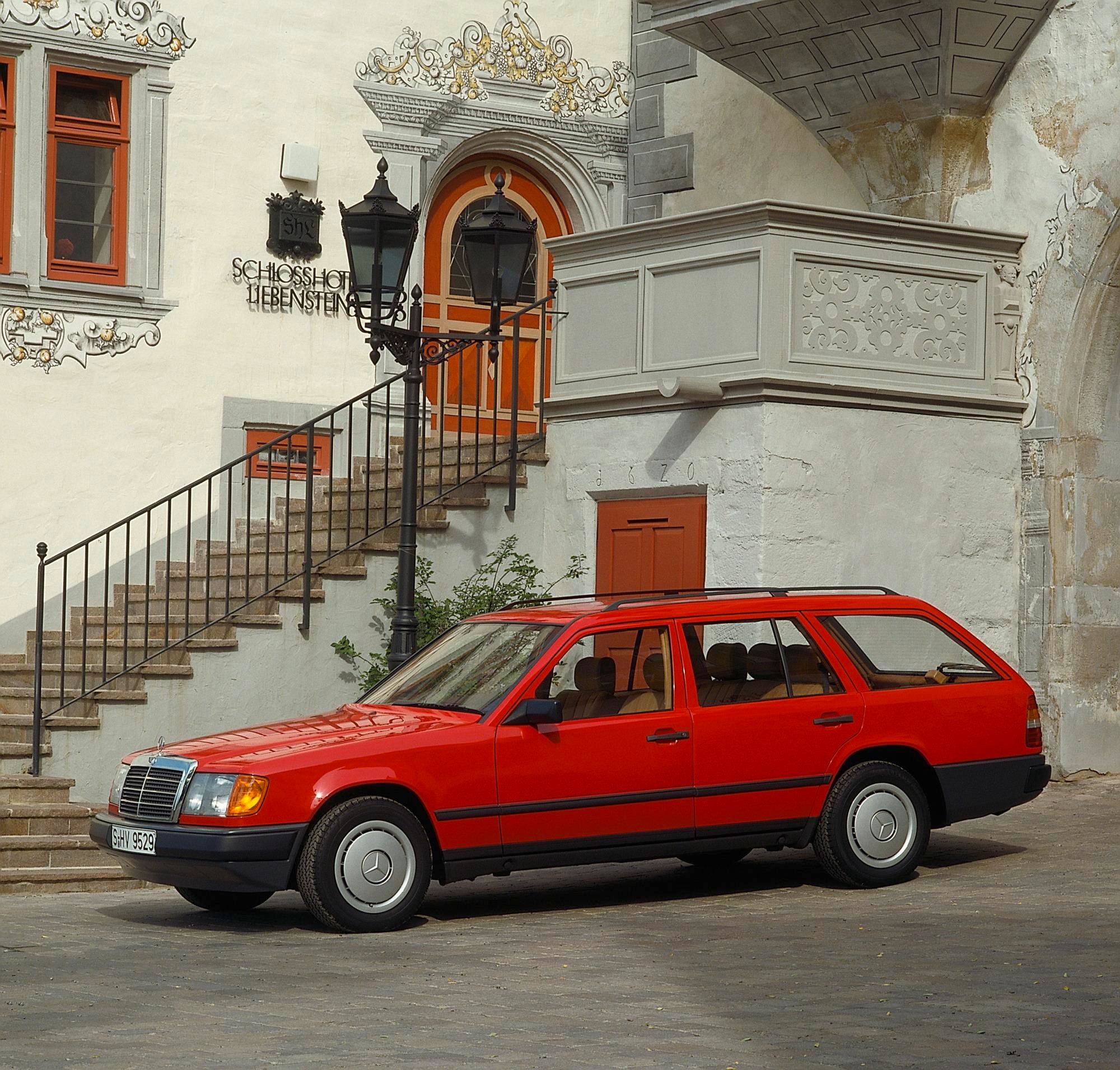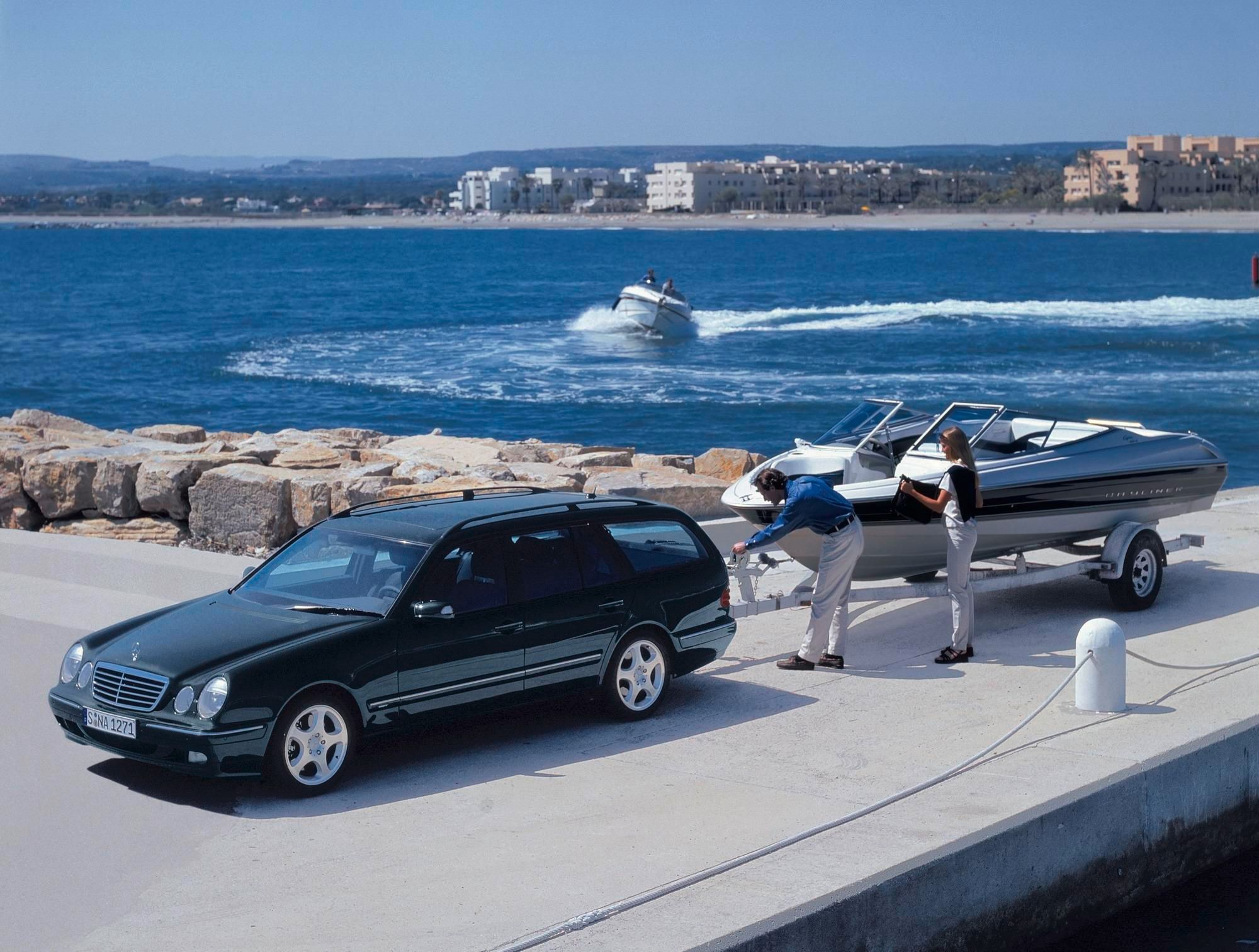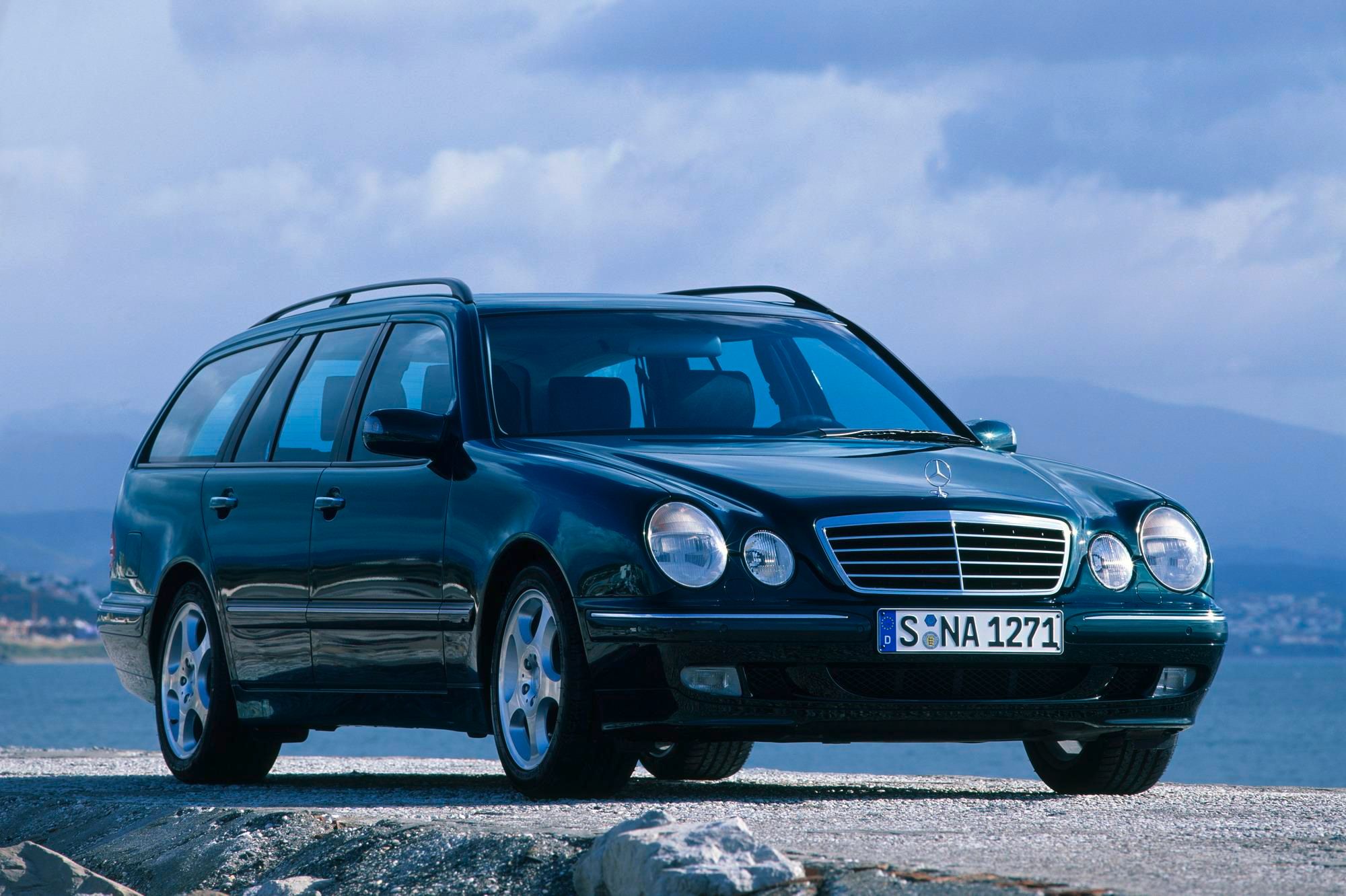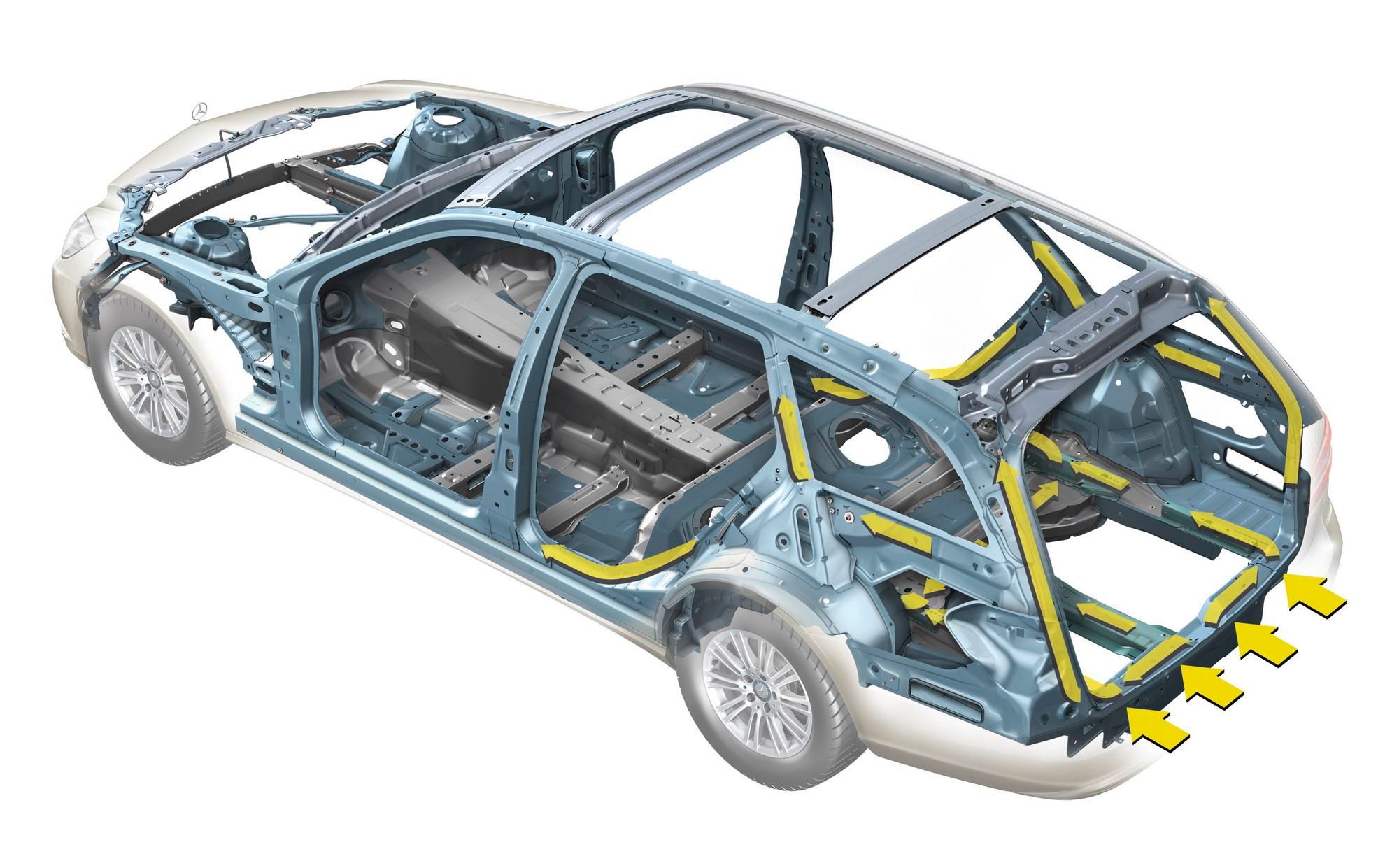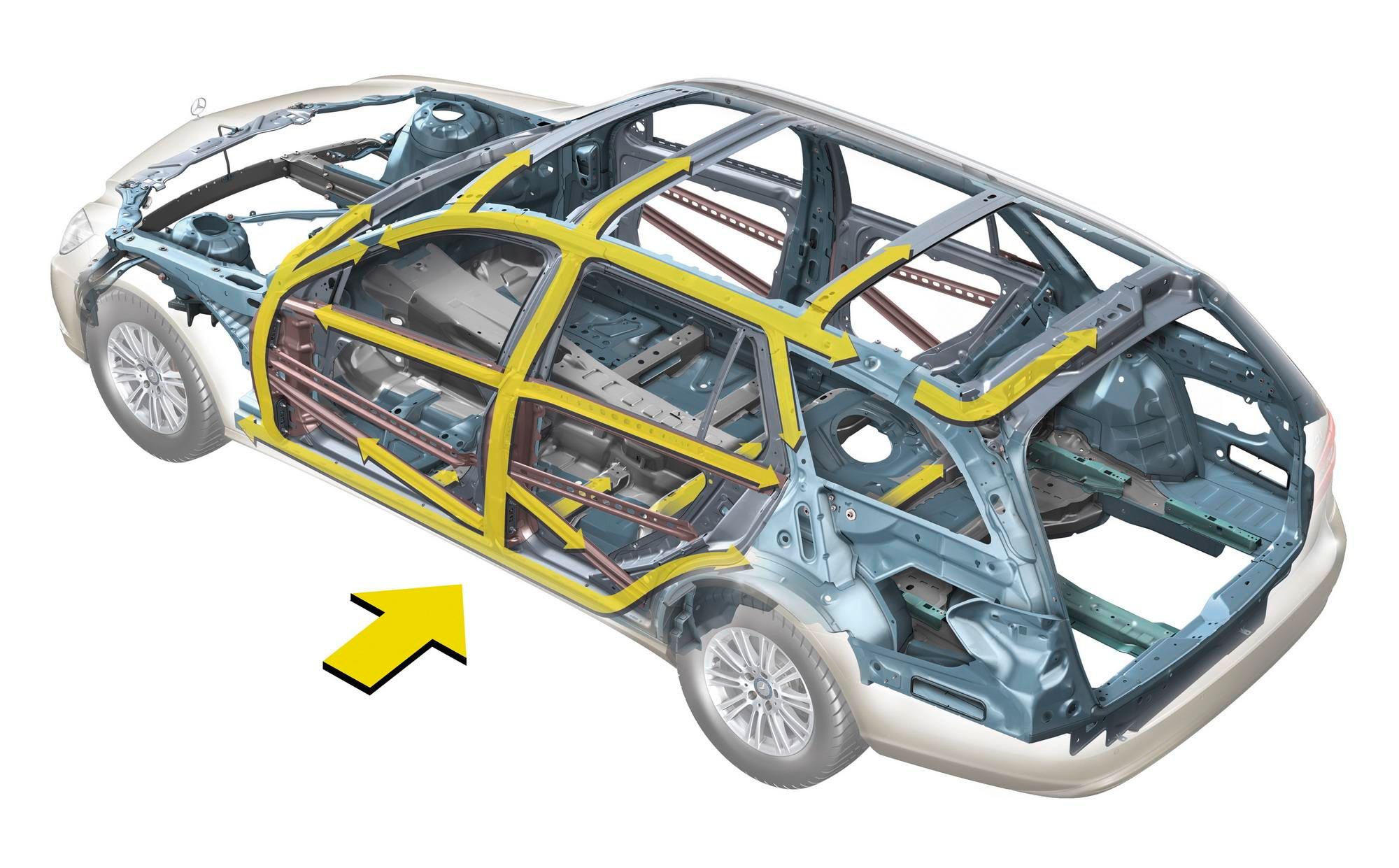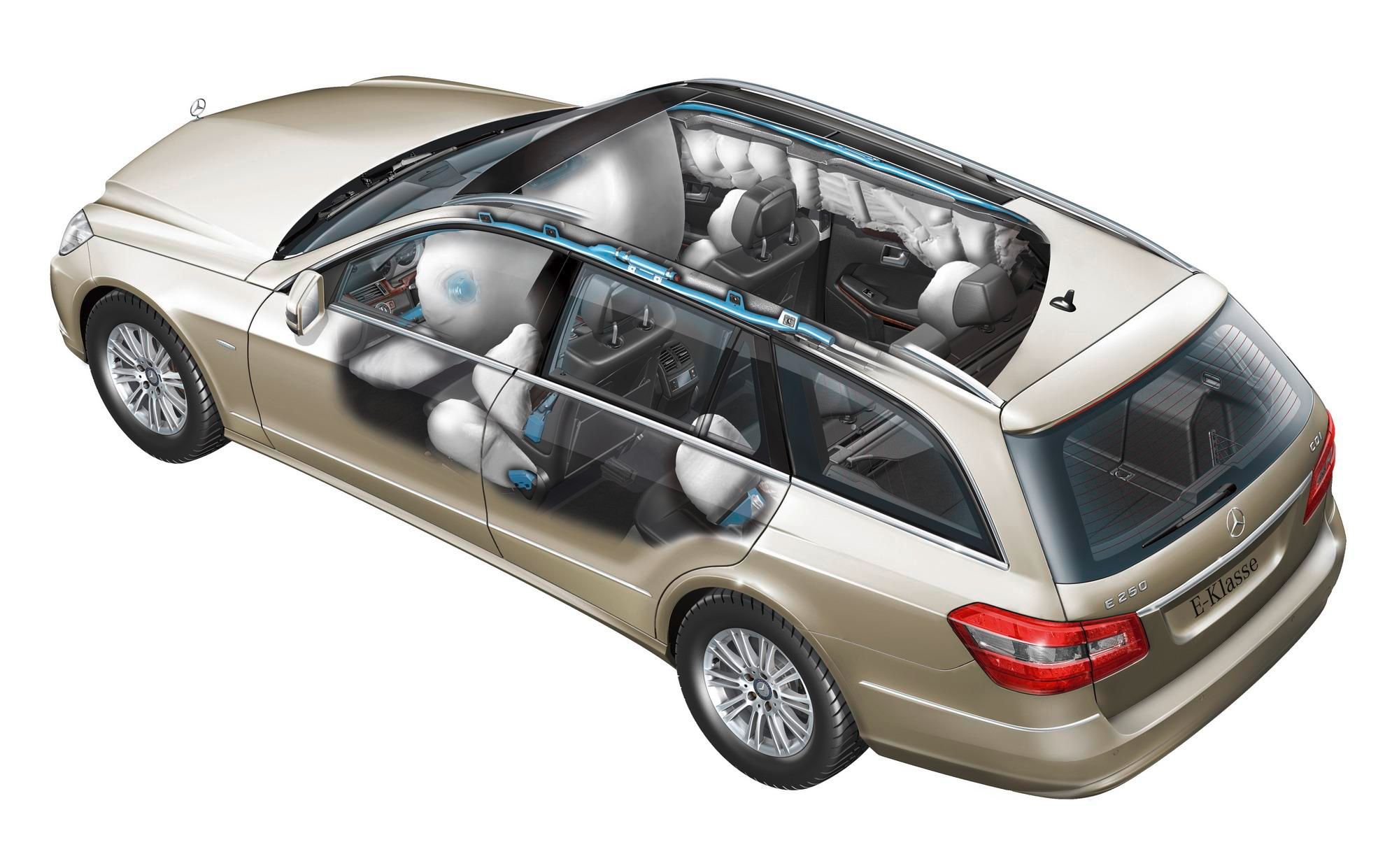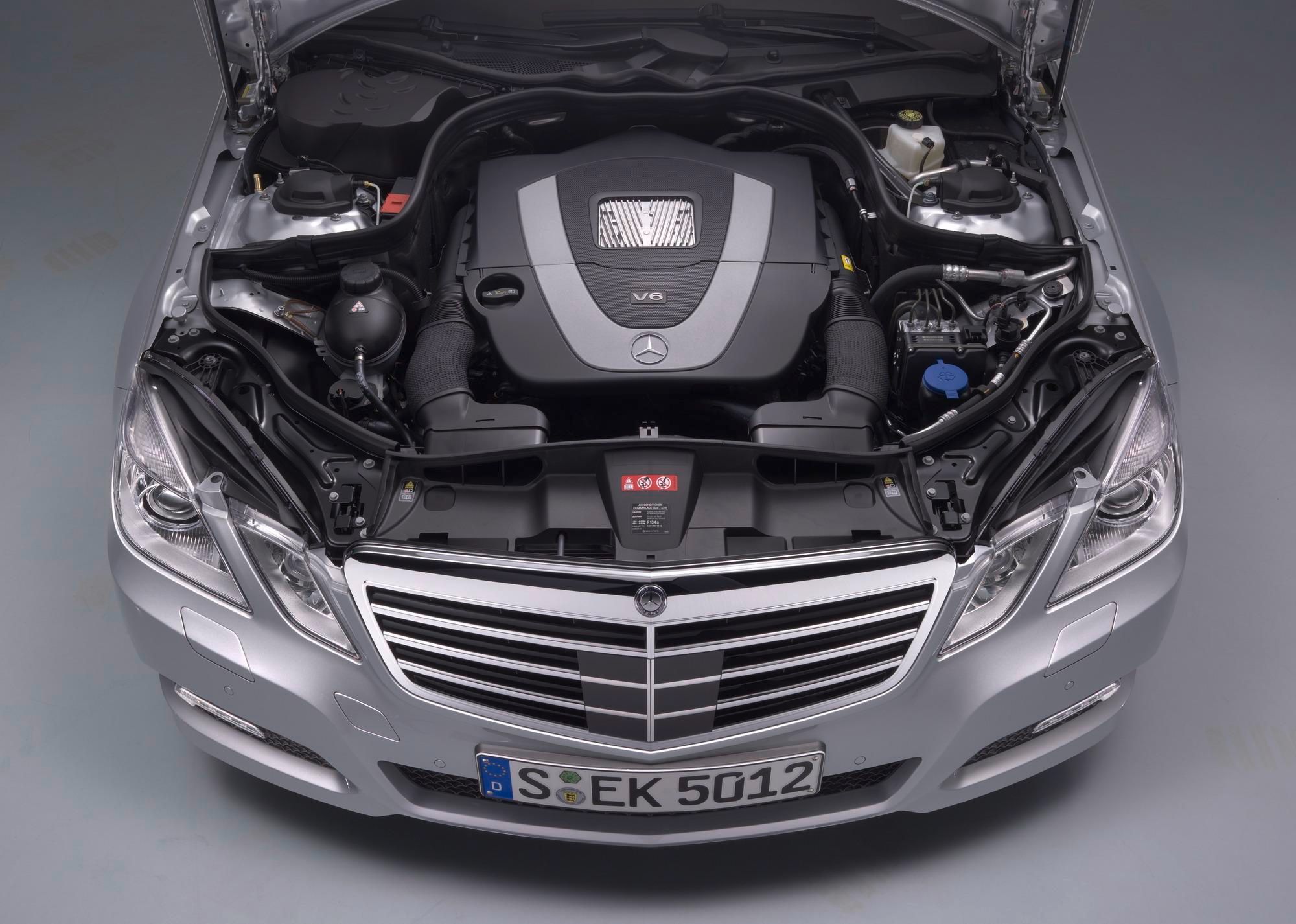The luxury automaker Mercedes Benz has just revealed the official details about the 2010 E-Class Estate, a model that will go on sale in Europe starting November priced at €44,803 for the diesel powered E 220 CDI BlueEFFICIENCY version.
Based on the new theme of Mercedes styling that was introduced with the S-Class->ke359 and then showed up again in the restyled C-Class->ke1593, the new E-Class Estate brings the new flavor of German styling full circle. The estate model has a length of 4895, width of 1854 and a height of 1471 millimeters, offering a total cargo capacity of 1950 liters.
In November the new model will be offered with a choice of three diesel and two gas burning engines. The petrol lineup will include a 288 HP E 350 CGI BlueEFFICIENCY and the 382 HP E 500. The alternatively fueled lineup will include a 168 HP E 220 CDI BlueEFFICIENCY, the 201 HP E 250 CDI BlueEFFICIENCY and the 228 HP E 350 CDI Blue-EFFICIENCY. In 2010 Mercedes will add another two diesel engines to the mix.
With the new E-Class->ke373 Estate Mercedes is offering the latest in safety technologies with systems like attention assist, Distronic Plus (cruise control on steroids), and Pre-Safe braking (automatic braking in emergencies), but also nine airbags fitted as standard, four belt tensioners and belt force limiters, and NECK-PRO crash-responsive head restraints for the driver and front passenger.
Full details in the press release after the jump.
mercedes-e-class-estate
- Make: Array
- Model: mercedes-e-class-estate
2010 Mercedes E-Class Estate
- [do not use] Vehicle Model: Array
Press release
From November 2009, Mercedes-Benz is launching the Estate version as another highly distinctive member of the E-Class family. Like the Saloon and Coupé, the Estate, which is available now, combines unique design with leadership in safety, comfort, quality and practicality. The new E-Class marks the debut of a number of technical innovations which no other car in the world in this category is able to offer - from drowsiness detection to automatic emergency braking when an accident is recognised as imminent, and from Adaptive Highbeam Assist to the Active Bonnet. Naturally the Estate also features all these innovations. Plus air suspension with self-levelling at the rear as standard and unique new load compartment management features.
The E-Class Estate is seen as the progenitor of the premium lifestyle estate segment more than 30 years ago. Since the launch of the first Estate in 1977, more than one million customers have discovered their enthusiasm for this most practical way of driving a Mercedes luxury car. This success story is set to be continued by the fifth generation of the E-Class Estate – following up on the successful launch of the Saloon. Only introduced in Europein spring 2009, the E‑Class Saloon had already achieved world-wide market leadership in its segment by May 2009. Some 40,000 new E-Class models have now been delivered to customers.
The performance of the Saloon and Coupé in the 2009 AutoBild Design Awards shows how well the striking lines of the E-Class have been received: more than 100,000 readers of this German motoring publication recently voted the four-door model the most beautiful car in the world, and gave the two-door model first place in the Coupé/Cabriolet category.
Design: new Mercedes hallmarks combined with E-Class styling features
The new Estate immediately makes an athletic and practical, but also effortlessly superior and safe impression. Its distinctive design character is based on the new Mercedes style, which had its debut in the S-Class and is now also represented in the C-Class. One of its main features is the interplay between concave and taut surfaces, which are delimited by dynamic edges and structured contours.
The side view reveals many new elements, leaving no doubt about the identity of the new Estate. The B- and C-pillars appear to merge into the background thanks to glossy, black trim panels, making the entire side window area look like a single entity. This leads to a taut arch leading from the filigree A-pillar to the dramatic roof line and the downward-tapering D-pillar, all resting on the athletic shoulder line of the Estate. The intriguing design of the door sill panels, which are visually understated in the centre but feature a prominent light-catching contour towards the wheel arches, accentuates the dramatic overall effect of the side aspect. This is additionally emphasised by the muscular, sweeping line on the rear side panel in front of the rear wheel.
When shaping the rear end, the Mercedes designers took care to give expression to the high practicality of the new model. They did this by emphasising horizontal lines, for example the band formed by the tail lights and the chromed tailgate handle. The new LED tail lights are based on a two-piece design, and create a visual continuation of the side wall into the tailgate. Both by day and night, their distinctive design is a major recognition factor for the E-Class Estate. This is the largest estate car in the premium segment, and it makes no secret of the fact.
Practicality: top marks for load capacity and ease of operation
One particularly special feature of the load compartment management system is the option of opening the standard-fit EASY-PACK tailgate automatically by using the ignition key or pressing the handle if the car needs to be loaded from behind. The innovative "quickfold" system enables the rear seat backrests to be folded down from the load compartment. Neither the head restraints nor the rear-seat cushions need to be adjusted beforehand in order to be able to do this. The two backrest sections are unlocked and folded down by a cable pull, creating a level loading surface. As another useful feature, either the left or right backrest sections, or both together, can be folded down. This enables the rear seat unit to be used by passengers even when long and bulky items are being carried. The backrest sections can also be unlocked and folded down from the side.
It is now also much easier to use the combined luggage compartment cover and retaining net, which is attached at beltline level for the first time, making it far simpler to install and remove in various positions.
With a load capacity of up to 1950 litres, the new E-Class Estate (length/width/ height: 4895/1854/1471 millimetres) sets the standard in its class. Apart from the load compartment capacity itself, other dimensions of great practical importance – such as the rear aperture, load compartment sill and maximum load compartment length – demonstrate the expertise of Mercedes-Benz when it comes to estate car engineering.
It is not only in the load compartment that the generous dimensions of the preceding model have been improved even further in many respects. Two examples in the interior illustrate this: the elbow width in the rear has been increased by 50 millimetres to 1505 millimetres. Rear headroom with the large tilting/sliding sunroof installed has also improved by 50 millimetres to 1010 millimetres, and is almost as generous as in versions with no sunroof (1012 mm).
An exemplary load management system is specified as standard. For example, the automatically opening and closing EASY-PACK tailgate with automatic raising of the load compartment cover, or the EASY-PACK folding load compartment floor. The latter considerably increases the usable height of the load compartment. It can be folded up and secured in various positions. Standard equipment also includes the EASY-PACK load compartment cover with a load securing net. When extended, the load compartment cover can be hooked into electrically powered carriers on the D-pillars. When the tailgate is opened, the load compartment cover is automatically raised to allow unobstructed loading and unloading. The optional folding bench seat for the load compartment is also unique in this vehicle segment.
Safety: nine airbags as standard, plus innovative driver assistance systems
Mercedes-Benz has consolidated its leadership in safety even further with the new E-Class. Around one dozen new or modified driver assistance systems help to prevent road accidents or at least reduce the severity of the impact. These include the standard ATTENTION ASSIST drowsiness detection system, the optional DISTRONIC PLUS proximity control and the optional PRE-SAFE® Brake, which is able to initiate partial and full emergency braking autonomously. For the first time, PRE-SAFE® is also able to use only the information received from the short-range sensors in the front bumper to tension the front seat belts at the last moment before an accident recognised as unavoidable, thereby reducing the loads exerted on the driver and front passenger during the crash.
With nine airbags fitted as standard, four belt tensioners and belt force limiters, and NECK-PRO crash-responsive head restraints for the driver and front passenger, the new E-Class offers an even more extensive package of safety equipment than its predecessor. The airbags, which can deploy in a matter of milliseconds in the event of an accident, include two adaptive airbags for the driver and front passenger, a kneebag for the driver, two sidebags in the front-seat backrests and two large windowbags which extend from the A-pillar to the C‑pillar during a side impact. Pelvisbags for the front occupants are also included for the first time. These reduce the loads acting on the torso and pelvic area during a lateral collision.
Sidebags for the rear seat passengers can also be installed as optional extras. As a further safety innovation, Mercedes-Benz also offers optional, self-adaptive belt force limiters for the rear. These adjust to the size and weight of the passengers, and also become available for the Saloon with the introduction of the Estate.
Suspension: automatic self-levelling at the rear as standard
Outstanding comfort on long journeys in the Estate is ensured by the newly developed DIRECT CONTROL suspension, which features the adaptive damping system as standard. The likewise standard self-levelling rear suspension sees to it that the Estate always remains at the same level, even when fully laden. The Estate's suspension setup has also been adapted to suit the modified body geometry, with slightly stiffer shock absorber settings and torsion bar stabilisers, making the Estate just as agile as the Saloon without having to make compromises in terms of road roar and tyre vibration characteristics.
Engines: considerable reduction in fuel consumption and emissions
The fuel consumption and emissions of the new Estate have been considerably reduced by new engines and numerous optimisation measures (aerodynamics, weight, energy management, reduced resistances). One prime example is the E 250 CDI with an output of 150 kW and a peak torque of 500 Nm, whose fuel consumption is only 5.7 litres per 100 km, with CO2 emissions of 150 g per km.
The engine line-up available for the new Estate at launch comprises five units developing between 125 kW/170 hp and 285 kW/388 hp. Though with a lower displacement, the new and modified engines generate more output than their predecessors, while impressing with fuel consumption figures that were previously only found in the compact class. This was made possible by numerous innovations, for example spray-guided direct injection for the E 350 CGI BlueEFFICIENCY petrol model. The four-cylinder CDI engines partly owe their exceptional status to newly developed piezo injectors and two-stage turbocharging. All the powerplants meet the requirements of the EU5 emission standard. The E-Class Estate can be ordered now. All of the engines available at launch, the accompanying transmissions installed as standard and the basic prices at a glance:
Diesel
- E 220 CDI BlueEFFICIENCY: 4-cylinder in-line, 2143 cc, 125 kW/170 hp, 5.7-5.8 l per 100 km, CO2 150-153 g/km, 6-speed manual transmission, from € 44,803.50
- E 250 CDI BlueEFFICIENCY: 4-cylinder in-line, 2143 cc, 150 kW/204 hp, 5.7-5.8 l/100 km, CO2 150-153 g/km, 6-speed manual transmission, from € 47,719
- E 350 CDI BlueEFFICIENCY: V6, 2987 cc, 170 kW/231 hp, 7.0-7.3 l/100 km, CO2 185-192 g/km, 7-speed automatic transmission, from € 54,204.50
Petrol
- E 350 CGI BlueEFFICIENCY: V6, 3498 cc, 215 kW/292 hp, 8.6–8.9 l/100 km, CO2 200-208 g/km, 7-speed automatic transmission, from € 55,156.50
- E 500: V8, 5461 cc, 285 kW/388 hp, 11.1–11.2 l/100 km, CO2 258-260 g/km, 7-speed automatic transmission, from € 70,150.50
The following additional models are available from the first quarter of 2010 onwards:
Diesel
- E 200 CDI BlueEFFICIENCY: 4-cylinder in-line, 2143 cc, 100 kW/136 hp, 5.7* l/100 km, CO2 150* g/km, 6-speed manual transmission, from € 41,947.50
- E 350 CDI 4MATIC BlueEFFICIENCY: V6, 2987 cc, 170 kW/231 hp, 7.6–7.7 l/100 km, CO2 200-203 g/km, 7-speed automatic transmission, from € 56,941.50
Petrol
- E 200 CGI BlueEFFICIENCY: 4-cylinder in-line, 1796 cc, 135 kW/183 hp, 7.7* l/100 km, CO2 179* g/km, 6-speed manual transmission, from € 42,721
- E 250 CGI BlueEFFICIENCY: 4-cylinder in-line, 1796 cc, 150 kW/204 hp, 8.0-8.2 l/100 km, CO2 185-191 g/km, 5-speed automatic transmission, from € 47,719
- E 350 4MATIC: V6, 3498 cc, 200 kW/272 hp, 10.2-10.3 l/100 km, CO2 238-241 g/km, 7-speed automatic transmission, from € 56,941.50
-----
Model range
A number of technical innovations have been incorporated into the new E-Class which no other car in this class is able to offer - from drowsiness detection to automatic emergency braking when an accident is recognised as imminent, and from Adaptive Highbeam Assist to the active bonnet. At the same time, the standard equipment already represents the established basic values which are synonymous with the E-Class, such as comfort, safety and style. Highlights of the standard equipment include:
- Adaptive driver and passenger airbags
- Adaptive flashing brake lights
- Active Bonnet with reversible actuator
- Anti-lock braking system (ABS)
- Connection for external audio device
- Electrically adjustable and heated exterior mirrors
- Audio 20 CD radio with twin tuner, CD player and eight loudspeakers
- Controller
- 225/55 R 16 wide-base tyres
- Brake Assist
- ADAPTIVE BRAKE system with Hold function and Hill Start Assist
- Roof rails (black on standard model, aluminium on ELEGANCE and AVANTGARDE lines)
- Direct-Steer system (V6 and V8 models)
- Combined luggage cover and retaining net
- EASY-PACKfolding load compartment floor and EASY-PACKload compartment cover
- EASY-PACKtailgate (electromechanically operated)
- Anti-theft alarm system with tow-away protection and interior monitoring
- Electronic Stability Program (ESP®) with acceleration skid control (ASR)
- Colour display in dashboard
- Belt tensioners and belt force limiters for the outer rear seats
- Belt tensioners and belt-force limiters for driver and front seat passenger
- ISOFIX child seat attachment for the outer rear seats
- THERMATIC automatic climate control with combination activated charcoal filter (E 500: THERMOTRONIC)
- Kneebag for driver
- Folding box beneath the luggage compartment floor flap
- NECK-PRO crash-responsive head restraints
- Light-alloy wheels
- Air suspension with automatic self-levelling at the rear
- AIRMATIC air suspension (E 500)
- ATTENTION ASSIST drowsiness detection system
- Nappa leather multifunction steering wheel with chrome inserts
- PRE-SAFE®anticipatory occupant protection
- Tyre pressure loss warning system
- Windscreen wipers with intermittent setting and rain sensor
- Sidebags and pelvisbags for driver and front passenger
- Daytime driving lights
- Bluetooth hands-free system for telephone
- Cruise control
- Front seats electrically adjustable for height, inclination and backrest angle
- Heat insulating green-tinted glass all round
- Windowbags
- Central locking with crash sensor
AVANTGARDE
The AVANTGARDE line affords the E-Class Estate a distinctively modern and sporty look. This is down to a number of additional items of equipment, for example:
- Interior ambient lighting
- Bi-xenon headlamps with Intelligent Light System
- Beltline trim strip in polished stainless steel
- 245/45 R 17 wide-base tyres
- Chrome trim strips on the sides and the rear bumper
- Sporty front bumper
- Automatically dimming interior mirror
- Special interior colours: chestnut brown and natural beige with black roof liner
- Bright silver instrument cluster in a sporty tubular design
- LED daytime driving lights
- Upholstery in combined fabric/ARTICO man-made leather
- Seats featuring horizontal fluting
- Sports suspension tuning with lowered body
- Chrome-plated radiator grille with three high-gloss, black louvres
- High-gloss, black ash trim elements (optional extra: brushed aluminium)
ELEGANCE
The ELEGANCE line (standard on the E 500) very much lives up to its name, highlighting the elegant, classic character of the Estate. It includes a number of additional items to supplement the standard equipment, for example:
- Ambient lighting
- Chrome trim strips on the front bumper, the sides and the rear bumper
- Front apron with black air intake and chrome trim strips
- Automatically dimming interior mirror
- Chrome-plated radiator grille with four silver painted louvres
- Seats with vertical fluting
- High-gloss burr walnut brown trim elements (optional extra: open-pore ash brown wood trim)
AMG Sports package
The AMGSports package provides another option to equip the Estate according to your own personal taste while at the same time enhancing the dynamic character of the vehicle. The package includes a number of valuable details which for the most part are not available individually. For example:
- 18-inch light-alloy, five twin-spoke wheels
- Wide-base tyres: 245/40 R 18 (front; all round on the 4MATIC) and 265/35 R 18 (rear)
- Enlarged brake discs
- Three-spoke, nappa leather sports steering wheel
- Floor mats with AMGlettering
- Perforated brake discs and brake calipers with the Mercedes-Benz logo
- Gearshift paddles on the steering wheel (on specifications with automatic transmission)
- Black fabric roof lining (in conjunction with AVANTGARDE equipment line or black upholstery)
- Sports suspension with lowered body
- Sports pedals in brushed stainless steel with black rubber studs
- Front sports seats in DINAMICA microfibre and ARTICO man-made leather
- AMG-styled front and rear bumpers as well as side skirts
Exclusive package
For particularly discerning drivers, Mercedes-Benz has put together the Exclusive package. Among other items, it includes:
- Velour floor mats with nubuck strip in appointments colour
- Wood/leather steering wheel
- Roof lining, sun visors and pillar trim in Alcantara
- Instrument panel and upper sections of doors in high-grade finish with decorative stitching
- Seat covers, armrests and door linings finished in nappa leather
Equipment packages: comfort and safety combined
No other automobile in this segment offers such an extensive and intelligently coordinated combination of modern driver assistance systems as the new E-Class. To ensure that customers derive the greatest possible benefit from these technologies, Mercedes-Benz offers specific innovations as optional packages:
- The Lane Tracking package includes Lane Keeping Assist and Blind Spot Assist.
- In the Driving Assistance package Mercedes-Benz mainly combines systems that can actively help to prevent rear-end collisions: the radar-based proximity cruise control system DISTRONIC PLUS, Brake Assist PLUSand the automatic braking system PRE-SAFE®Brake. This equipment package also includes Lane Keeping Assist and Blind Spot Assist.
- Mercedes-Benz has put together the Light package for drivers who are frequently on the road at night. This not only includes bi-xenon headlamps, the Intelligent Light System and LED daytime driving lights, but also the innovative Adaptive Main Beam Assist.
- For comfort-conscious customers, the new E-Class provides the Active Multicontour Seat package, which includes the newly designed multicontour seats with massage function and driving dynamics control function. Mercedes-Benz provides multicontour seats with adjustable seat cushion length and lateral backrest support as part of the Multicontour Seat package.
- The Memory package has electrically adjustable seats with 4-way lumbar support for the driver and front passenger, including a memory function for the seats, exterior mirrors and steering column.
- The Mirror package includes automatically dimming interior and outside mirrors and electric folding outside mirrors.
- The Sun Protection package includes pull-out, two-piece folding comfort sun visors for driver and front seat passenger as well as manual roller sunblinds on the rear doors.
- The Anti-Theft Protection package includes the anti-theft alarm system with interior monitoring system and tow-away protection.
Light, airy feeling of spaciousness: the new full-glass roof
The new full-glass roof, now available as an optional extra on the Estate, provides a unique open-air feeling. Compared with conventional sliding sunroofs, it features a glass area which is twice as large, creating an exceptionally bright, light and airy feeling in the interior. The full-glass roof consist of three elements: a fixed glass section at the front, a movable glass cover in the middle, and a fixed glass roof cover at the rear. Visually, the area of glass therefore stretches from the windscreen right back to the C-pillars.
The glass top sliding roof can be adjusted electrically - and can be moved both upwards (vertical action) and along its length (sliding action). Such adjustments can even be made from outside the vehicle with the aid of the electronic ignition key. The wind deflector automatically folds into position as soon as the movable glass section slides backwards. It helps to reduce wind noise and improve air flow in the interior. Protection from sunlight is provided by the tinted glass and also two electrically operated roller blinds. They are fitted into the fixed centre spar of the modular roof and can be adjusted forwards and backwards at the same time and also fixed in any desired position.
-----
Design
The new Estate immediately makes an athletic, safe and practical impression. It is the largest estate car in the premium segment, and it makes no secret of the fact.
Its distinctive design character is based on the new Mercedes style, which had its debut in the S-Class and is now also represented in the C-Class and also the E-Class Saloon and Coupé. One of its characteristics is the interplay between concave and taut surfaces, which are delimited by dynamic edges and structured contours.
The performance of the Saloon and Coupé in the 2009 AutoBild Design Awards shows how well the striking lines of the E-Class have been received: more than 100,000 readers of the German motoring publication voted the four-door model the most beautiful car in the world, and gave the two-door model first place in the Coupé/Convertible category.
The almost 50-man E-Class design team in Sindelfingen developed all model variants of the series in parallel – this was important to ensure that a uniform design was achieved, and so that at the same time optimum solutions could be found to reconcile the conflicting priorities of family resemblance and individual character.
Front: new twin headlamp face, different bumpers depending on line
The twin headlamp face has been one of the characteristic features of the Mercedes-Benz E-Class for some 14 years. The new model has remained true to this style element, although in an updated design: the Mercedes designers have now made the headlamps - which have always previously been oval - rectangular. But whether night or day, the distinctive shape of the headlamps is the most important distinguishing feature of the new E-Class generation.
Like the headlamps, the bumper blends perfectly into the car's body, completing the harmonious overall impression of the front section. The dynamic lines that flow outwards, the distinctively shaped spoiler edges in the lower area and the bumper's broad air intake emphasise the Estate's effortlessly superior aura, making it appear even wider and more athletic than before.
These and other styling elements also enhance the profile of each of the equipment lines, helping to accentuate their unique character. Hence the AVANTGARDE line features a front bumper with a sporty design, which looks wider and more athletic than that of the ELEGANCE line on account of the large lower air intake featuring a black painted grille with diamond-shaped perforations typical of a sports car. This impression is reinforced by the LED daytime driving lights, which are integrated in an attractively styled crossmember; these lights are standard equipment for the AVANTGARDE model, as is the Intelligent Light System with bi-xenon headlamps.
Another feature which makes for clear demarcation between each of the lines is the chromed radiator grille: on the AVANTGARDE model it sports a unique look on account of its three high-gloss black louvres, while the design used for the ELEGANCE line stands out by virtue of its four louvres painted in metallic silver. The standard model has a radiator grille with three louvres in stone grey.
Profile: wraparound lights as an unmistakable distinguishing feature
The side view reveals many new features, leaving no doubt about the identity of the new Estate. The B and C-pillars appear to merge into the background thanks to glossy, black trim panels, making the entire side window area look like a single unit. This leads to an expressive arch leading from the filigree A-pillar to the dramatic roof line and the downward-tapering D-pillar, all resting on the athletic shoulder-line of the Estate. The high beltline is a further style element of the new Mercedes design idiom and reinforces the sense of safety experienced by passengers.
The intriguing design of the door sill panels, which are visually understated in the centre but feature a prominent light-catching contour towards the wheel arches, accentuates the dramatic overall effect of the side aspect. This is additionally emphasised by the muscular, sweeping line on the rear side panel in front of the rear wheel. At the same time this underlines the fact that it belongs to the same family as the E-Class Saloon, which bears a similar style element on the rear wings which is reminiscent of its predecessor, the Mercedes "Ponton" from 1953.
Rear end: emphasis of horizontal lines and a high degree of functionality
When shaping the rear end, the Mercedes designers took care to give expression to the high practicality of the Estate. They did this by emphasising horizontal lines, for example the band formed by the tail lights and the chromed tailgate handle. The glass of the rear window covers the frame of the tailgate, which once again accentuates the horizontal lines. The large loading hatch reaches over into the bumper.
The new LED tail lights are based on a two-piece design, and create a visual continuation of the side wall into the tailgate - an additional safety feature and at the same time a distinctive recognition feature for the new E-Class Estate. The individual compartments of the tail lights are both illuminated and back-lit using an ingenious technique, which adds to the sense of depth and makes the Estate unmistakable even at night. The meandering contour of the tail lights is reminiscent of the dirt-deflecting ribs of the rear lights introduced on the S-Class back in 1972.
Interior: complete harmony and a generous sense of spaciousness
The design idiom of the exterior is mirrored in the interior. Even with the luggage compartment, the designers have strived to achieve complete harmony. As a result, the colour concept has therefore been implemented consistently throughout: the light roof liner underlines the impressive size of the luggage compartment. The beltline, which has been kept dark to contrast the respective interior colour, runs throughout the whole interior. Viewed from a distance, it gives the impression of a strip encircling the interior, which also continues over the tailgate.
The luggage compartment, along with the side panels and the backs of the rear seats, is lined with high-quality carpet. Depending on the equipment line, there are small nets in the side wells behind the wheel housings, or additional stowage compartments behind the side panels, which in some cases accommodate optional extras such as a CD changer. The combined luggage cover and retaining net fitted as standard is available in all three interior colours. The stainless steel trim on the load compartment sill is a stylish finishing touch which also helps to protects against damage when loading items.
The sense of spaciousness inside the Estate is both comfortable and generous at the same time. This overriding impression of width is predominantly down to the distinctive fine-wood or refined aluminium trim and the precisely integrated ventilation outlets. Thanks to the seamless continuation of form and material between the instrument panel and the door panels, the trim elements cocoon the driver and front passenger. This "welcome-home" feeling is achieved primarily thanks to the use of materials of natural origin - wood and leather. There are a total of four handcrafted wood trims to choose from:
- Standard appointments High-gloss eucalyptus
- ELEGANCE High-gloss brown burr walnut or optionally open-pore brown ash
- AVANTGARDE High-gloss black ash
Those who attach greater importance to sportiness and modernity can opt for high-quality aluminium in place of fine wood. In the standard version, Mercedes-Benz offers the metal with an embossed surface, while the AVANTGARDE line features the option of aluminium trim elements with a brushed surface. The wood or aluminium appointments of the interior are made all the more lavish, since the large trim elements on the instrument panel and the door linings are accompanied by a second trim level on the Estate which further enhances the front section of the centre console and the armrests in the doors. In addition to this, the controls for the automatic climate control system fitted as standard in the ELEGANCE and AVANTGARDE models are embedded in fine wood.
Leather is the second natural material used to enhance the feeling of well-being in the interior. Even the standard version features a multifunction steering wheel and a shift/selector lever trimmed in fine nappa leather. Leather seats are available as optional extras and, if the Exclusive package is ordered, the seats, armrests and door centre panels are trimmed in fine nappa leather.
The instrument cluster reflects the different characters of the lines: the standard model and the ELEGANCE line have circular instruments with chrome surrounds, white illumination and a black background. In the AVANTGARDE cockpit, meanwhile, the instruments feature a matt-silver painted background and deep, slanting tubes, giving them a sporty, elegant aura. Fine chrome rings on the faces underline the high-quality impression of both cockpit variants.
-----
Interior and functionality
Larger wheelbase, larger track width and larger external width - these are the three most important factors behind the significant increase in space in the interior of the Estate. It has even been possible to improve the already generous dimensions of the preceding model in both the rear and luggage compartments in many respects. Two examples in the rear seating area illustrate this: the elbow width in the rear has been increased by 51 millimetres to 1505 millimetres. Rear headroom with the large tilting/sliding sunroof installed has also improved by 50 millimetres to 1010 millimetres, and is almost as generous as in versions with no sunroof (1012 mm). Optionally the E-Class Estate can also be turned into a seven-seater: a third row of seats with two fold-out child seats is available as an optional extra.
Under normal circumstances the luggage compartment is 695 litres, but can be extended to a stately 1950 litres when carrying loads up to roof height by folding the rear seat backrests forward. In addition to the size of the luggage compartment, other key features reflecting Mercedes-Benz's expertise when it comes to the main practical dimensions of the Estate include the load compartment sill (57.2 cm) and the through-load length behind the front seats (more than two metres).
Enhanced user-friendliness: forward-folding rear seat backrests, plus combined luggage cover and retaining net
One particularly special feature of the load compartment management system is the option of opening the standard-fit EASY-PACKtailgate automatically by using the ignition key or pressing the handle if the car needs to be loaded from behind. The innovative "quickfold" system enables the rear 1/3:2/3-split seat backrests to be folded down either from the load compartment by means of handles on the D-pillar or via the rear doors by means of handles on the C-pillars. Neither the head restraints nor the rear-seat cushions need to be adjusted beforehand in order to be able to do this and create a level loading surface. As another useful feature, either the left or right backrest sections, or both together, can be folded down. This enables the rear seat unit to be used also by passengers even when long and bulky items are being carried.
It is now also much easier to use the combined luggage compartment cover and retaining net, which is fitted as standard and is now attached at beltline level for the first time, making it far simpler to install and remove in various positions. At the same time it no longer interferes with the folding forward of the rear seat backrests.
There are six fixed load securing points as standard, along with retractable hooks for bags on each side of the luggage compartment. In addition, two further exterior hooks are also incorporated into the grab handles of the tailgate, so that items of clothing can be hung up, for example, when the tailgate is open.
Practical load space solutions: the EASY-PACK system
Exemplary load management is ensured thanks to the elaborate EASY-PACKsystem which features four useful components as standard:
- EASY-PACKtailgate: the tailgate is operated electromechanically, making loading and unloading significantly easier. This fifth door can be opened and closed at the touch of a button on the ignition key or a button on the tailgate. In the upper third of its opening range the tailgate can be stopped at any desired opening angle by pressing the button on the ignition key - a useful feature in garages with low ceilings, for example. The desired opening angle can also be programmed in via the switch on the tailgate.
- EASY-PACKfolding load compartment floor: underneath the luggage compartment there is stowage compartment with a capacity of up to 132 litres (with TIREFIT). Thanks to the EASY-PACKfolding load compartment floor, this compartment can be used in a variety of different ways by folding up the floor and adjusting it into different positions. In this way, additional vital centimetres can be gained for the load height, for example when delicate plants need to be transported in an upright position. In the case of the ELEGANCE and AVANTGARDE lines, the second load level is also divided into practical compartments. In the base version, this feature is available as an optional extra in conjunction with the EASY-PACK-load-securing kit.
- EASY-PACKload compartment cover: if the tailgate is opened, the load compartment cover is automatically raised to allow unobstructed loading and unloading. When the luggage compartment is closed again, the load compartment cover automatically returns to its initial position.
- EASY-PACKrear sill protector: a protective mat, retained in place inside the load compartment floor by means of a magnetic strip, can be pulled out with the aid of a handle to cover the stainless steel boot sill and bumper shell. This helps to protect the boot sill against scratches and dirt, and also keeps clothes clean when loading. It is also very practical when putting on ski boots, for example, when on a winter holiday. This boot sill protector is available as an optional extra together with the loading rails of the EASY-PACKload-securing kit.
- EASY-PACKfolding box: the folding box provided as standard has a special tailor-made compartment in all versions with a subdivided second load space level under the folding boot floor. It can be folded out in a split second, enabling smaller shopping loads to be stowed quickly and transported safely.
In addition, there is also another ingenious solution:
- EASY-PACKload-securing kit: several components, such as aluminium rails, telescopic rods and belt reels enable the luggage compartment to be divided up horizontally or diagonally. In this way, both small and large objects can be stowed practically and easy in the luggage compartment. At the same time, the load-securing kit is a reliable way to prevent items of luggage, shopping bags or other loads from moving about. The optional EASY-PACKload-securing kit also includes the boot sill protector. If individual items of the kit are not needed, they can be stored away discreetly in a storage bag in the second load level beneath the folding load compartment floor.
-----
Safety
Active safety
In addition to established technologies such as ABS, ESP® and Brake Assist, around a dozen new or improved Driver Assistance systems in the E-Class contribute towards avoiding traffic accidents and reducing the severity of an accident. If the option of a trailer coupling is chosen, the Estate also comes equipped with vehicle/trailer stabilisation as standard. This additional ESPfunction can detect critical swaying oscillations of the car/trailer combination via the towing vehicle's yaw rate signal. By applying the brakes to the individual wheels, the driver is supported automatically to defuse the situation.
In the new E-Class Estate, occupant protection actually begins in the phase leading up to a possible accident thanks to the Mercedes PRE-SAFE® invention, which is specified as standard. If there is a risk of an accident, the system activates protective measures as a precaution, allowing the seat belts and airbags to deploy with maximum effect in the event of a collision. This early accident detection is possible because PRE-SAFE® is an intelligent synergy of active and passive safety. It is linked to Brake Assist and the Electronic Stability Program (ESP®), whose sensors can detect typical critical driving situations and send the relevant information to the electronic control units within a matter of milliseconds. PRE-SAFE® also uses these sensor data.
Moreover, for the first time the system also uses the information provided by the short-range radar sensors (optional extra) in the front bumper to tension the front seat belts at the very last moment before a recognized unavoidable collision, thus reducing the loads exerted on the driver and front passenger during a collision.
Passive safety
One minute the tennis bag is lying unobtrusively in the back corner of the boot. The next minute: bang - emergency braking - and the poorly secured load is already transformed into a dangerous projectile, which flies forwards, threatening the safety of the passengers. Very few drivers are aware of the immense forces which are created in the event of emergency braking and are then brought to bear in an accident. For example: in an accident at 55 km/h, a suitcase weighing 20 kg will strike the back of the rear seats with a force equivalent to a weight of more than 600 kg. This is precisely why the issue of load retention is of vital importance in the case of estates, given their large luggage compartments and diverse use as recreational and family vehicles. It is also precisely why the Mercedes engineers focused their attention on this specific issue when developing the new E-Class Estate.
A few examples:
- The combined luggage cover and retaining net, which is firmly attached to the vehicle body, comes as standard. The net can be attached both behind the first as well as the second row of seats. Irrespective of how far it is pulled out, an extraction lock with ratchet mechanism helps to ensure that no objects can come through into the passenger area.
- Mercedes-Benz has made the rear seat backrests significantly more stable than is required by the applicable legislation.
- With the new PRE-SAFEBrake function (optional extra), the effects of a poorly packed luggage compartment can be alleviated in the event of a registrated emergency situation. If the system initiates autonomous partial braking with around 40 percent of maximum braking power, the load will be automatically supported against the seat backrest and as such will be in a less dangerous position for the passengers in the event of a crash.
- Items can be tied down in the luggage compartment using the six lashing eyelets which are fitted as standard. The folding load compartment floor and EASY-PACKload management system also enable objects to be transported comfortably.
Materials: 78 percent of all panels are made from high-strength steel
Compared to the previous model series, the Mercedes engineers have enlarged the deformation zones substantially in the front and rear sections of the new E-Class Estate as well as improving the energy flows. The front crumple zone has four independently-acting impact levels, meaning that the forces can be distributed over a wide area while bypassing the passenger cell.
The occupant cell proves to be almost completely resistant to deformation in front, rear or side collisions or when overturning. Passengers can thus be assured of an intact space even when the speed of collision is high.
Multi-piece longitudinal members and a solid cross member made of high-grade steel make up the most important components of the rear-end structure. An extruded aluminium hat-section profile between the rear centre section and the spare wheel well helps to stiffen the structure. Despite the increased through-loading width, it has been possible to improve rigidity in the rear area even further compared with the preceding model. This has been helped by the spare wheel well made of steel, additional diagonal struts beneath the load compartment floor and rear longitudinal members with closed cross sections throughout. The steel floor of the spare wheel well has been stiffened with an additional metal shell for optimum load bearing. Typically for a Mercedes-Benz car, the fuel tank is located in a protected position beneath the rear seats, in other words ahead of the rear axle and, therefore, outside of the impact zone.
More so than ever before Mercedes-Benz has given preference to ultra-high-strength steel alloys for the body construction because they offer maximum strength whilst minimising weight and, therefore, are essential for meeting the strict safety and durability requirements. More than two thirds of all the bodyshell panels for the new E-Class Estate are made from these grades of steel. Resistance against distortion (torsion) of the body has been improved by around 50 percent compared with the preceding model. Mercedes-Benz's intelligent material concept also involves the specifically targeted use of aluminium and plastic, both of which help to save weight above all. Hence the front end, bonnet, front wings and transmission tunnel brace of the new Estate are made from aluminium.
Pedestrian protection: Active Bonnet as standard
The protection of those road users who are most at risk has always been a top priority during the development of Mercedes passenger cars. Smooth-surfaced bodies, energy-absorbing bumpers, flush-mounted door handles, laminated-glass windscreens, folding exterior mirrors and recessed windscreen wipers are pedestrian-protection measures that have been features of Mercedes models for many years.
A new addition to the protection programme available as standard is the Active Bonnet, which enlarges the deformation area, reducing the risk of injury to pedestrians. Upon impact with a pedestrian, the sensors send information to the electronic control unit which, in turn, activates two solenoids in the hinges instantaneously. These solenoids release the arresters so that the rear section of the bonnet is pushed upwards by 50 millimetres by means of spring force.
Restraint systems: nine airbags as standard
With nine airbags fitted as standard, not to mention four seat-belt tensioners and belt-force limiters as well as NECK-PRO crash-responsive head restraints for the driver and front passenger, the new E-Class Estate offers an even more extensive package of safety equipment than its predecessor. The airbags, which can deploy in a matter of milliseconds in the event of an accident, include two adaptive airbags for the driver and front passenger, a kneebag for the driver, two sidebags in the front-seat backrests and two large windowbags which extend from the A-pillar to the C-pillar during a side impact. For the first time, pelvisbags are included as standard for front seat passengers, which in the event of a side collision can help to reduce loads in the pelvic area. Sidebags are also available for rear passengers as an optional extra.
Adaptive belt-force limiters in the rear
A further safety innovation: Mercedes-Benz is offering adaptive belt-force limiters for the rear seats as an option for the first time. These adapt to the size of passengers automatically. The system detects whether the rear seat passenger is large or small as soon as the seat belt is put on, based on the length of the pulled-out seat belt, and adapts its protective effect accordingly. The maximum restraint force is activated immediately if the rear passenger is large in size. In the case of smaller occupants, the force exerted by the belt is set to a lower level.
In addition to the ISOFIX child seat attachment system, integrated child seats are also available for the new Estate. They are designed for children from 22 months up to 12 years of age. If needed, the seat cushion can simply be pulled out from the rear seat bench by means of a handle and locked into a raised position. Side head restraints supplement the effect of the integrated child seat and provide head protection in the event of a side collision. They are fixed in place on the mounting supports of the standard head restraints.
-----
Engines
"More power and more driving pleasure with even lower fuel consumption" - this is the motto for the engine range of the new Estate. The new and more advanced engines provide more power with lower displacements than previous engines and impress with consumption figures which previously were only heard of in the compant car class.
The new four-cylinder diesel engine in the E 250 CDIBlueEFFICIENCY for example is proof that the plans have worked out successfully: with an output of 150 kW/204 hp, a peak torque of 500 Nm and a displacement of 2.2 litres, it develops around seven percent more power and delivers 25 percent more torque than the previous V6 diesel engine with a displacement of three litres in the E 280 CDI, whilst consuming around 21 percent less fuel. Consuming 5.7 litres per 100 kilometres (NEDC combined figure), it is significantly more economical than comparable estates in this category.
The CO2 emissions figure for the new four-cylinder diesel models is 150 grams per kilometre - up to 21 percent lower than the figures achieved by the previous CDImodels. As with carbon dioxide emissions, the engines for the new E-Class have also taken a further major step towards the future when it comes to exhaust gas emissions: all of the powerplants meet the requirements of the EU 5 standard, whose limits are up to 80 percent more stringent than those in previous standards.
Diesel engines: new four-cylinder, optimised six-cylinder
At the time of market launch of the Estate, the newly developed CDI four-cylinderis available in two versions with different outputs: 125 kW/170 hp and also 150 kW/ 204 hp. Their respective fuel consumption and CO2 emission figures are 5.7 litres per 100 kilometres and 150 grams per kilometre (combined consumption in NEDC cycle). In the first quarter of 2010, the E 200 CDIproducing 100 kW/136 hp will become available.
The new engines are both powerful and responsive. They feature high pulling power and display an exemplary smoothness of operation which is impressive for a four-cylinder engine. Furthermore, their exceptional responsiveness is reflected in the performance figures: the E 250 CDIBlueEFFICIENCY takes 7.8 seconds to accelerate from 0 to 100 km/h. The E 220 CDIBlueEFFICIENCY, which produces 125 kW/170 hp, can top the 100 km/h mark from a standing start in 8.8 seconds.
This series of four-cylinder engines sees Mercedes-Benz introducing fourth-generation common-rail direct injection into series production. One of its hallmarks is a 400-bar increase in the maximum rail pressure to 2000 bar, newly developed piezo injectors, and also the debut of two-stage turbocharging in a standard-production diesel engine for passenger cars at Mercedes-Benz. The compact module for the new two-stage turbocharger consists of a small high-pressure (HP) turbocharger and a large low-pressure (LP) turbocharger. These are connected in series, and each has a turbine and a compressor driven by this turbine. This means that the optimum charge pressure can be built up at low engine revs.
The V6 diesel engine for the new E-Class is also one of the most sophisticated compression-ignition units on the world market. It offers substantially greater output, comfort and driving enjoyment than other engines thanks to the immense torque of 540 Nm alone, which is available between 1600 and 2400 rpm, enabling outstanding agility when accelerating from rest and exemplary flexibility when accelerating in any gear. The E 350 CDIBlueEFFICIENCY (170 kW/231 hp) accelerates from 0 to 100 km/h in 7.2 seconds.
Despite the higher output, fuel consumption has been reduced to 7.0 to 7.3 litres per 100 kilometres (NEDC combined figure), equivalent to 185 - 192 grams of CO2 per kilometre. The 7G-TRONIC seven-speed automatic transmission is specified as standard for the E 350 CDIBlueEFFICIENCY model. The Mercedes engineers have gone to great lengths to optimise the technology at the heart of the V6 diesel engine, reducing the compression from 17.7 to 15.5 and enhancing the turbocharger with a more efficient EGRcooling zone, switchable bypass duct, ceramic glow system, modified injection nozzles and optimised air ducting.
Petrol engines: CGI engines and optimised eight-cylinder
CGIappears at the end of the model designation of the four- and six-cylinder engines for the new E-Class, signifying that Mercedes-Benz uses direct petrol injection for these powerplants - a technology which allows further advances when it comes to reducing petrol consumption.
Compared to conventional port injection, direct fuel injection allows higher compression and, therefore, improved thermodynamic efficiency, saving motorists money at the pump: the new four-cylinder direct-injection powerplants for the E-Class consume up to 18 percent less fuel than the comparable engines installed in the previous model. In the E 250 CGIBlueEFFICIENCY model (150 kW/ 204 hp), Mercedes-Benz has replaced the previous V6 2.5-litre engine with a four-cylinder 1.8-litre unit yet still manages to increase torque by over 26 percent. This result reveals a further Mercedes strategy for the future: the use of turbochargers in small-displacement engines.Mercedes-Benz equips the E 250 CGIBlueEFFICIENCY model with a five-speed automatic transmission, while the E 200 CGIBlueEFFICIENCY model features a six-speed manual transmission and the ECO start/stop function, which shuts off the engine automatically when it is idling, thus making a significant contribution towards saving fuel.
The E 350 CGI BlueEFFICIENCY model is equipped with the world's first petrol engine to feature spray-guided combustion. The six-cylinder powerplant develops 215 kW/292 hp and provides a peak torque of 365 Nm from 3000 rpm. The key benefit of the six-cylinder engine is delivered in stratified-charge mode, when the powerplant operates with a high degree of excess air and, therefore, extremely fuel-efficiently. Thanks to the state-of-the-art engine technology, fuel consumption is reduced to between 8.6 and 8.9 litres per 100 kilometres (NEDC combined figure), which is up to one litre per 100 kilometres less than the figure achieved by the predecessor. What's more, the highly economical and environmentally compatible CGIpowerplant provides a unique driving experience: it takes the E 350 CGIBlueEFFICIENCY model just 7.0 seconds to accelerate from 0 to 100 km/h. The E 350 4MATIC is available in a version producing kW/272 hp, in combination with all-wheel drive. Its V6 engine features port injection.
The eight-cylinder unit in the E 500 model - the flagship powerplant in the new generation of Mercedes-Benz V engines - incorporates an extensive technology package to create a blend of high output and torque yield with exemplary refinement and effortlessly superior agility. The extent of the powerplant's capability is highlighted by the performance figures for the new top-of-the-range E-Class model, which is equipped with the 7G-TRONIC 7-speed automatic transmission as standard: 0 to 100 km/h in 5.4 seconds.
Mercedes engineers use an intelligent valve-timing concept, achieving a level of progress that is a major factor behind the excellent torque and output characteristics. An optimum supply of fresh mixture for the cylinders is assured thanks to four-valve technology and, above all, continuously variable and continuous intake and exhaust camshaft adjustment. The valves are always opened at precisely the right moment in any driving situation, significantly improving the gas cycle in the combustion chambers and reducing energy losses.
-----
Chassis and suspension
The newly developed DIRECT CONTROL suspension with standard-fit amplitude-dependent damping system in the new E-Class helps to ensure a high degree of long-distance comfort in the Estate too. In addition, the standard self-levelling rear suspension ensures that the Estate always remains at the same level, even when fully loaded. The suspension setup of the Estate has also been adapted to suit the modified body geometry, with slightly stiffer shock absorber settings and torsion bar stabilisers. Without any penalty in road roar and tyre vibration characteristics, this makes the Estate as agile as the Saloon.
The DIRECT CONTROL shock absorber system reduces the damping forces automatically when driving normally with low shock-absorber impulses, and increases the forces up to the maximum as required when cornering at speed or performing evasive manoeuvres.It is purely hydromechanical and requires no sensors or electronics. The core components are a bypass channel in the shock absorber's piston pin and a control piston moving within a separate oil chamber. When linear travel of the shock absorber is low, the control piston forces oil through the bypass channel to produce a significantly smaller damping force at the actual damper valve. The resulting, "softer" shock absorber characteristic translates into a high level of ride comfort. If the excitation of the shock absorber is greater, the control piston moves to its limit position so that oil ceases flowing through the bypass duct, meaning that the full damping force is available.
In the interests of favourable axle kinematics, superior vibrational comfort and improved safety, the lower link of the the three-link front suspension with McPherson struts consists of two separate elements which act as torque and cross struts. In addition to precise wheel location, this design has the particular advantage of compensating vibrations caused by tyre imbalances or fluctuating brake forces better than rigid wishbones. It also provides longer deformation paths in the event of a frontal collision. The third front-axle link is the track rod which connects the transversely installed steering gear to the wheels.
In order to further optimise ride comfort, the Mercedes experts have chosen a starkly upright position for the spring struts so as to reduce the forces acting on the torque strut bearing. As a consequence, it was possible to reduce the rigidity of the newly developed three-phase head bearings, which has a positive effect on the chassis' tyre/road contact characteristics and rolling characteristics – for example when driving over expansion joints running across the road. The specific use of aluminium and steel reduces the weight of the front axle by twelve percent compared to the previous model. The forwards-slanting torque struts and the cross struts are made of aluminium.
High-strength subframes for axle, steering, engine and transmission
The front-axle components, steering gear, engine and transmission are pre-mounted on a high-strength-steel subframe which is bolted securely to the body's side members, making it a key component in the front crash structure of the new E-Class: in the event of a frontal impact, the subframe forms a separate load-bearing path along which the impact energy is absorbed. The stiffness at the connecting points between the subframe and the body where load is transferred as a result of the forces and vibrations produced by the chassis and suspension has been increased substantially, all of which translates into more agile and more precise handling.
Steering: variable ratio for exceptional safety and agile handling
Standard equipment for the four-cylinder models of the new E-Class Estate includes rack-and-pinion power steering with a variable ratio. This is more indirect in the central position compared to the predecessor and, therefore, helps to improve handling at high straight-line speeds. However, when the steering wheel angle exceeds around 100 degrees, the ratio becomes more direct, which helps to reduce the number of steering wheel turns required to park or manoeuvre.
The V6 and V8 models are even more responsive thanks to the Direct-Steer system adopted from the SL-Class and available on the four-cylinder models as an optional extra. The variable rack ratio becomes more directly as soon as the angle reaches six degrees. When driving on twisting country roads, i.e. at medium speed and with medium steering angles, less steering effort is therefore required. The Estate responds more spontaneously and is more manoeuvrable and more agile. This is particularly noticeable and useful when manoeuvring. At the same time, the speed-sensitive setting of the power steering assistance (parameter setting) requires little steering effort. The indirect arrangement in the central position, on the other hand, ensures excellent straight-line and directional stability when driving at speed on the motorway.
A further highlight is the power steering pump featuring an electrically controlled
solenoid valve which controls a bypass opening and, as a result, allows metering of the oil quantity in line with requirements. This setup reduces the pressure and oil quantity when driving straight ahead – the power steering pump operates with a substantially reduced output and, consequently, helps to save fuel. As previously, the E-Class Estate is equipped with an individually adjustable steering column with a height adjustment range of +/- 25 millimetres and a reach adjustment range of 60 millimetres – as such, in this respect the Estate significantly exceeds the competition in this market segment. A fully electrically adjustable steering wheel
is included if the optional Memory package is ordered.
Rear axle: self-levelling air suspension as standard
In the interests of greater comfort and agility, the multi-link independent suspension so successful for more than 25 years was re-engineered for use in the new E-Class. Modifications included the front cross-bar of the axle housing, which is now supported by the vehicle body over a wider area. This reduces the forces transmitted into the passenger compartment, a comfort feature that is particularly noticeable when crossing transverse joints in the road surface. In keeping with the lightweight-design concept at the heart of the new E-Class series, wheel location components such as struts, hub carriers and the metal sections of the elastomer bearings are largely made of aluminium. The rear-axle subframe is made of high-strength steel.
The E-Class Estate comes with full load-bearing air suspension featuring an automatic self-levelling system as standard. This avoids having to change the spring and rebound travel and helps to ensure comfortable vibration characteristics when fully loaded. In addition, full ground clearance is also ensured at all times.
Air suspension: AIRMATIC with continuously adaptive damping system
All-round air suspension is available as an option for the six-cylinder engine variants of the Estate, and comes as standard on the V8 models. The AIRMATIC air suspension is combined with an electronically controlled damping system that adapts the damper characteristics with continuously variable control and individually for each wheel.
A total of seven sensors monitor the driving situation and the position of the body, sending their information to an electronic control unit, which also processes information concerning road speed, steering wheel angle, braking torque and engine torque, using this data to calculate the optimum shock-absorber characteristics. The system adjusts the damping force for each wheel individually, depending on the current road conditions and driving situation. When driving normally, soft damping settings are also selected if the road surface is poor. This mode offers the E-Class occupants maximum comfort without impairing the outstanding directional stability, road adhesion or handling safety. With a more agile driving style, the damping becomes tauter, thereby meeting the driver's need for a more dynamic ride.
The driver can pre-program the principal vehicle characteristics at the push of a button on the dashboard. There are two modes to choose from: "Comfort" or "Sport". In Sport mode, the hydraulic forces of the shock absorbers are increased so as to allow even better directional stability and road adhesion at high speeds.The stiff suspension configuration is also automatically available in Comfort mode for critical driving conditions.
AVANTGARDE chassis with lowered body
As well as the standard-fit DIRECT CONTROL suspension with steel springs and amplitude-dependent damping system, Mercedes-Benz offers sports-tuned suspension with reinforced anti-roll bars and specially designed 17-inch light-alloy wheels for the AVANTGARDE line. If this suspension system, also available as an optional extra for the other model variants, is specified, the body is lowered by 15 millimetres.
If the AMG Sports packageis ordered, the AVANTGARDE chassis is also equipped with 18-inch wheels, larger brakes and perforated front brake discs.
Brakes: with Hill-Start assist and brake drying function
With the ADAPTIVE BRAKE, the new E-Class offers an innovative braking system incorporating additional assistance functions for even greater comfort and safety. One example of this is the practical HOLD function: after the E-Class has been braked to a standstill, briefly pressing the brake pedal a little further is all that is required to activate this function. The car is then held by the brakes, even if the driver's foot comes off the brake pedal. In this way, and precisely in the case of vehicles with automatic transmissions, the ADAPTIVE BRAKE prevents the car from rolling forwards when stopped at traffic lights or stuck in stop‑and-go traffic and from rolling backwards when facing up a slope. The HOLD function is deactivated automatically when the car moves off.
If the driver's foot moves abruptly from the accelerator before an emergency stop, the brake system increases the pressure in the brake lines and brings the pads into contact with the brake discs so that maximum braking power is available as soon as the driver hits the brake pedal. This priming of the brakes allows the system to assist the standard-fit Brake Assist system.
ADAPTIVE BRAKE also has safety benefits in the wet: the system briefly applies the brakes at regular intervals to wipe the film of water from the brake discs and ensure that the brakes are able to perform at their peak. This automatic brake drying function is always activated when the windscreen wipers of the E-Class have been operating for a certain length of time. The finely metered brake pulses are imperceptible to the driver.
Finally, the ADAPTIVE BRAKE assists the driver with hill starts. If the sensors detect that the vehicle is stopped on an uphill slope, a hill-start-assist function is activated automatically, maintaining a constant brake pressure for a brief period. The driver therefore has enough time to move their foot from the brake pedal to the accelerator without the vehicle rolling backwards - particularly convenient in the case of Estates with manual transmissions.
Even more effective brake discs and brake booster
Large front and rear brake discs provide an ideal technical basis for ensuring reliable deceleration in any driving situation. The front and rear discs measure up to 344 millimetres and 320 millimetres in diameter respectively, depending on the engine version. For brake cooling, the Mercedes engineers have developed two-section aluminium cover plates which have been tested in the wind tunnel. Whilst driving, they direct the cool air from the underbody into the wheel arches and, finally, to the brake discs.
Control systems: electronics for more safety
Anti-lock brakes, acceleration skid control, Brake Assist and the Electronic Stability Program are all of course fitted as standard to all E-Class models. If the vehicle is ordered with a trailer coupling, ESP® vehicle/trailer stabilisation is activated, which detects dangerous oscillating movements of the trailer and re-stabilises it automatically by sending precisely measured brake pulses to the front wheels of the towing vehicle. If the danger is even more acute, the system applies the brakes to reduce the car's speed automatically whilst reducing the engine torque.
As on the previous model, the trailer coupling swivels and has a ball head that does not need to be fitted or removed. It pivots away beneath the body together with its electrical socket, so that it is concealed from sight when not in use. The Estate has a maximum trailer load of up to 2100 kilograms (braked) - a benchmark value for this model class.
The Electronic Stability Program monitors the air pressure in the tyres too, and warns the driver if there is a sudden loss of pressure. To this end, the system continuously compares the rotational wheel speeds, which mainly depend on the vehicle speed, vehicle load and tyre pressures.The control unit also consults other dynamic ESP®sensor readings, such as the lateral acceleration, yaw rate and wheel torque, to help it diagnose tyre pressure loss. The system is therefore able to detect any deviations, and informs the driver accordingly via the central display.
In order to ensure continued mobility in the event of a flat tyre, Mercedes-Benz offers the option of run-flat tyres. These are available in 245/45 R 17 format and feature self-supporting sidewalls, enabling Mercedes customers to continue driving, even after suffering a flat tyre, for up to 50 kilometres at 80 km/h, depending on the
vehicle load.
Wheels and tyres: 7.5 J x 16 light-alloy wheels with 225/55 R 16 tyres as standard
The range of wheels and tyres for the new E-Class Estate offers a wealth of personalisation options for the Estate. Mercedes customers have a choice of eleven wheel and tyre combinations in 16, 17 or 18-inch format. All Estate models are fitted as standard with 225/55 R 16 tyres and 7.5 J x 16 light-alloy wheels. The top-of-the-range E 500 model comes with 17-inch light-alloy wheels fitted with 245/45 R 17 tyres as
standard.
4MATIC: new all-wheel drive technology saves up to 0.7 litres of fuel per 100 kilometres
For the E-Class Estate, Mercedes-Benz offers a new generation of the 4MATIC all-wheel drive system, which is even more efficient, even lighter and even more compact than the previously installed all-wheel-drive technology. These advantages over the outgoing model are evident in the improved traction and lower fuel consumption.
From the first quarter of 2010, two models will be available with all-wheel drive: the E 350 4MATIC with a six-cylinder engine developing 200 kW/272 hp consumes 10.2 litres of premium unleaded petrol per 100 kilometres (provisional NEDC combined figure), making it 0.7 litres per 100 kilometres more economical than before. In the case of the E 350 CDI 4MATICmodel (170 kW/231 hp), the fuel saving compared to the comparable predecessor model amounts to 0.7 litres per 100 kilometres. The V6 direct-injection diesel engine posts a fuel consumption figure of 7.6 litres per 100 kilometres (provisional NEDC combined figures).
The latest-generation 4MATIC is a Mercedes development that only adds 50 to 70 kilograms of extra weight (depending on model) and boasts a compact design that takes up very little space in the transfer case area. It can therefore be installed without any modifications to the body and without impeding the front-passenger footwell. What's more, the compact design makes for lower noise and vibration levels.
The permanent all-wheel drive system, which works in tandem with the standard-fit Electronic Stability Program (ESP®), really comes into its own in poor weather conditions such as rain, snow or black ice as well as when starting off, accelerating, cornering at speed or driving on poor road surfaces. In these situations, the electronically controlled 4MATIC system greatly enhances traction, directional stability and road adhesion.
These exemplary handling qualities go hand in hand with hallmark Mercedes comfort thanks on the one hand to the selected damper control and on the other hand to the meticulous spring and damper tuning for the all-wheel drive models, which largely replicates that for the rear-wheel-drive models. A further comfort-related aspect of the 4MATIC is the omission of conventional differential locks which, as other all-wheel drive passenger cars show, affect steerability and handling.
Transfer case integrated in 7G-TRONIC automatic transmission
Unlike before, the transfer case is now integrated directly in the 7G-TRONIC transmission. The transfer case consists of a planetary centre differential and two bevel gears, which form the side output to the front axle. The centre differential produces the newly defined torque distribution between the front and rear axles - 45 to 55 percent (previously 40 to 60 percent) - which is noticeable above all in the improved directional stability, road adhesion and traction compared to the outgoing models.
A further highlight of the new powertrain concept is the compact side output to the front axle gear, which is based on a one-stage concept, meaning that a complete gear stage can be omitted compared to the previous 4MATIC drive system. Furthermore, the rear universal joint on the propshaft is integrated in the power take-off output gear. This space-saving design allows the propshaft to the front axle to be routed very close to the transmission without having to make modifications to the bodyshell.
The significantly higher efficiency of the 4MATIC drive system and the resulting lower fuel consumption compared to the predecessor models is largely down to the omission of the gear stage for the transfer case power take-off and an improved oil supply, since the integral design means that the transmission and the transfer case share the same oil circuit.
Multiple-disc clutch with lock between the front and rear axles
The new double-disc clutch located on the centre differential produces a basic locking torque of around 50 Nm between the front and rear axles. In this system, a cup spring preloads the clutch pack with a permanent force. If the wheels on one of the two axles start to spin, the relative movement of the discs causes a friction torque to be transmitted from the faster-turning axle to its slower-turning counterpart.
This principle of variable torque displacement between the front and rear axles improves the traction, directional stability and road adhesion of the 4MATIC models. The traction assistance provided by the double-disc clutch is especially noticeable when the friction ratio between the tyres and the road is low, since the clutch locks the powertrain mechanically during moderate starting if the friction coefficient between the tyres and the road is less than µ = 0.3 (more or less equivalent to snow). The wheels are prevented from spinning in such a way as to avoid what is known as the "polishing effect", which leads to a reduction in the friction coefficient. Another advantage of the double-disc clutch is the improved load-change characteristics of the 4MATIC models.
Electronic traction system in place of differential locks
4MATIC uses the Electronic Traction System (4ETS), an additional component of the Electronic Stability Program (ESP®), in place of conventional differential locks. It has been modified and now provides an even higher level of comfort and even better traction. 4ETS is activated automatically when one or more wheels lose grip on the road. In this event, 4ETS brakes these wheels automatically and individually, thus increasing the drive torque at the wheels offering sufficient traction at the same time. These millisecond-fast braking pulses achieve nearly the same effect as three differential locks. In addition, the 4ETS automatic braking pulses are based on the speed of the car.
-----
History
There have been estate models bearing the Mercedes star for more than 50 years now. Yet the early vehicles were not produced in Sindelfingen, rather they were the work of specialist body manufacturers: the 170 V was supplied by Lueg (Bochum) from 1953 as a station wagon, while at the end of the 1950's Binz (Lorch) produced an estate version of the classic Mercedes 300 (Adenauer). These were followed by versions of the "Ponton", "Fintail" and the "Stroke/8" (produced by Binz and Miesen respectively).
However, the Stuttgartengineers and designers are not totally unfamiliar with the practical body variants featuring large load spaces. Initially, Mercedes-Benz itself sold the small fintail model of the Belgian manufacturer IMAas an estate, under the name "Universal". And the estate version of the Stroke/8, which was developed up to series production stage, already demonstrated what an attractive station wagon should look like. Admittedly the estate was not being produced at that point.
S 123: first Estate from Mercedes-Benz
Nevertheless, market research conducted by Mercedes in the 1970s highlighted the fact that there was significant demand for a sporty, luxurious five-door vehicle for recreational and family use, and in 1975 the executive board therefore gave the project the green light. However, the new Mercedes was not to be called a "Kombi". The names "Universal" and "Station Wagon" were not approved either. Finally the decision was made - the new variant was to be designated with the abbreviation "T", which stood for "Tourism" and "Transport". Only the internal series designation still hinted at the term "Station Wagon": to this day the Estate still bears the letter "S" as a prefix to the series number.
Series production of the S 123 Estate model commenced in April 1978 at the Bremenfactory. The rear end, with its extended roof, and the low load compartment sill, turned the new model variant into a true sensation of space: even when the standard seats for the driver and up to four passengers are fitted, the station wagon still had room for a load of 523 litres up to the edge of the windows. With the rear seat bench folded down, the load space even swallowed loads of 879 litres up to the edge of the windows.
The design also provided for several optional variations in the layout of the interior. As such, the rear seat bench could be supplied with an asymmetrical divide as an optional extra. If required, either one or two-thirds of the backrest could then be folded down. Additional folding seats were also available which could be stored in the luggage compartment floor and of course were rear-facing. An automatic hydropneumatic self-levelling suspension helped to ensure a high degree of ride comfort.
The Estate was produced in the Bremenfactory, while only the models exhibited at the International Motor Show and the first 100 series-produced vehicles originated in Sindelfingen. While 70 employees from the Bremenfactory came to Sindelfingenfor intensive training on production of the new Estate series, at the same time 40 specialists from the regular plant at which the W 123 was produced made preparations to build the station wagon in North Germany. The build quality of the S 123, which was subsequently often praised, demonstrates that this time-consuming preparatory work was worthwhile.
S 124: a best-seller with a high standard of safety
The history of the 124 series is characterised by a previously unheard of variety of models, body designs and innovations. An important step in this respect came with the premiere of the S 124 Estate in September 1985 at the International Motor Show in Frankfurt. This second generation of the sporty lifestyle Estate from Mercedes-Benz was broadly the same as the Saloons in technical and style terms: apart from the different shape of the rear end, the taller roof and the changes this resulted in, there were no differences in the bodywork. The Estates featured an independent multi-link rear suspension, now combined as standard with hydropneumatic self-levelling, as well as a shock absorber strut independent front suspension.
The designers also incorporated the safety standards achieved in the Saloons into the Estates wherever possible. The development of the rear body overhang in particular - an especially critical area in estate cars - became the focal point for the latest developments in safety research. One example is the fuel tank, which in the case of the Estates is suspended beneath the vehicle floor for design reasons. It has a special shape, with inclined side areas on the upper part of the tank and near the vehicle floor. This ensures that in the event of a rear-end collision, the tank is pushed away in a downwards direction due to longitudinal deformation and in the process is held by check straps, without hitting the road surface.
S 210: twin-headlamp design and a large luggage compartment
The new E-Class Estate followed on from the Saloon in May 1996. As with its predecessor, the vehicle adopted the characteristic design features of the Saloon. The S 210 was characterised by a particularly large and spacious interior, providing enhanced comfort and movement for the passengers, while at the same time increasing the luggage compartment by a further 70 litres.
The Estate made use of all of the technical innovations which were also the distinguishing features of the E-Class Saloon. In addition, the designers paid particular attention to passive safety. Here they developed a completely new bodyshell structure, which among other things was designed to protect the tank in the event of a rear-end collision by means of a heavily reinforced structure. The supports for the rear seat backrests and their locking mechanism and anchorage points were also strengthened. S 211: dynamic elegance and practical details In 2002, one year after the Saloon, Mercedes-Benz introduced the E-Class Estate. The S 211 was particularly closely related in design terms to the saloons of the series.
Aesthetically, too, the new Estate was every bit a match for the Saloon. In the Estate, the designers created an especially convincing combination of generous load space and dynamic elegance.
In addition to the many innovations adopted from the saloon, the Estate featured other innovations developed specifically for the S 211. These included the EASY-PACK system with a new, asymmetrically divided rear seat bench that could easily be folded forward to create a level loading area in the rear. Also available as an optional extra was the hydraulically driven EASY-PACK load compartment floor, which could be extended 40 centimetres out of the rear of the vehicle to facilitate the loading and unloading of heavy objects.


